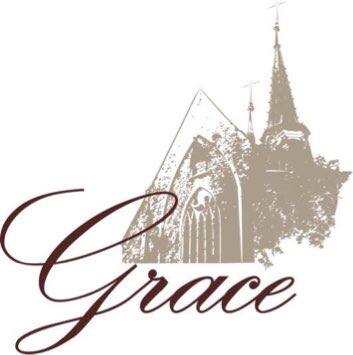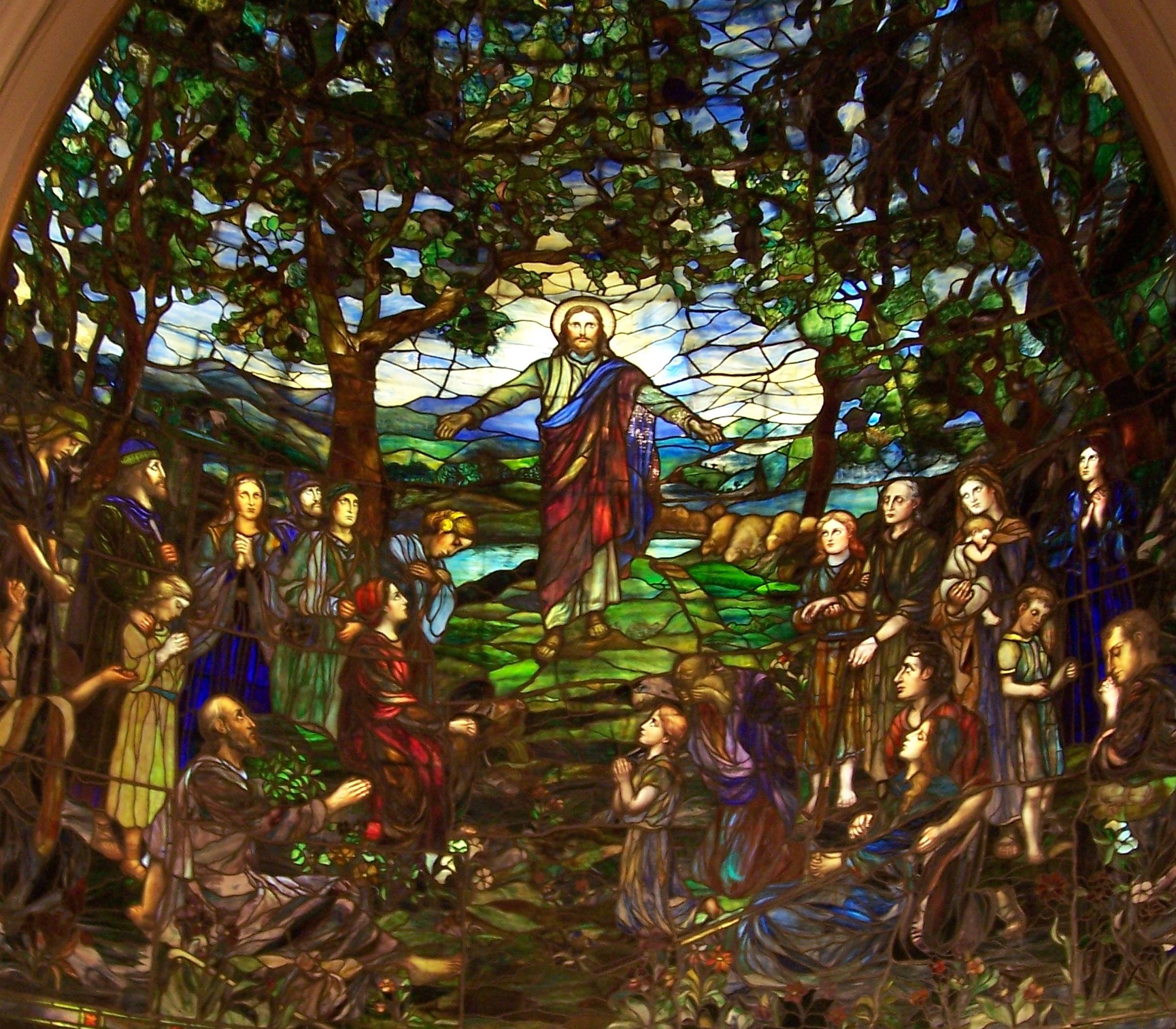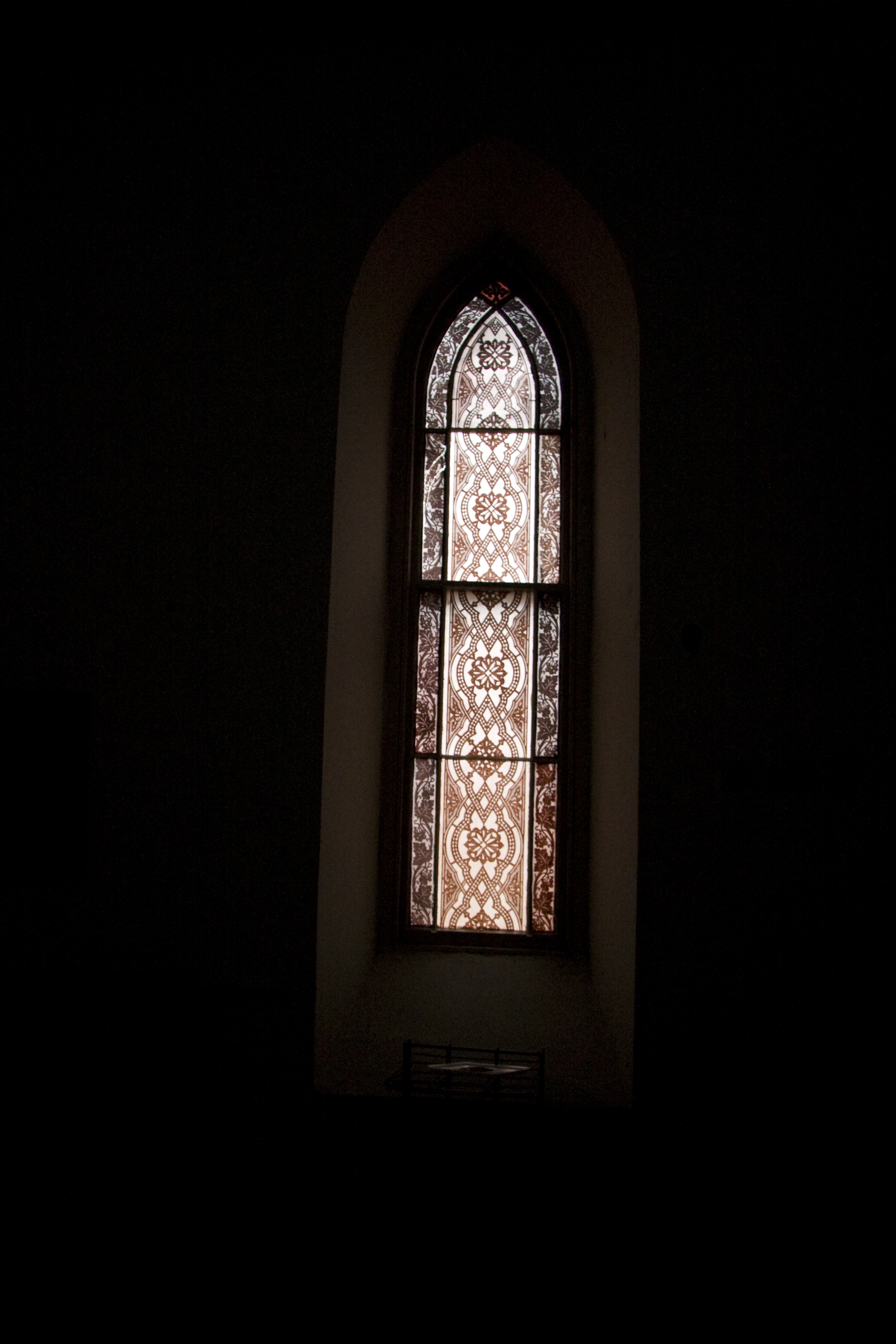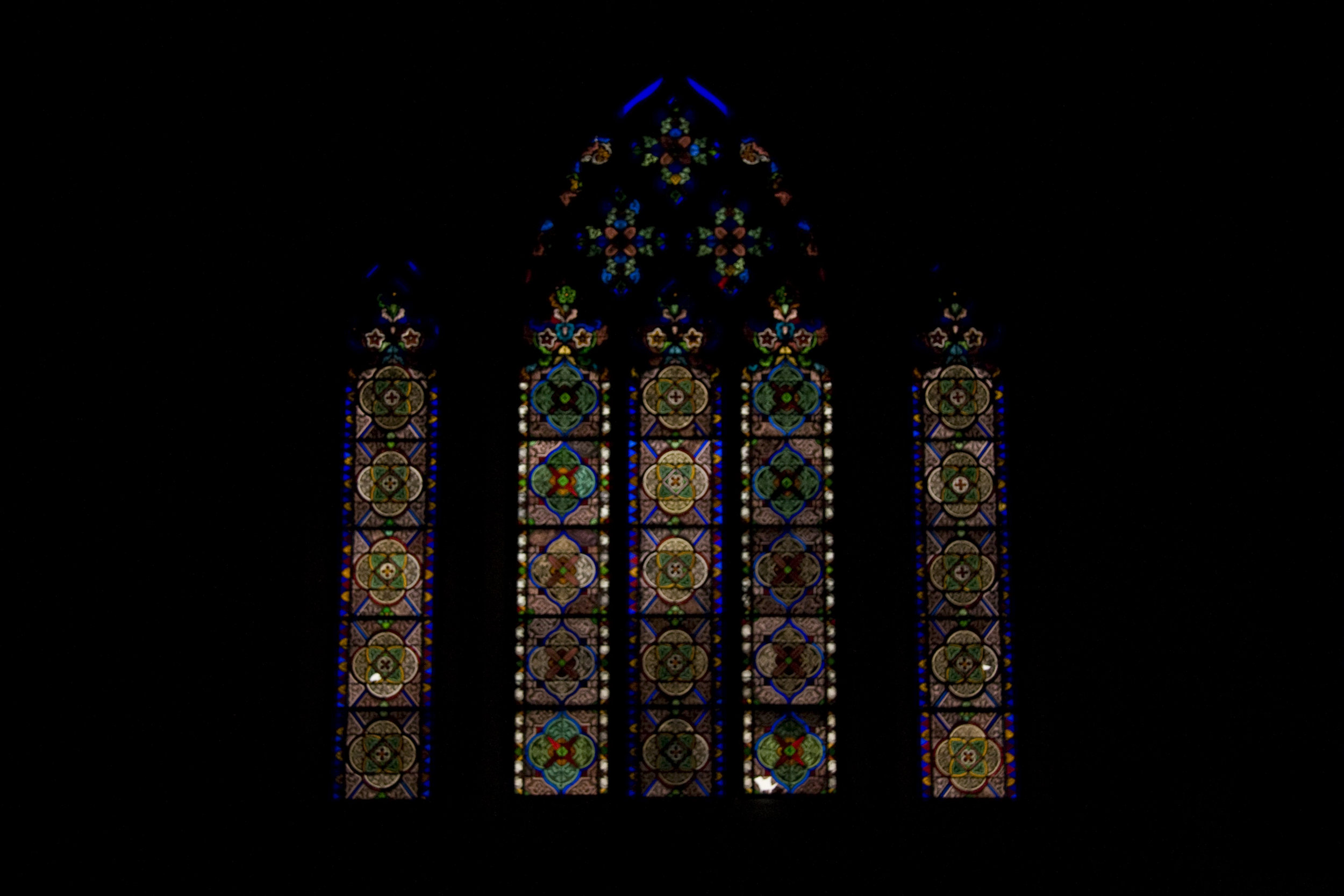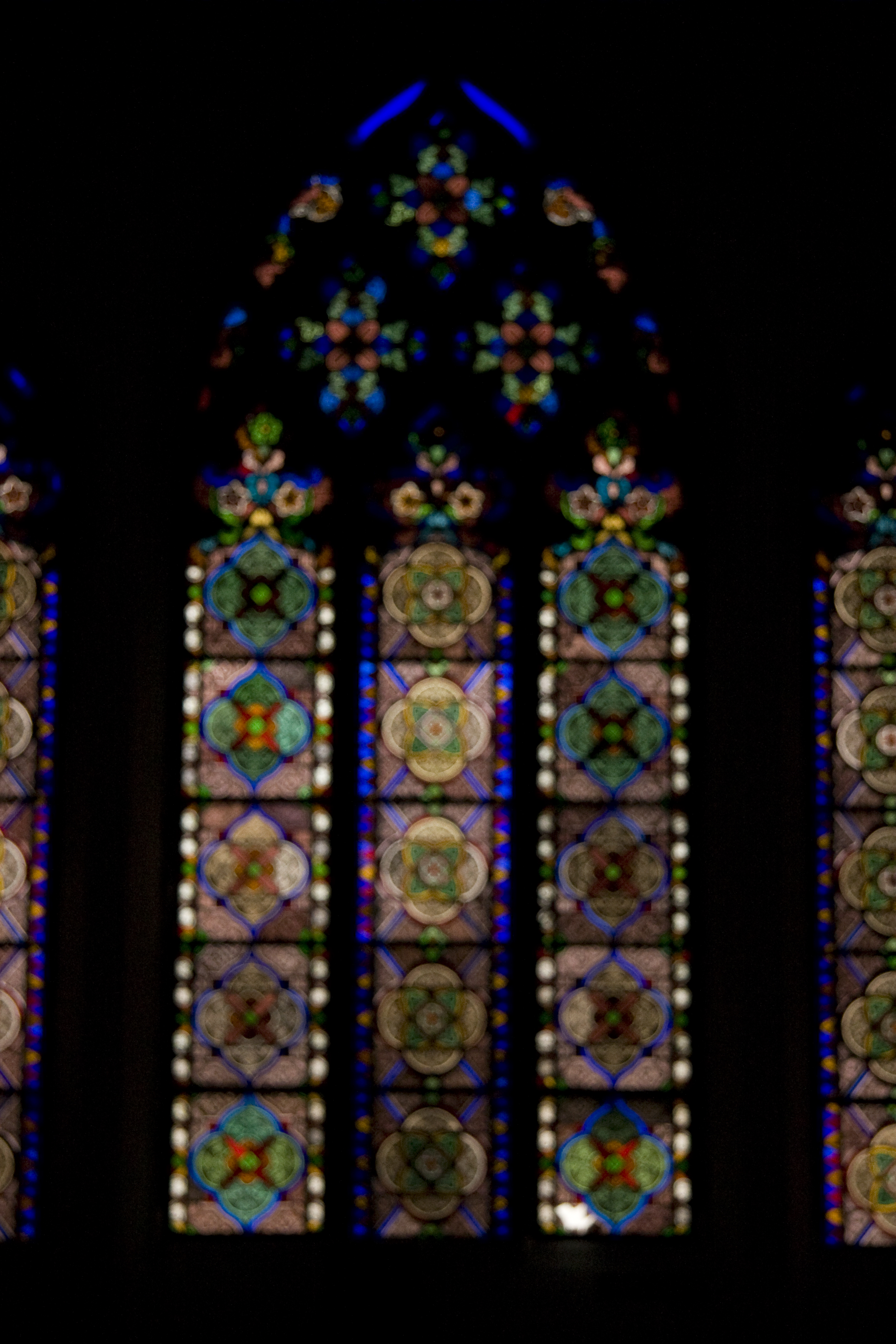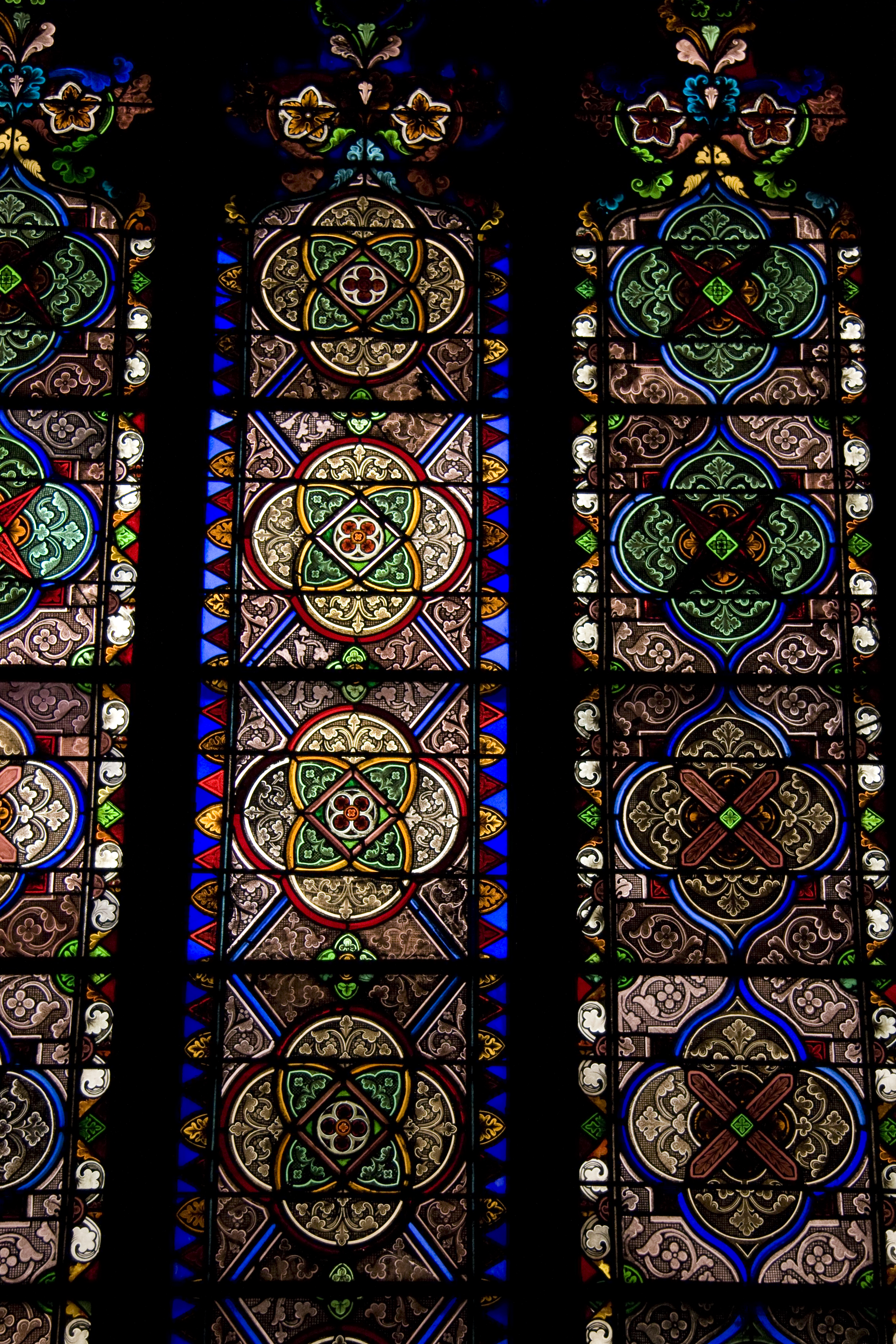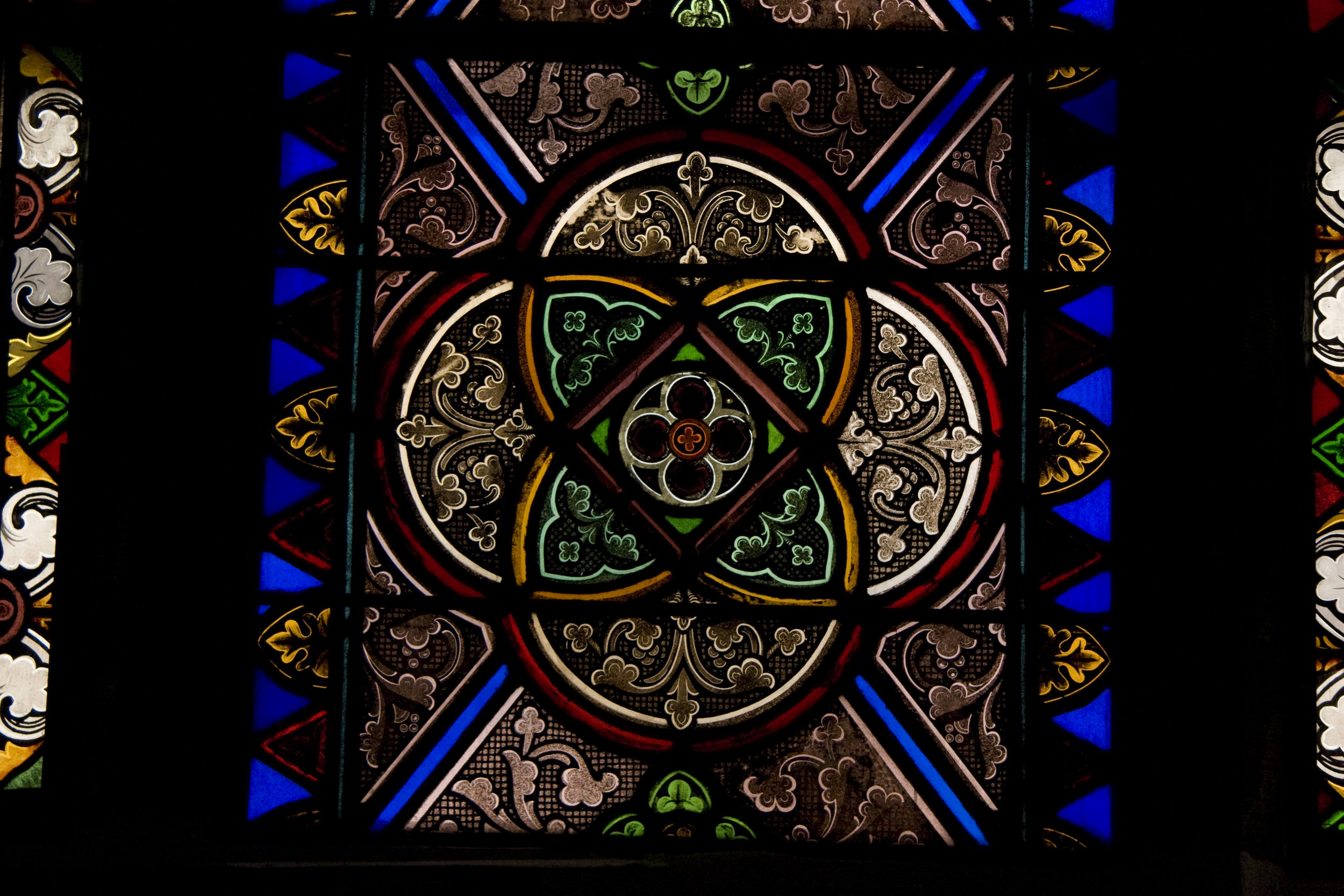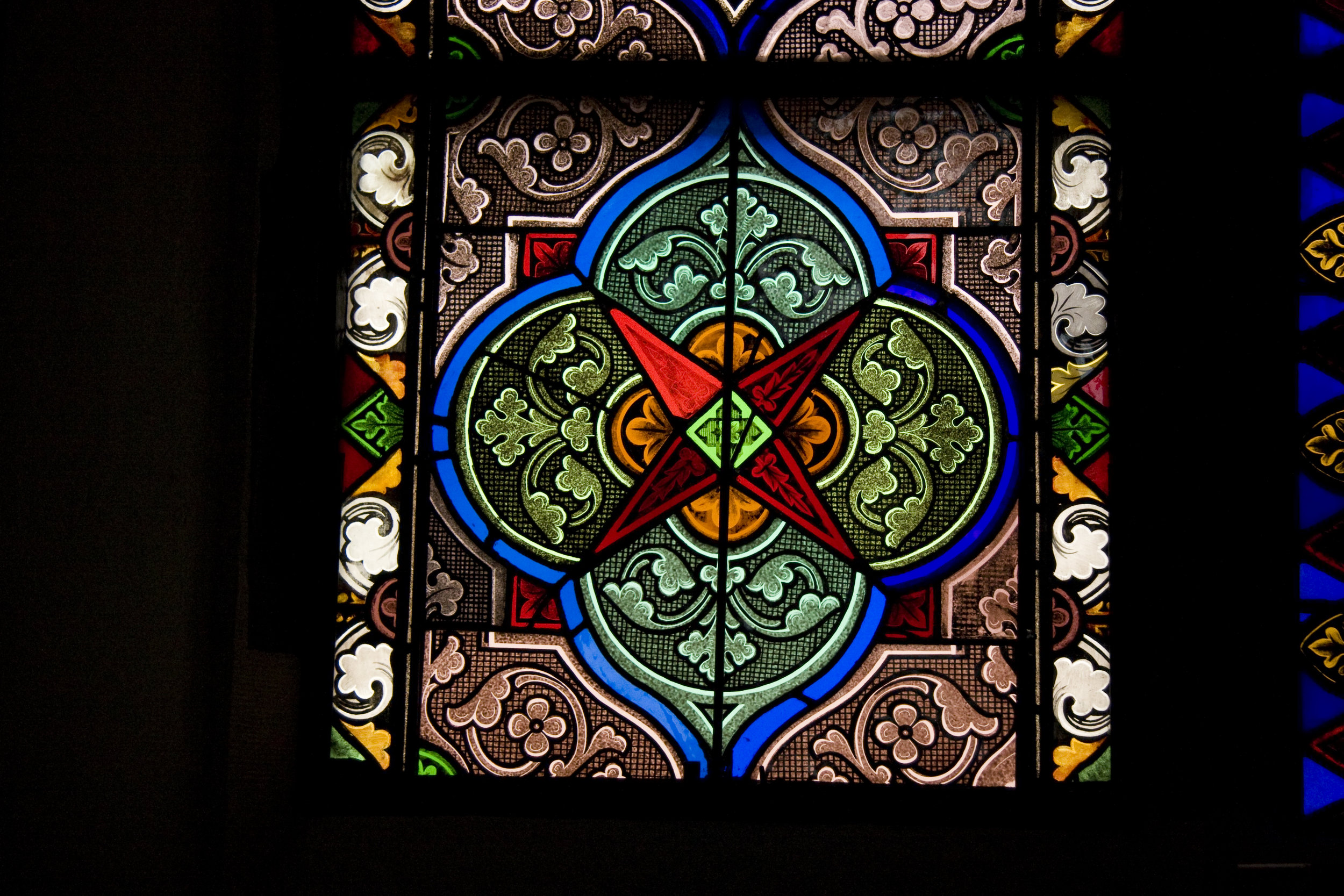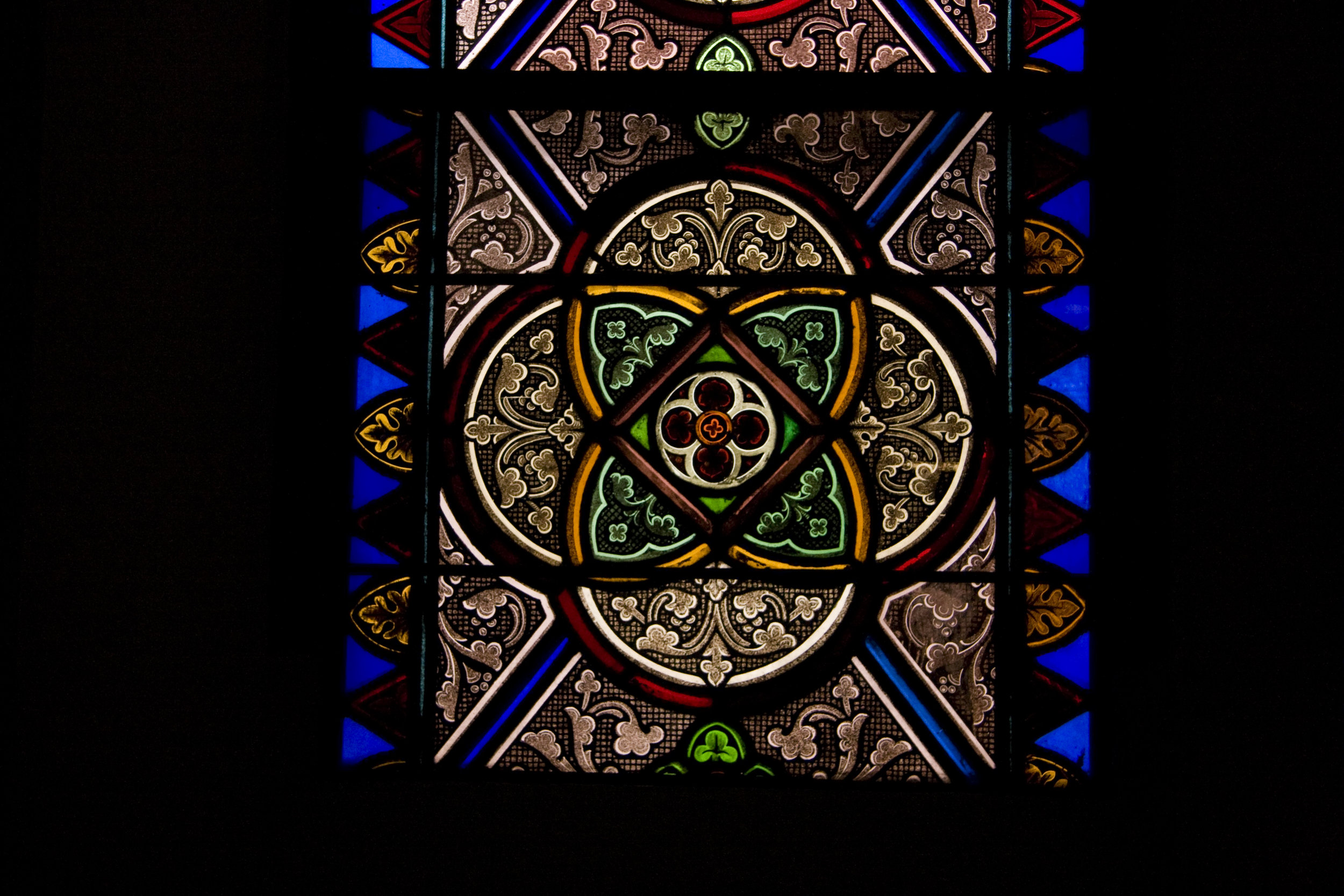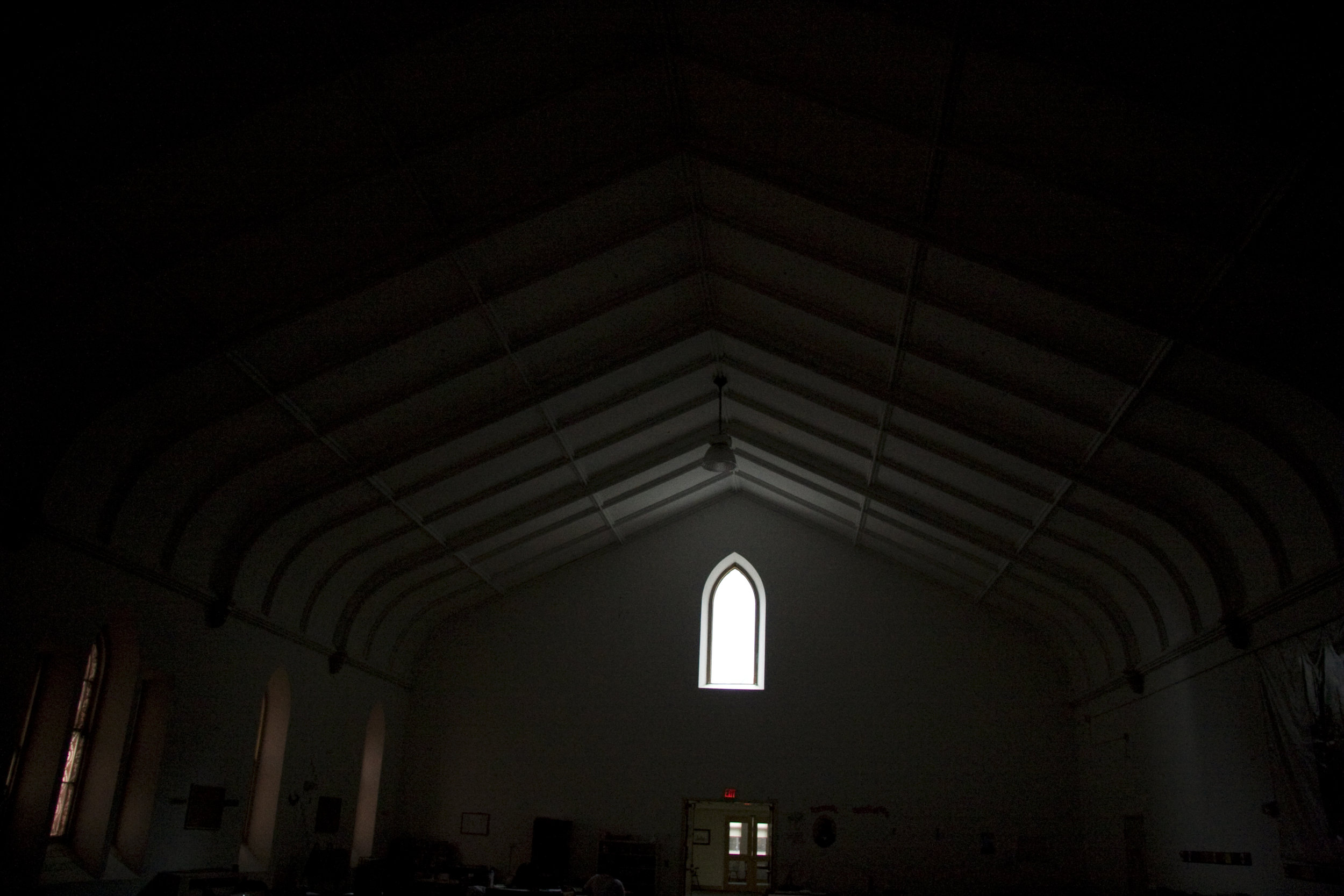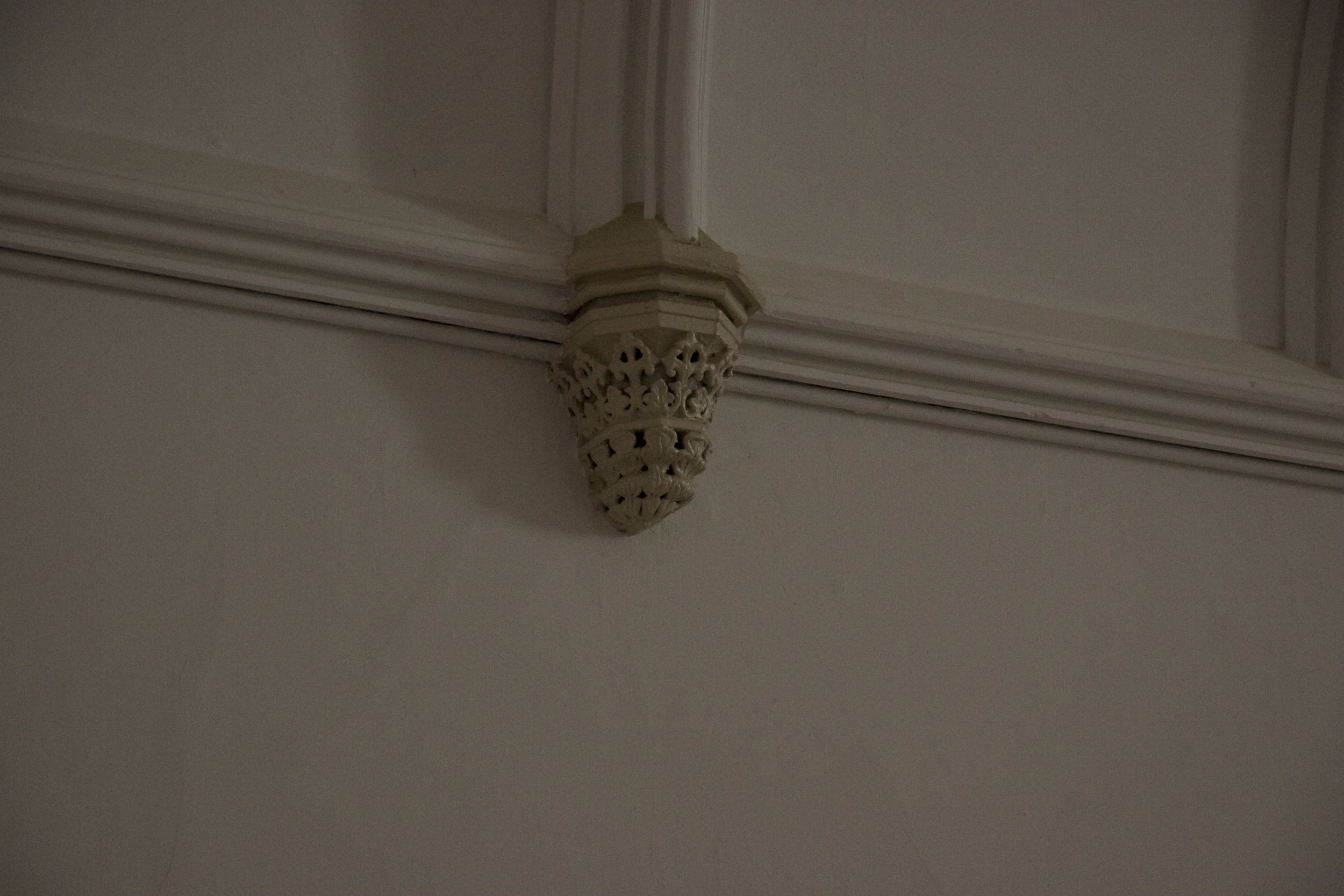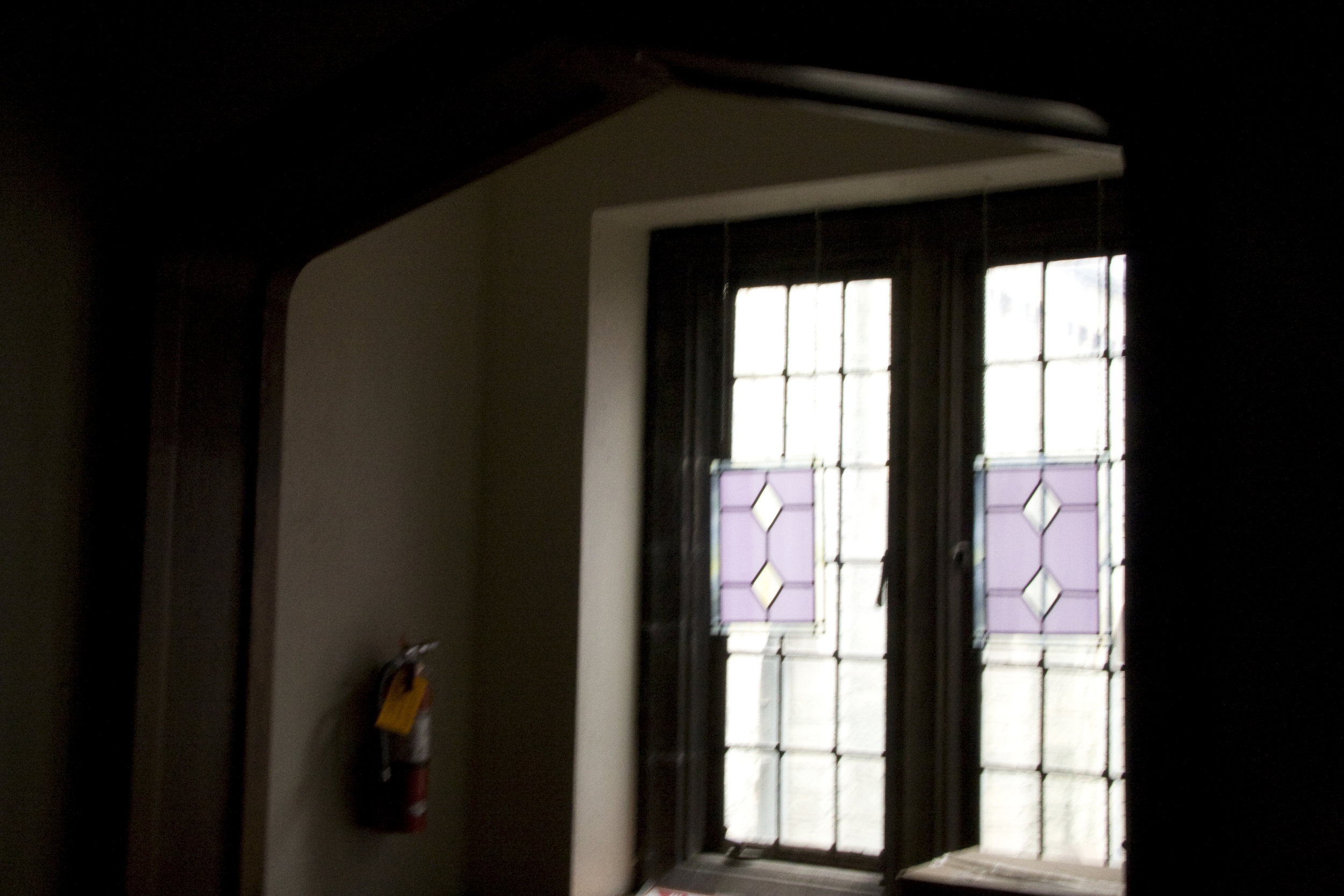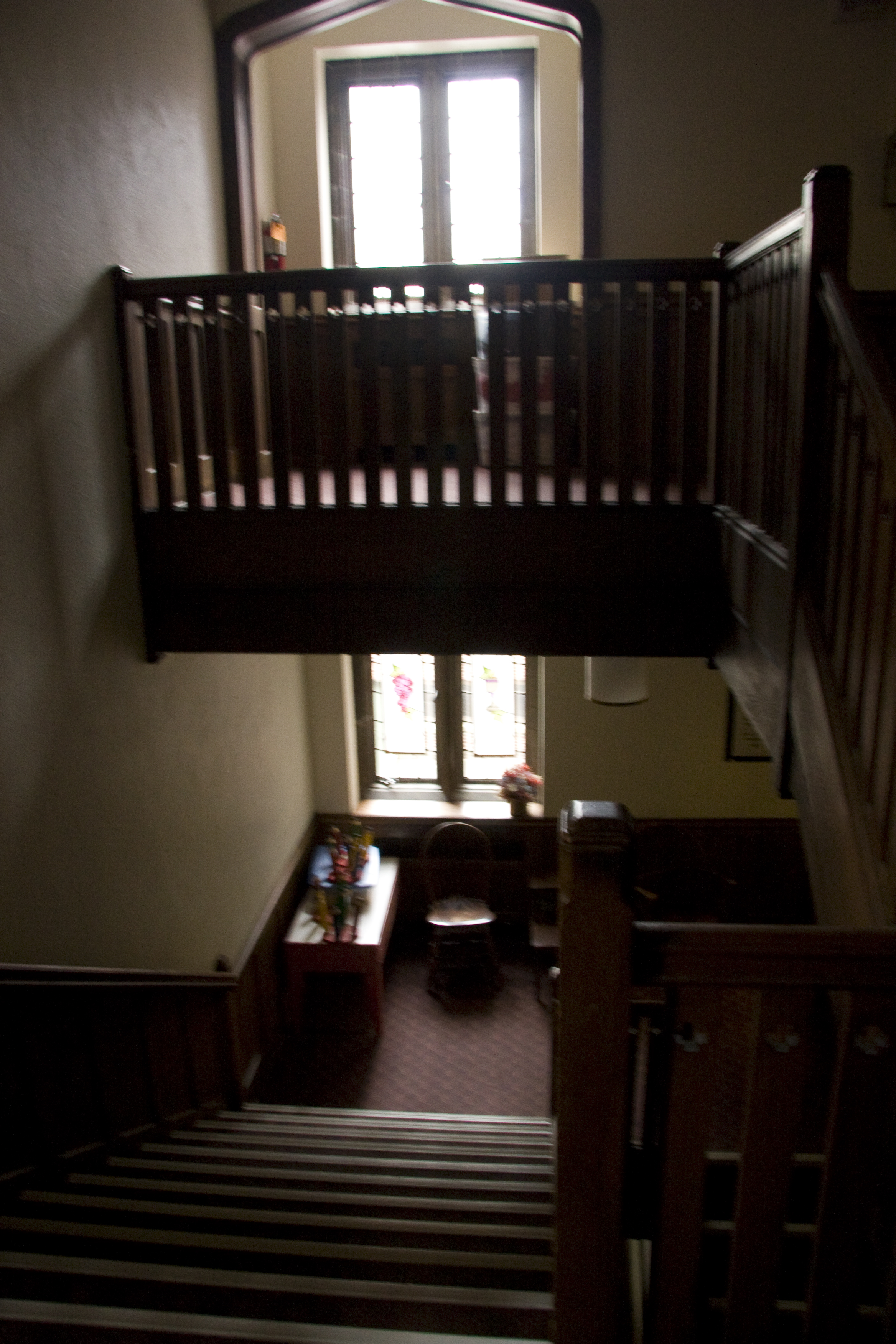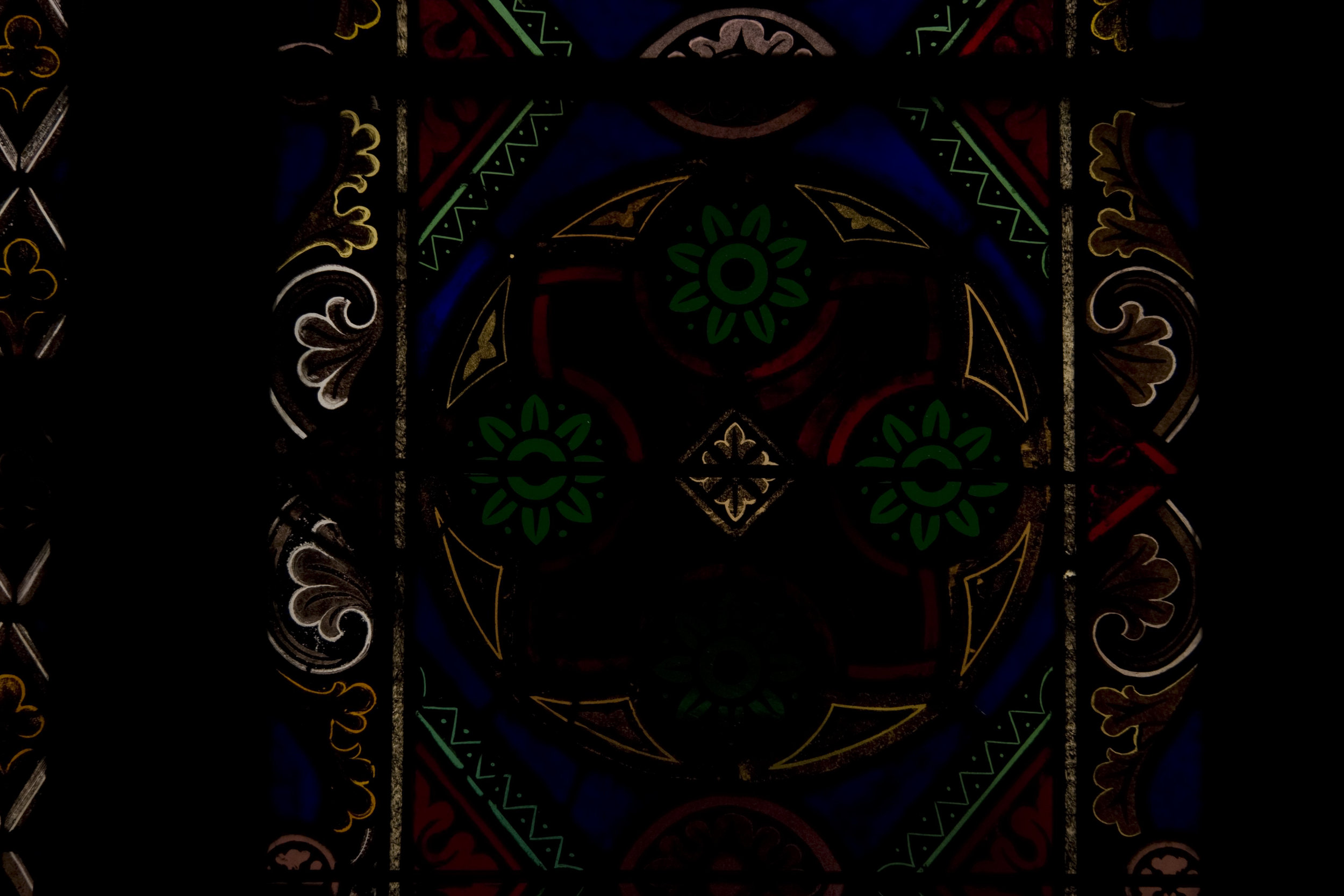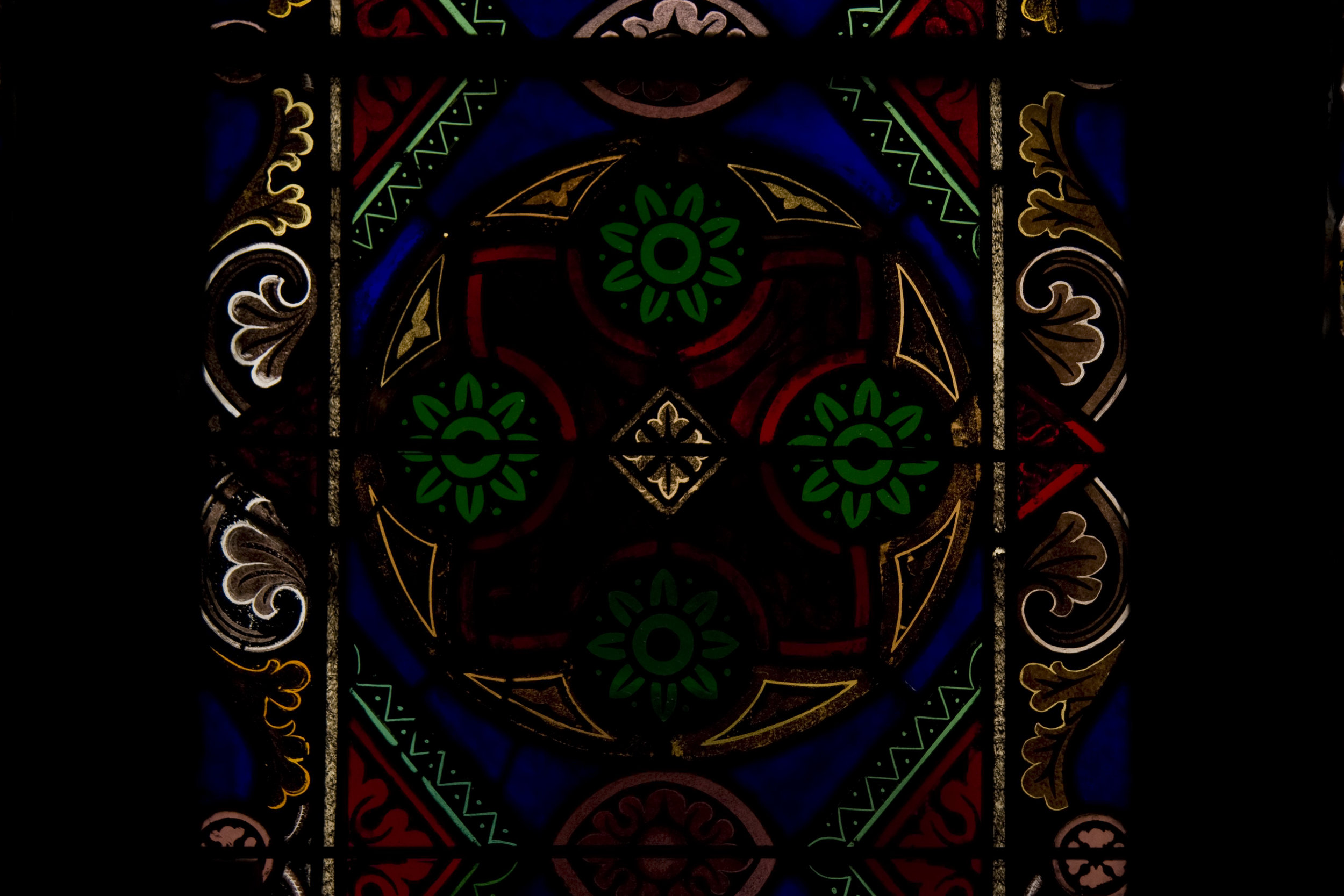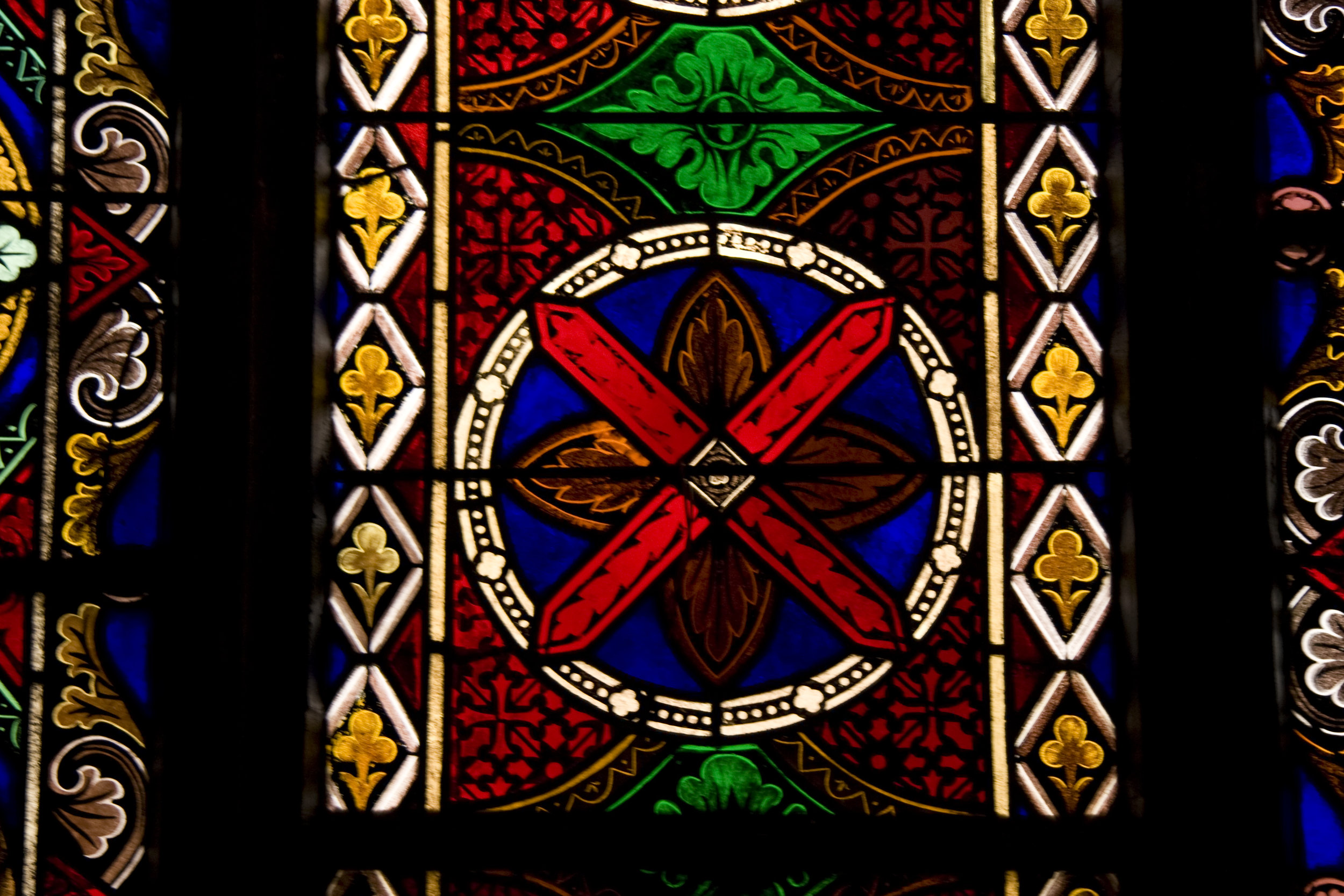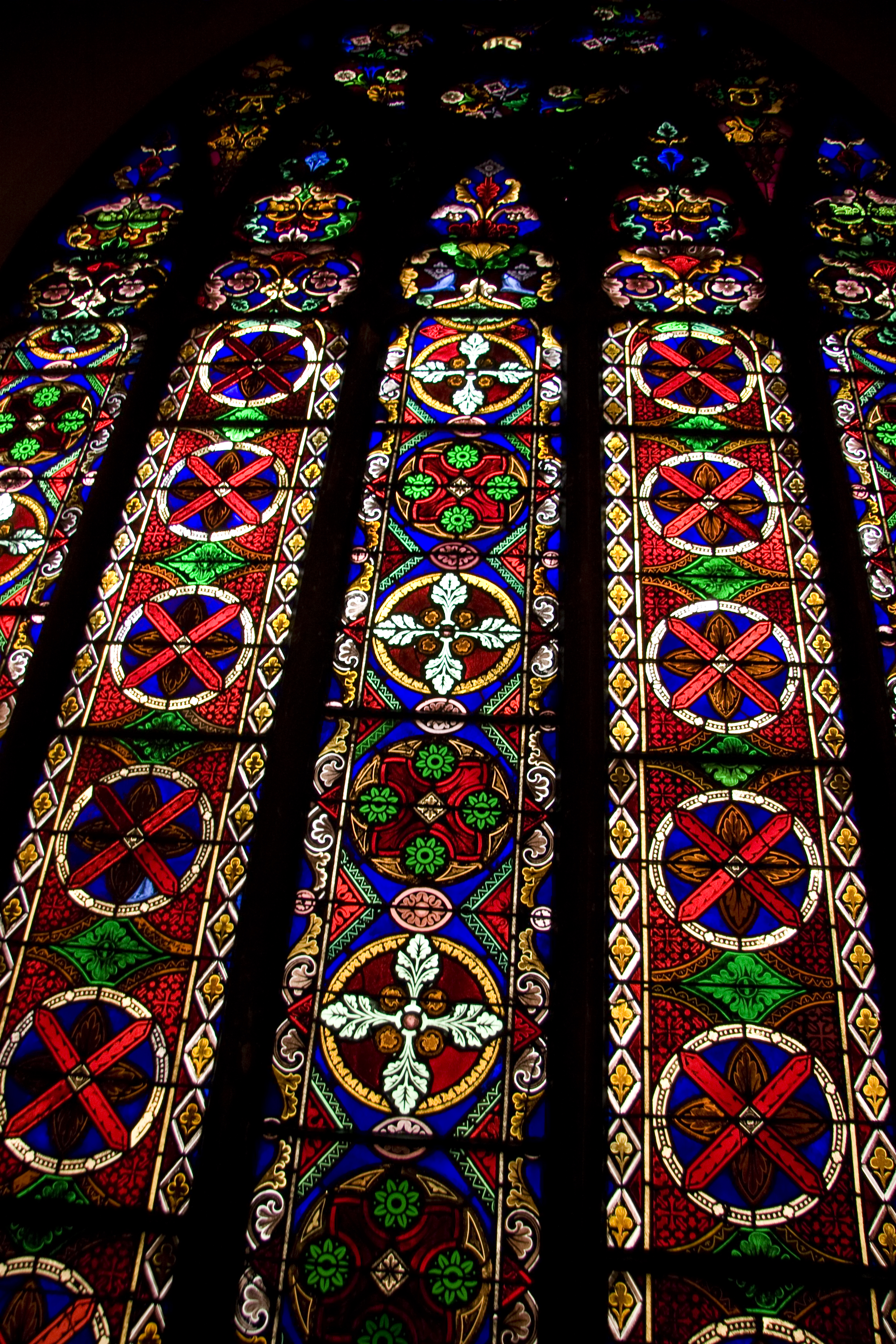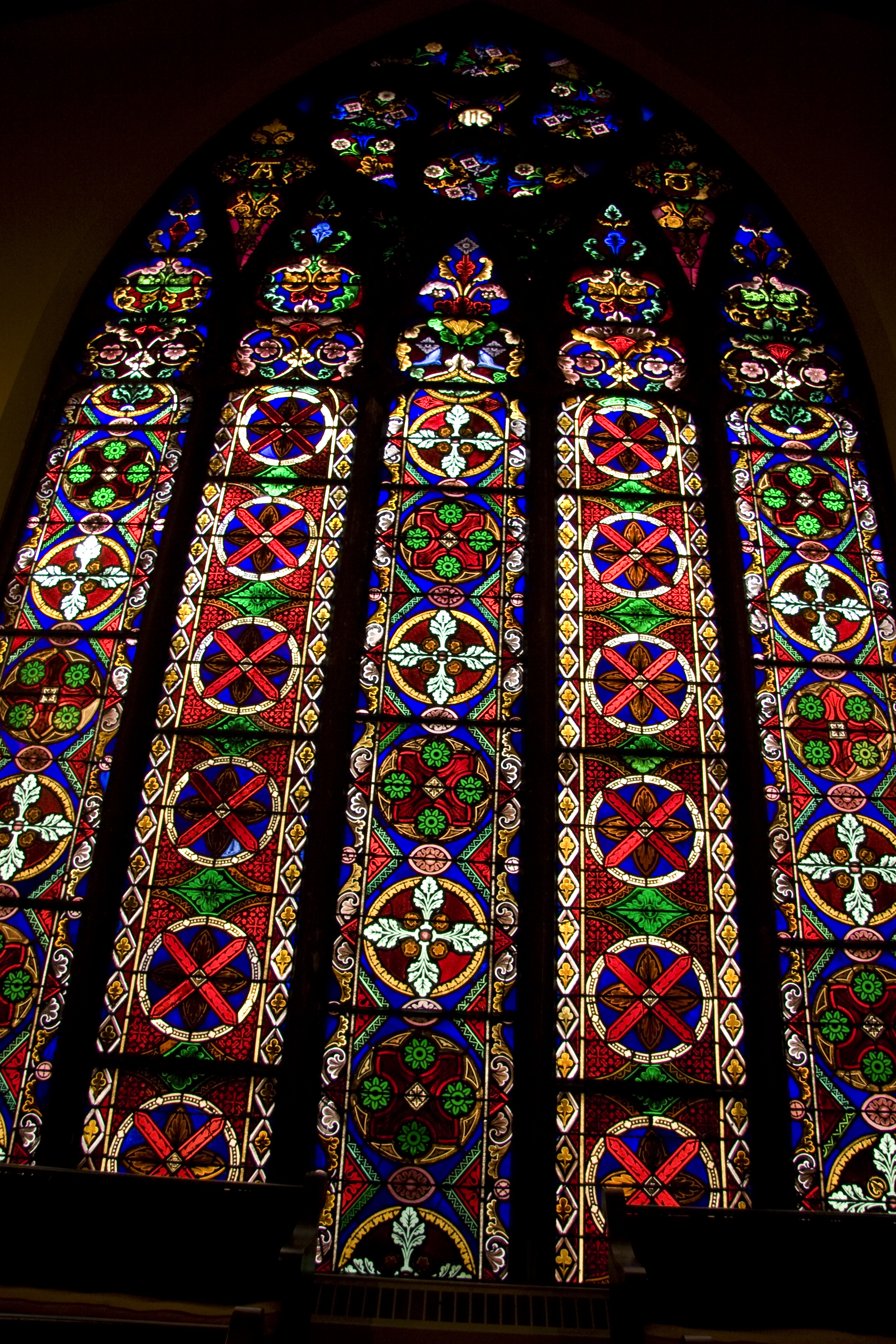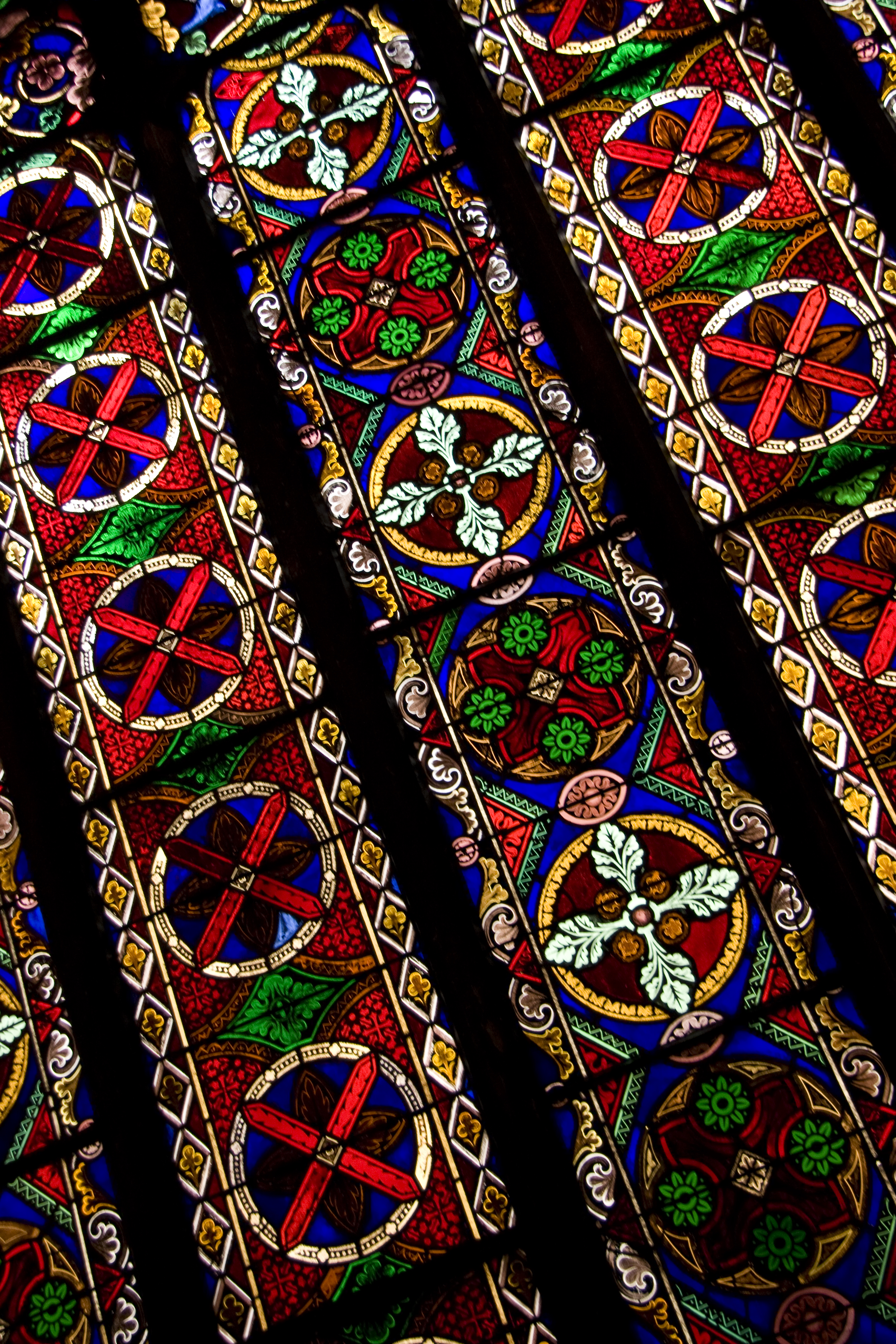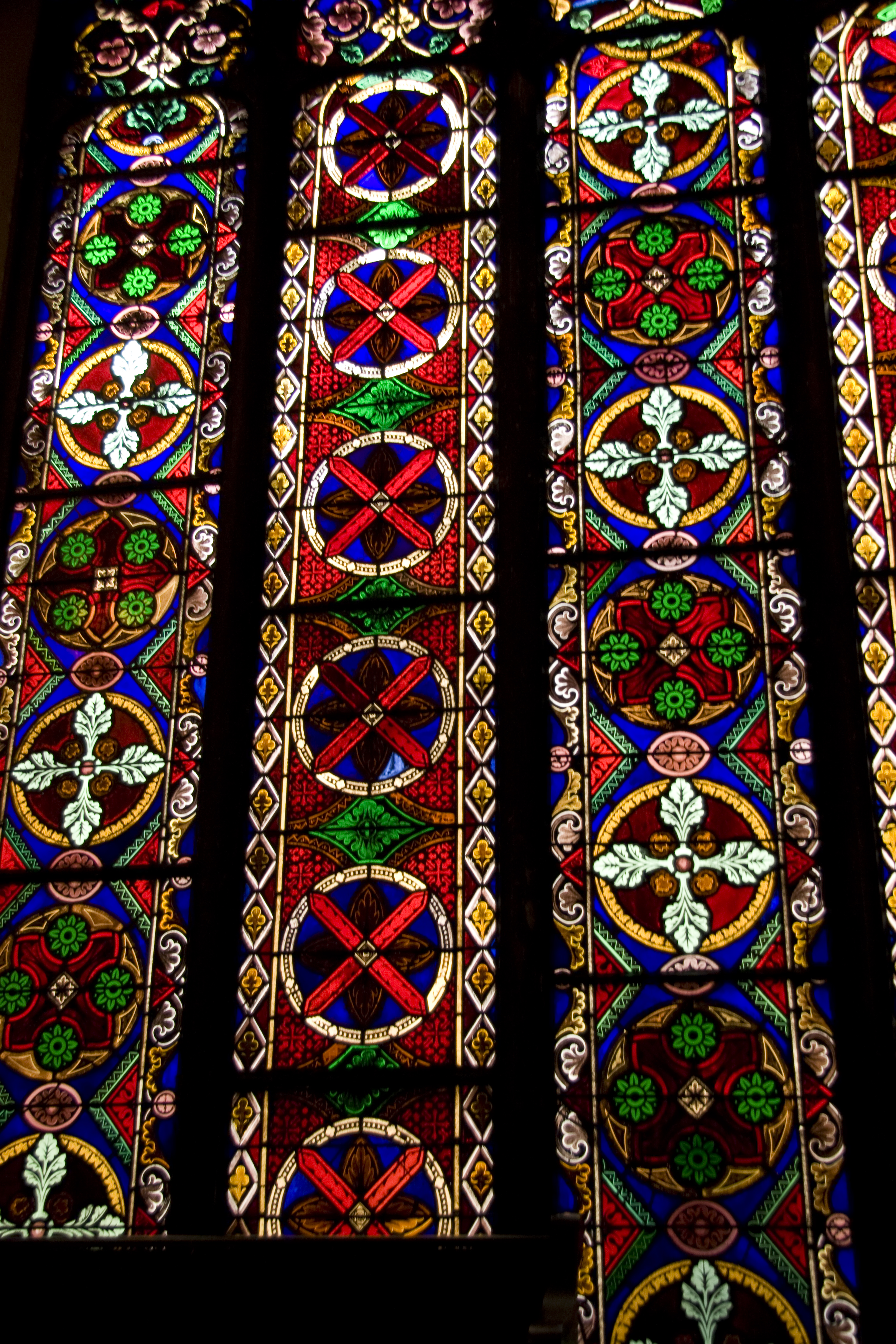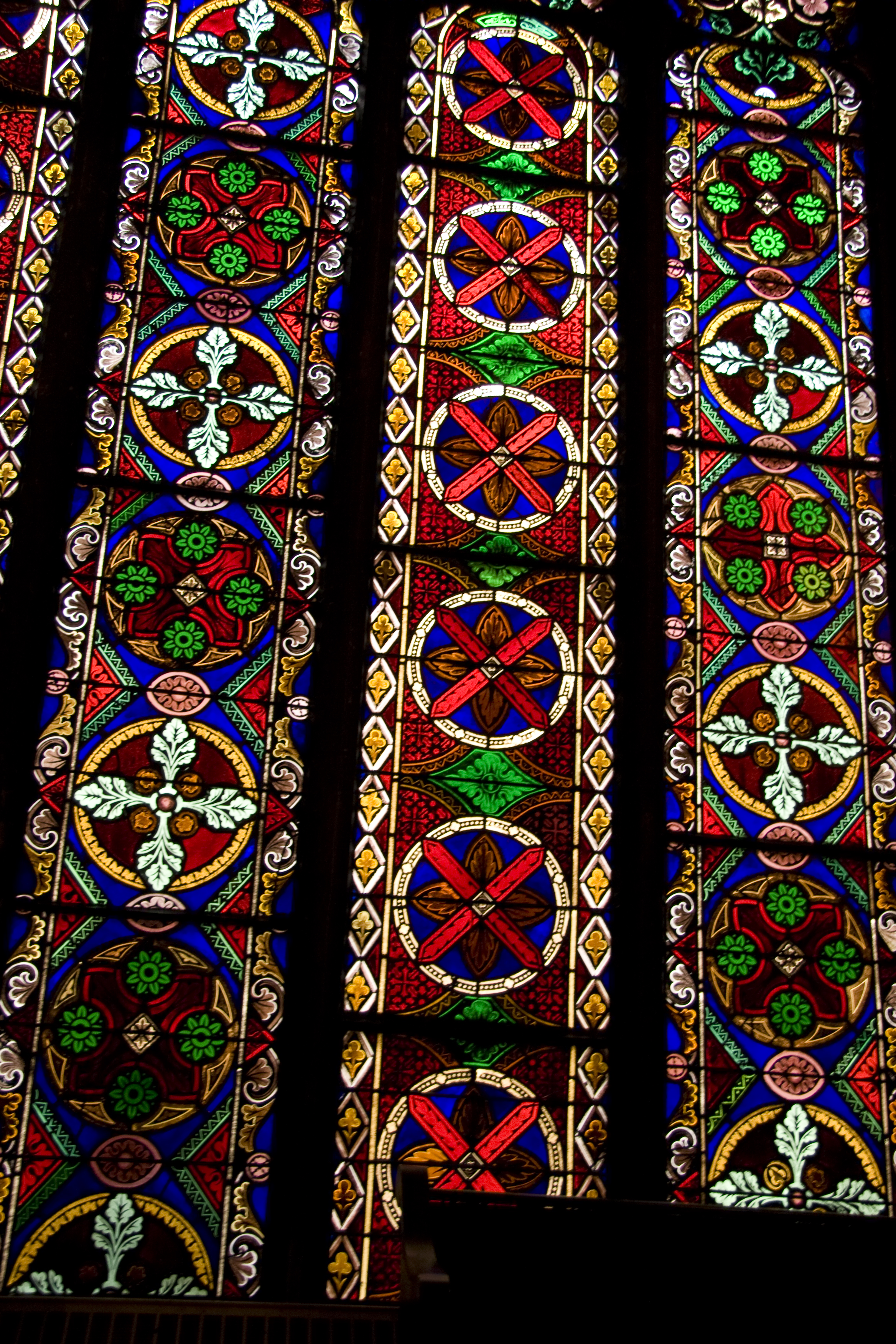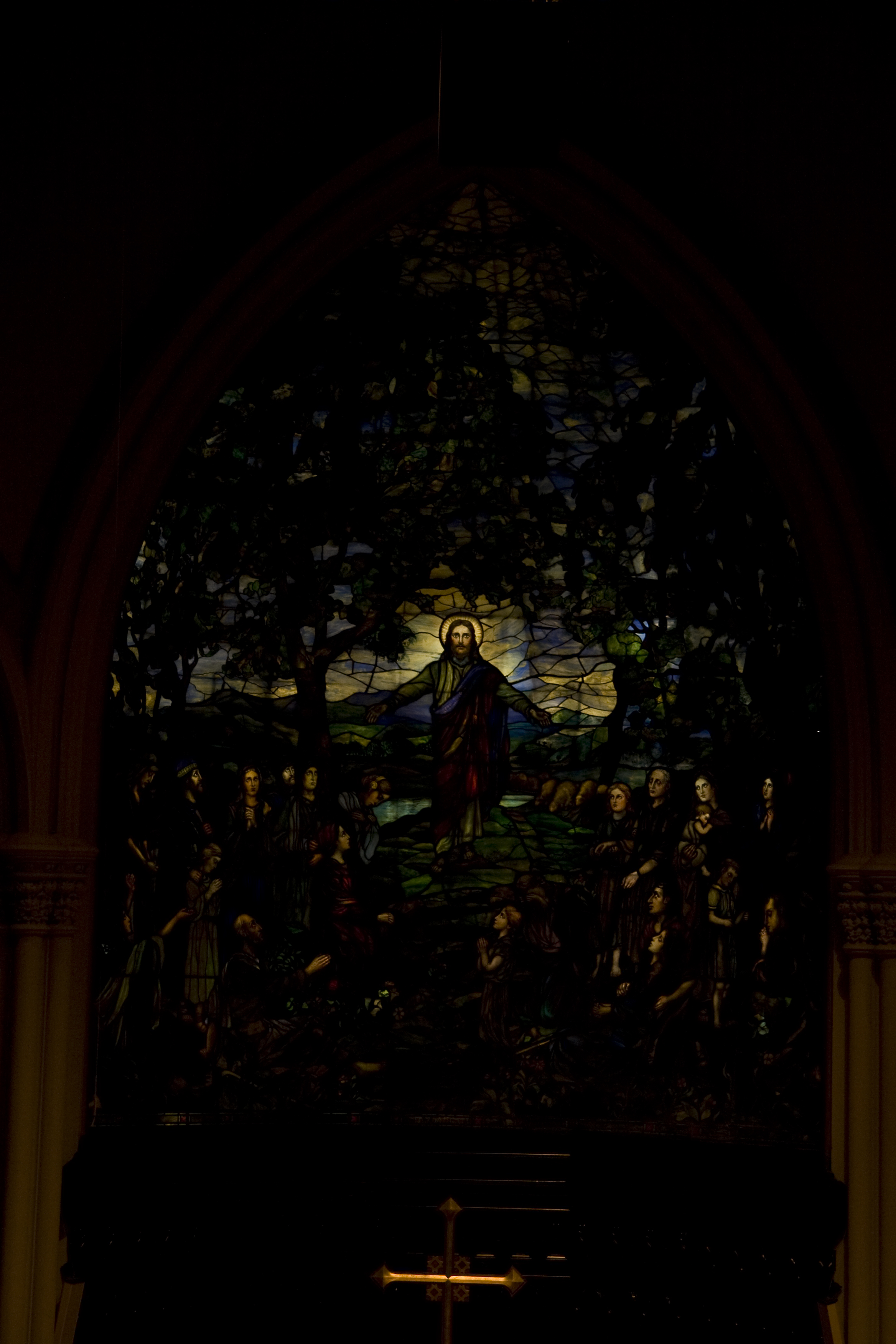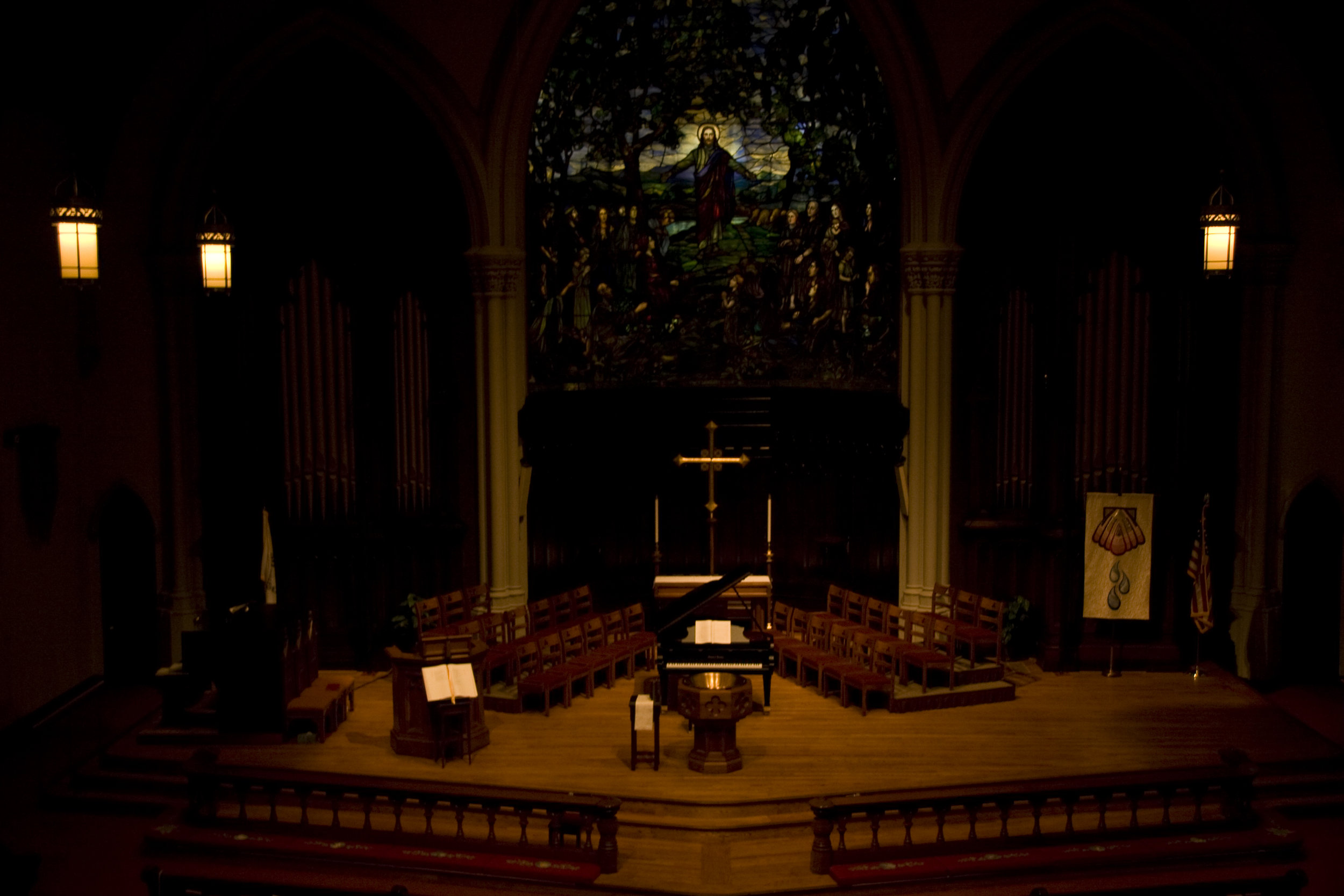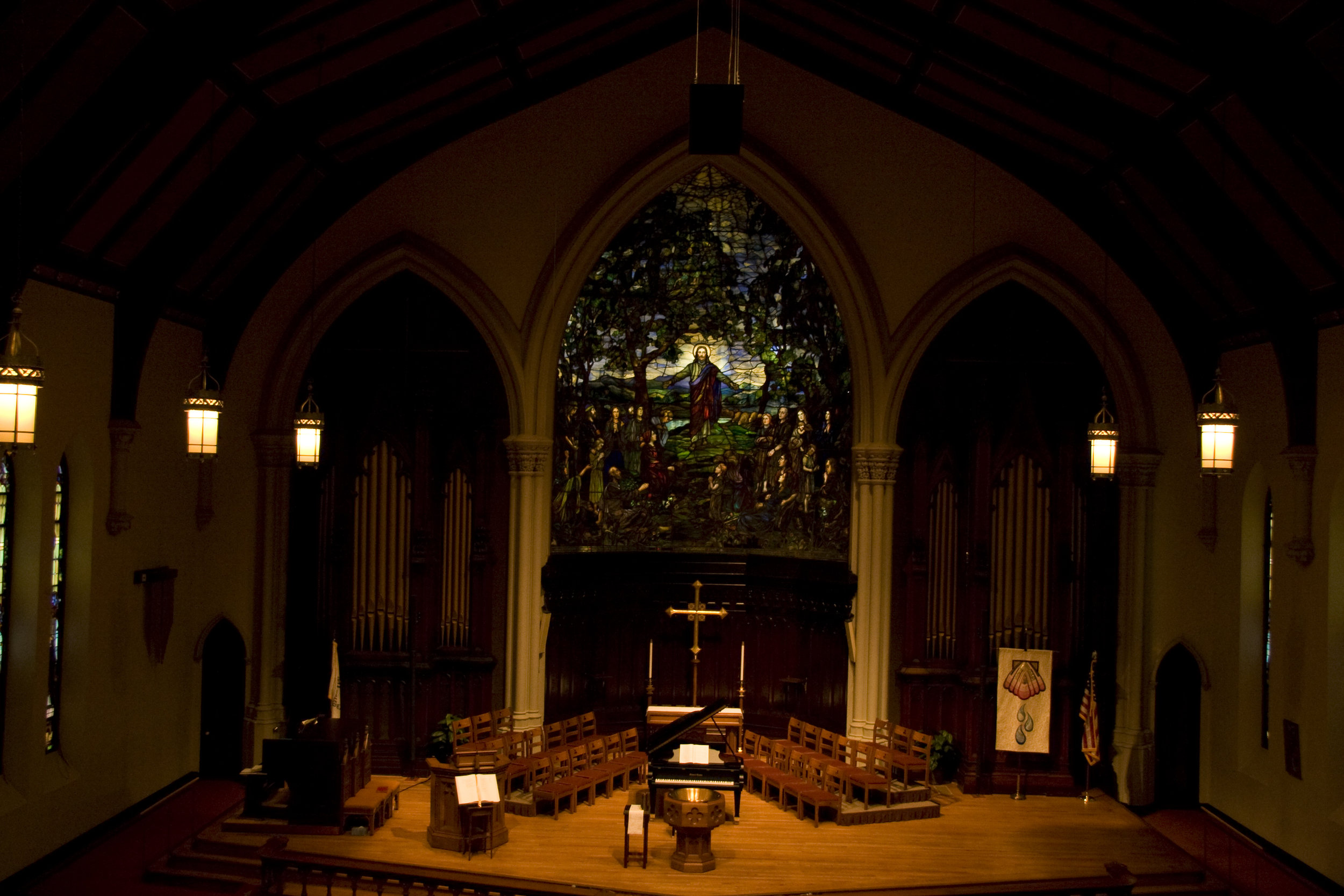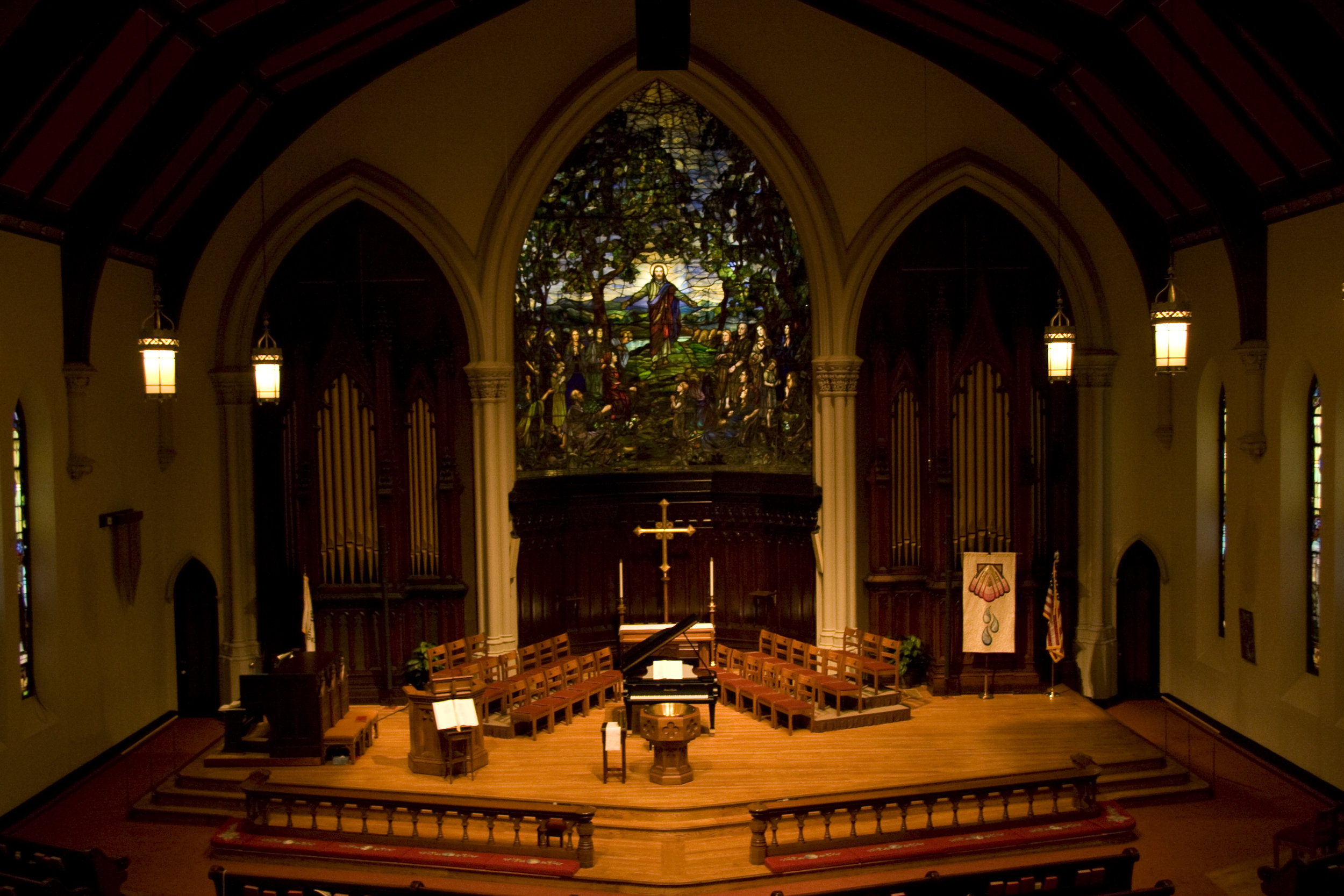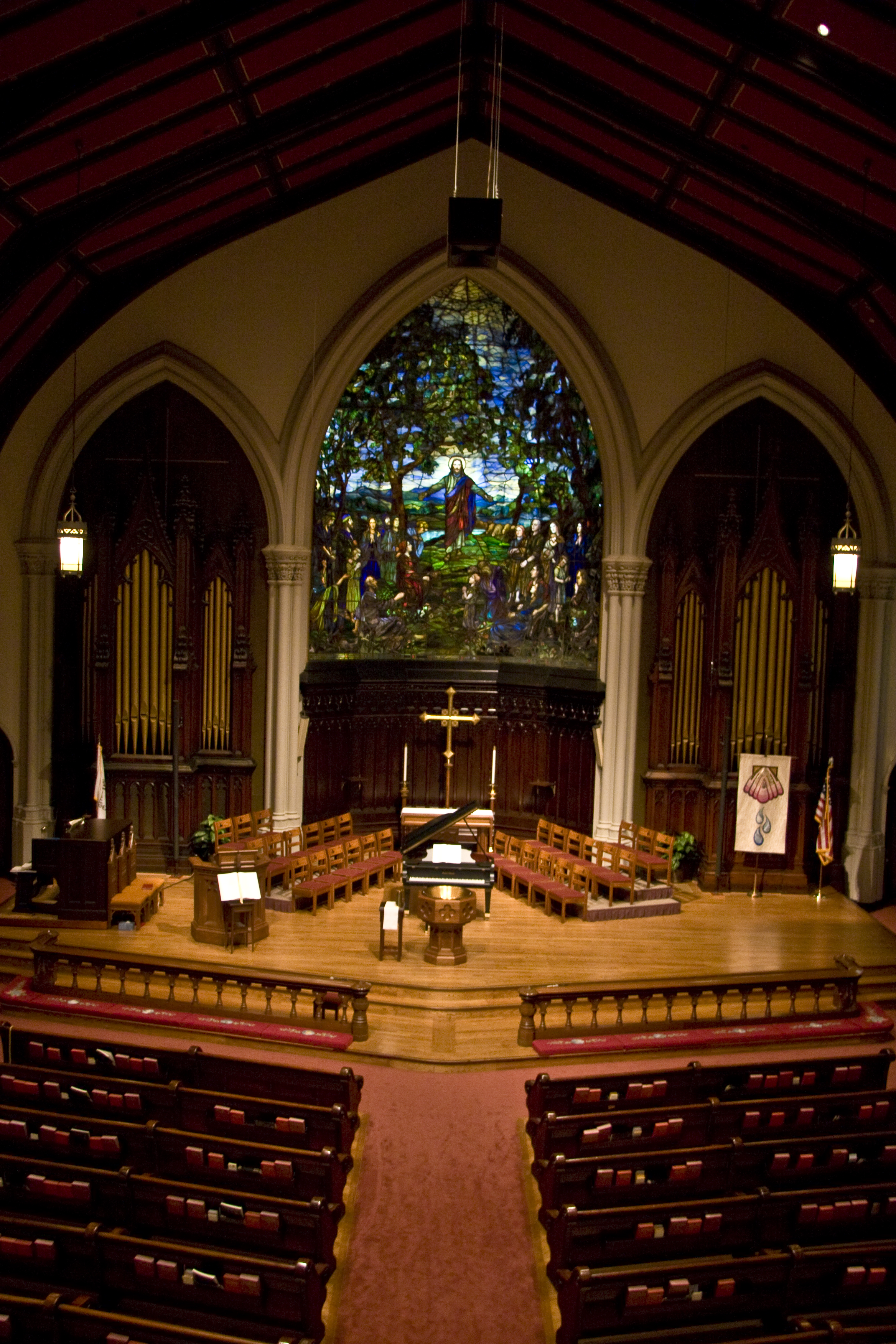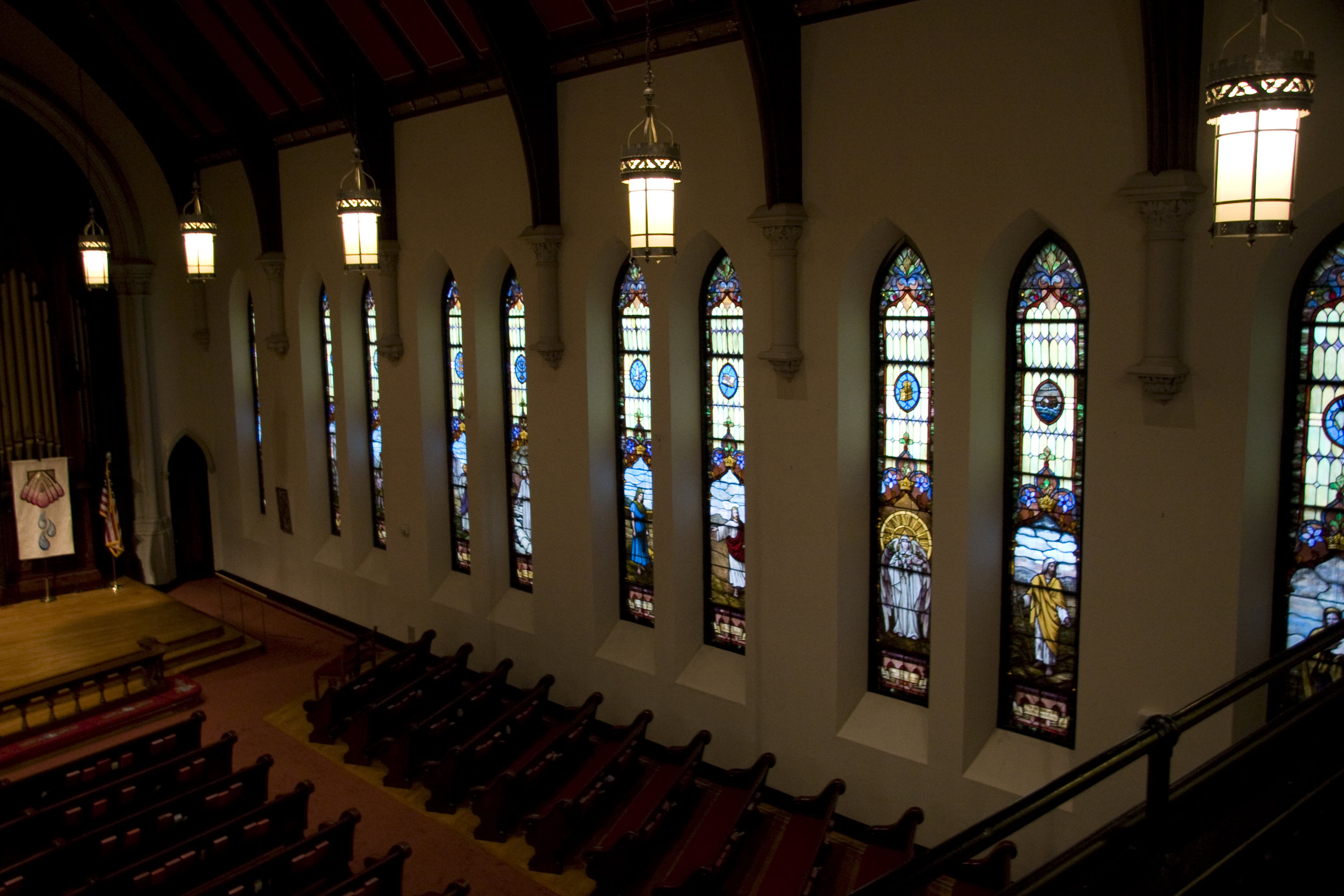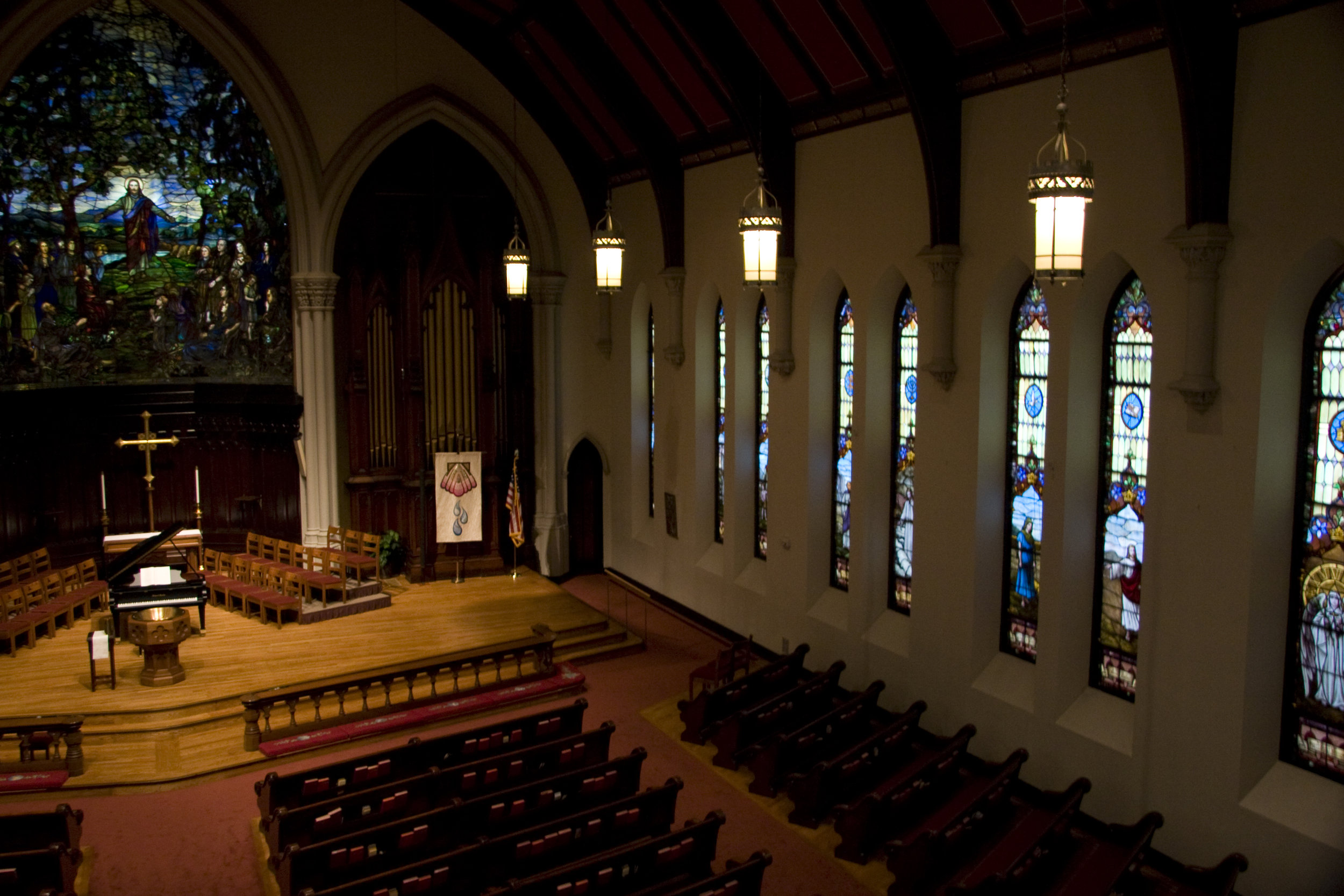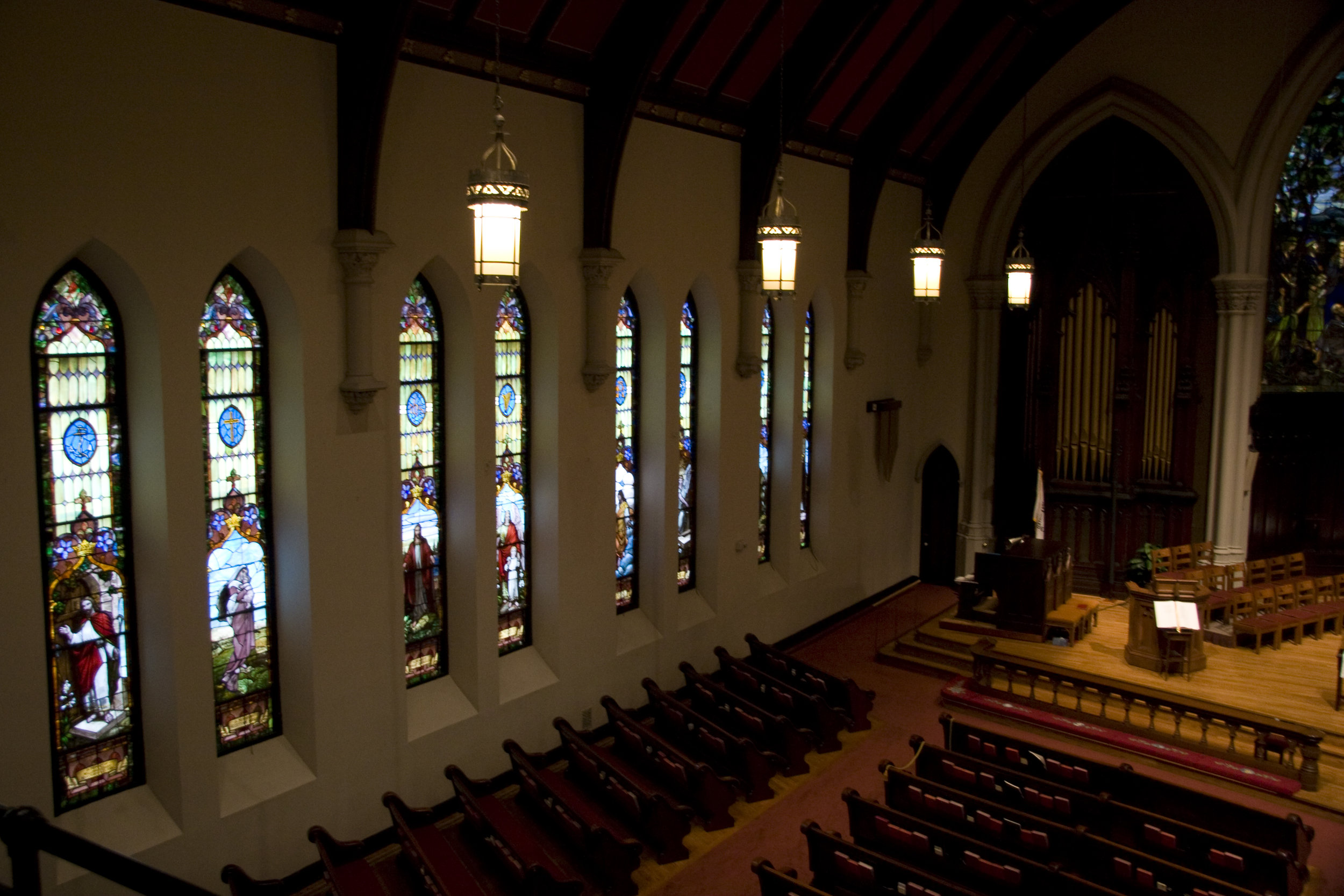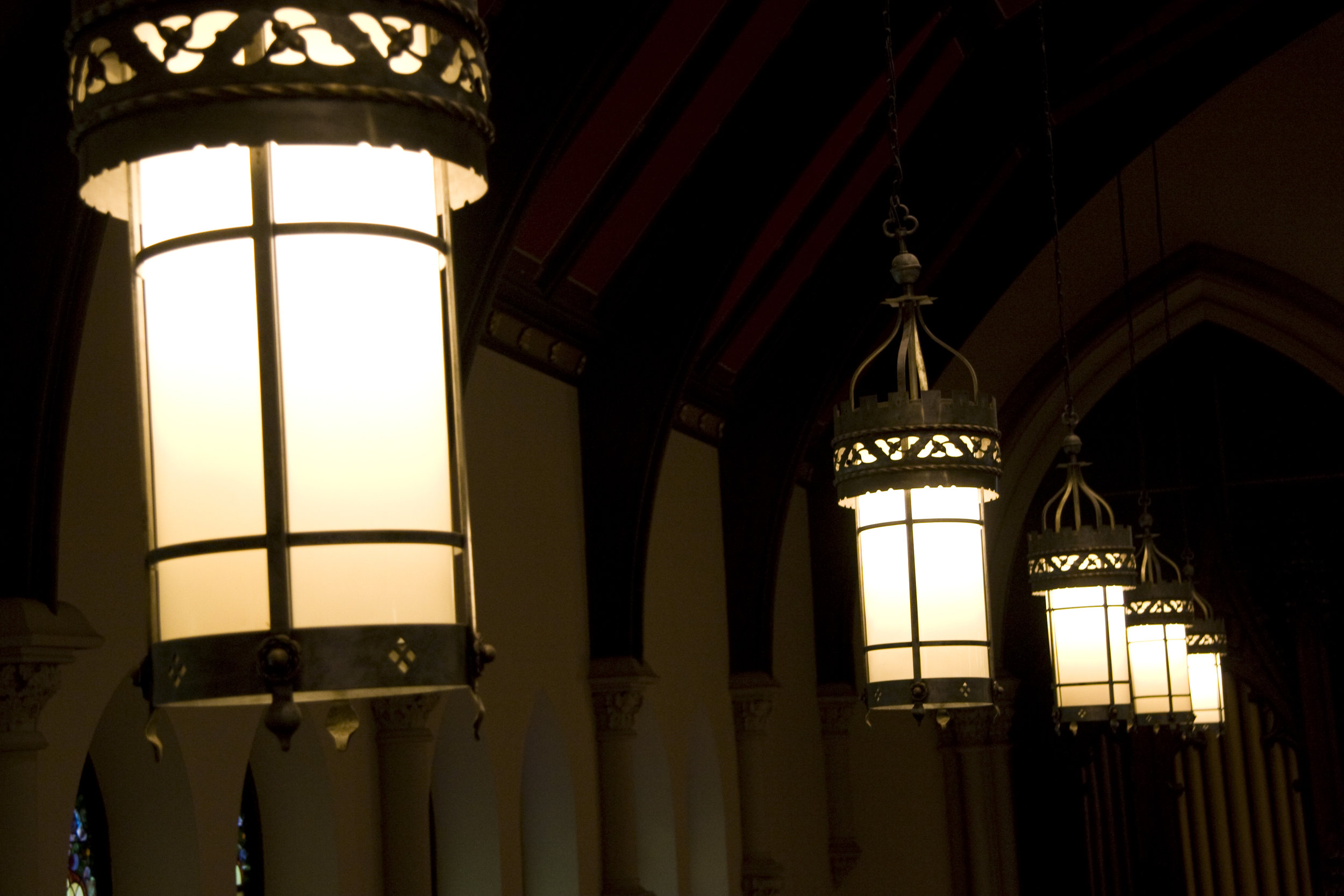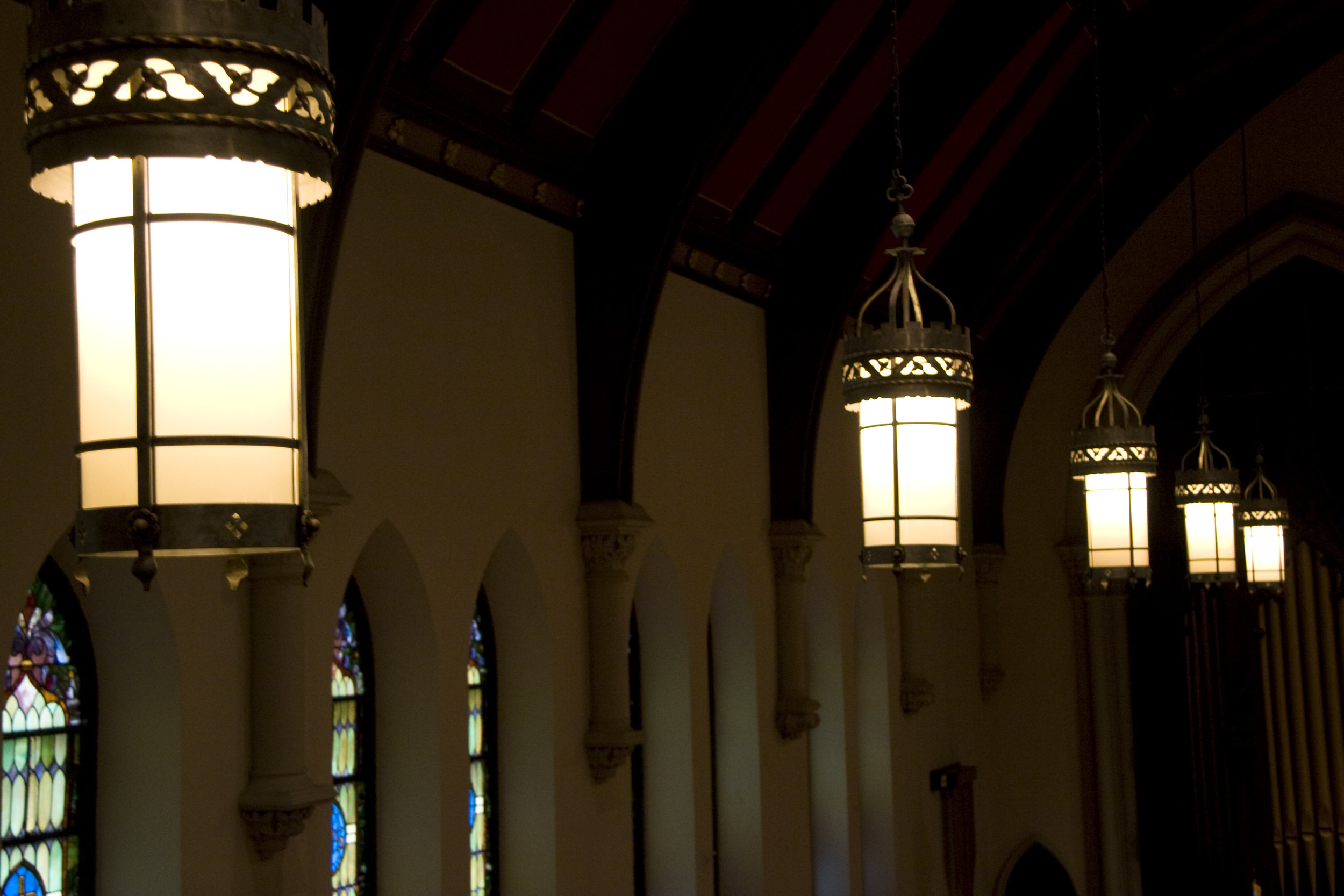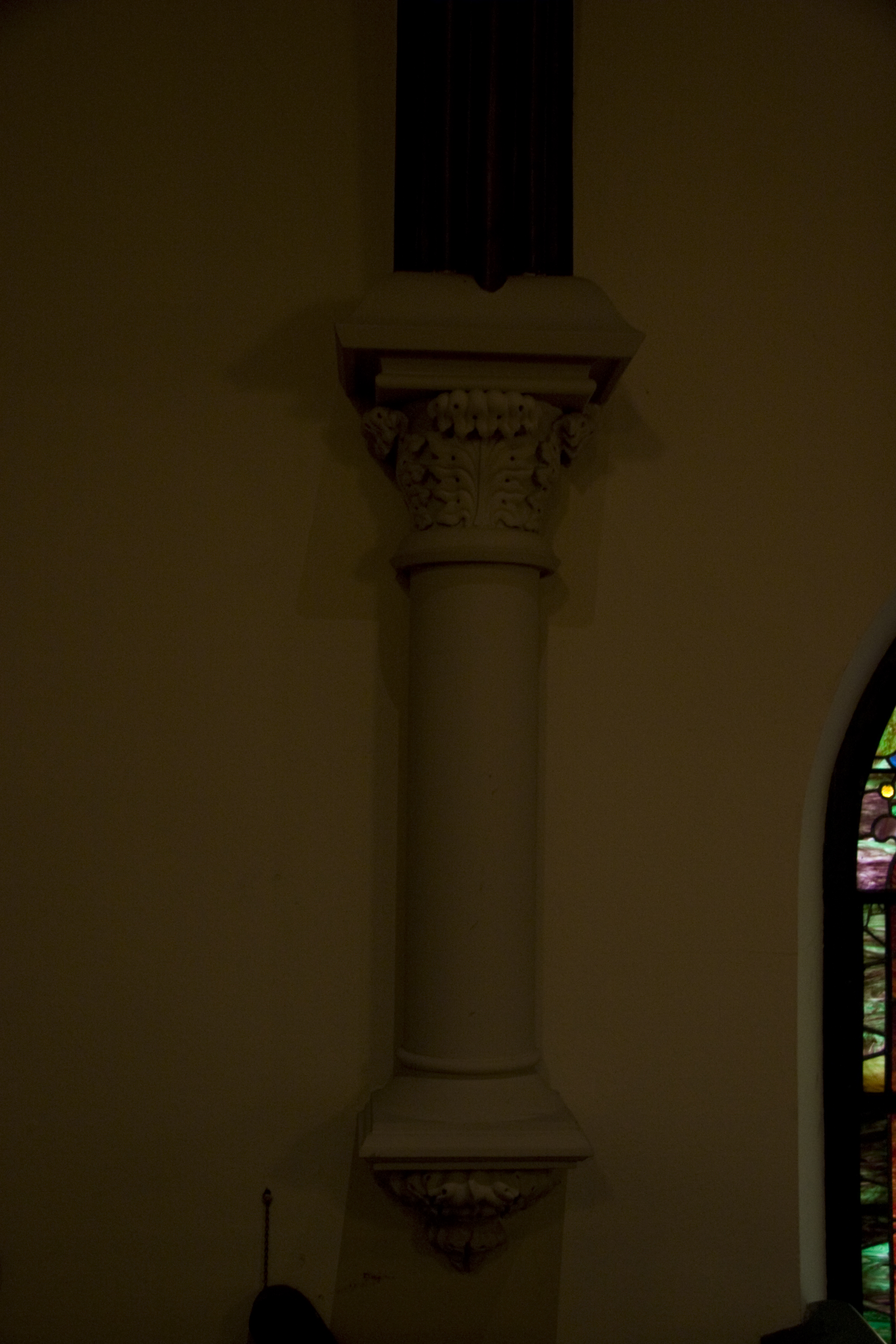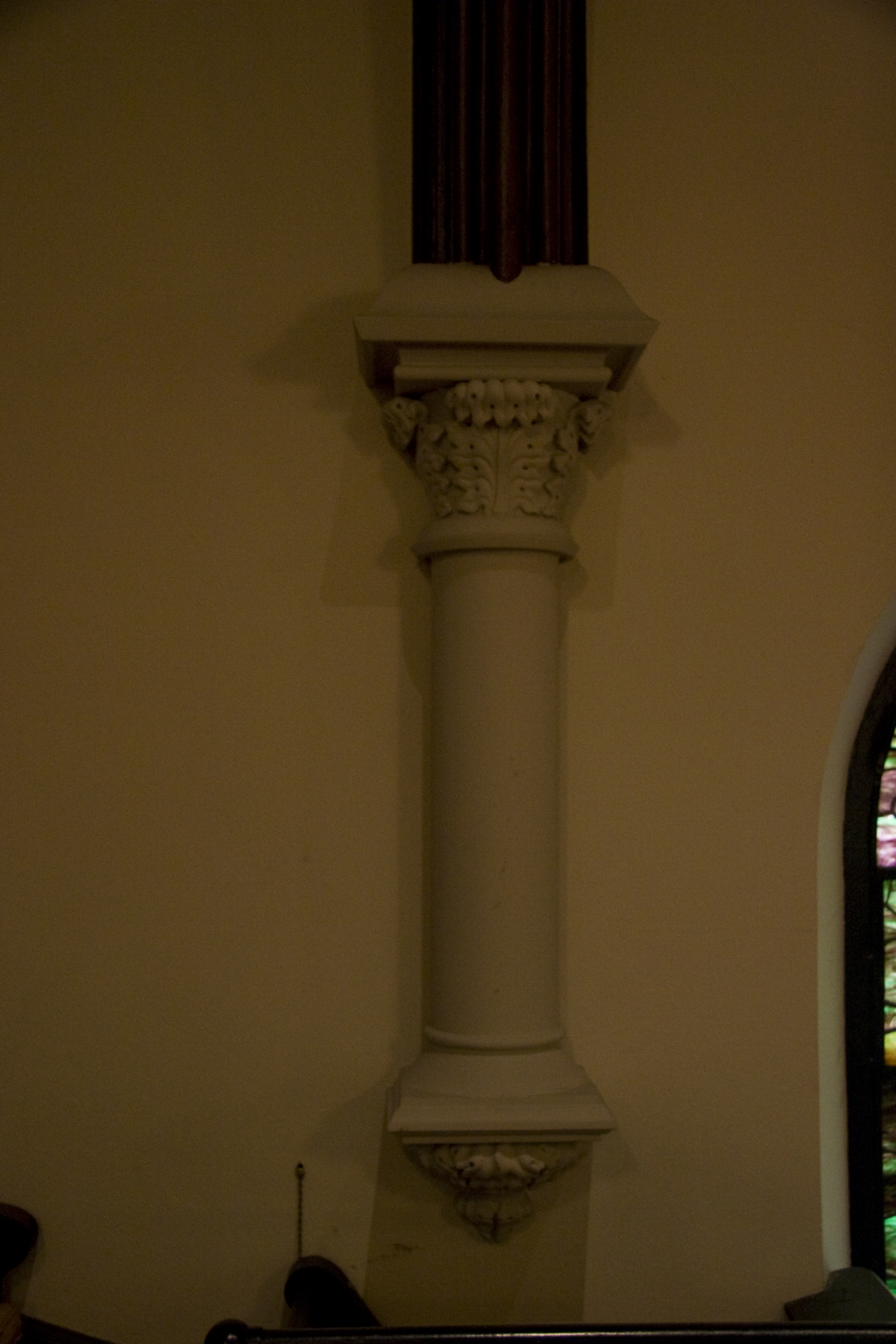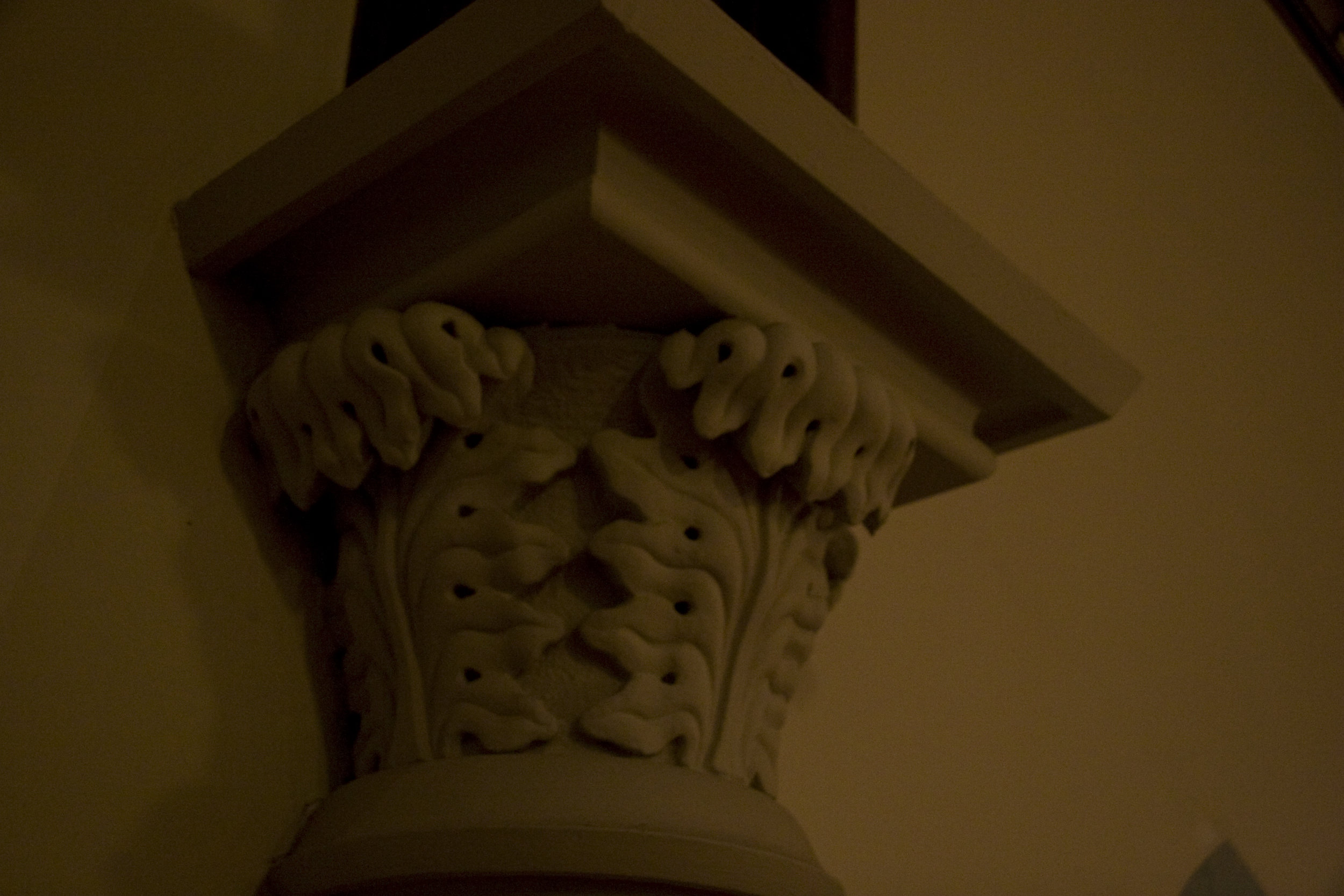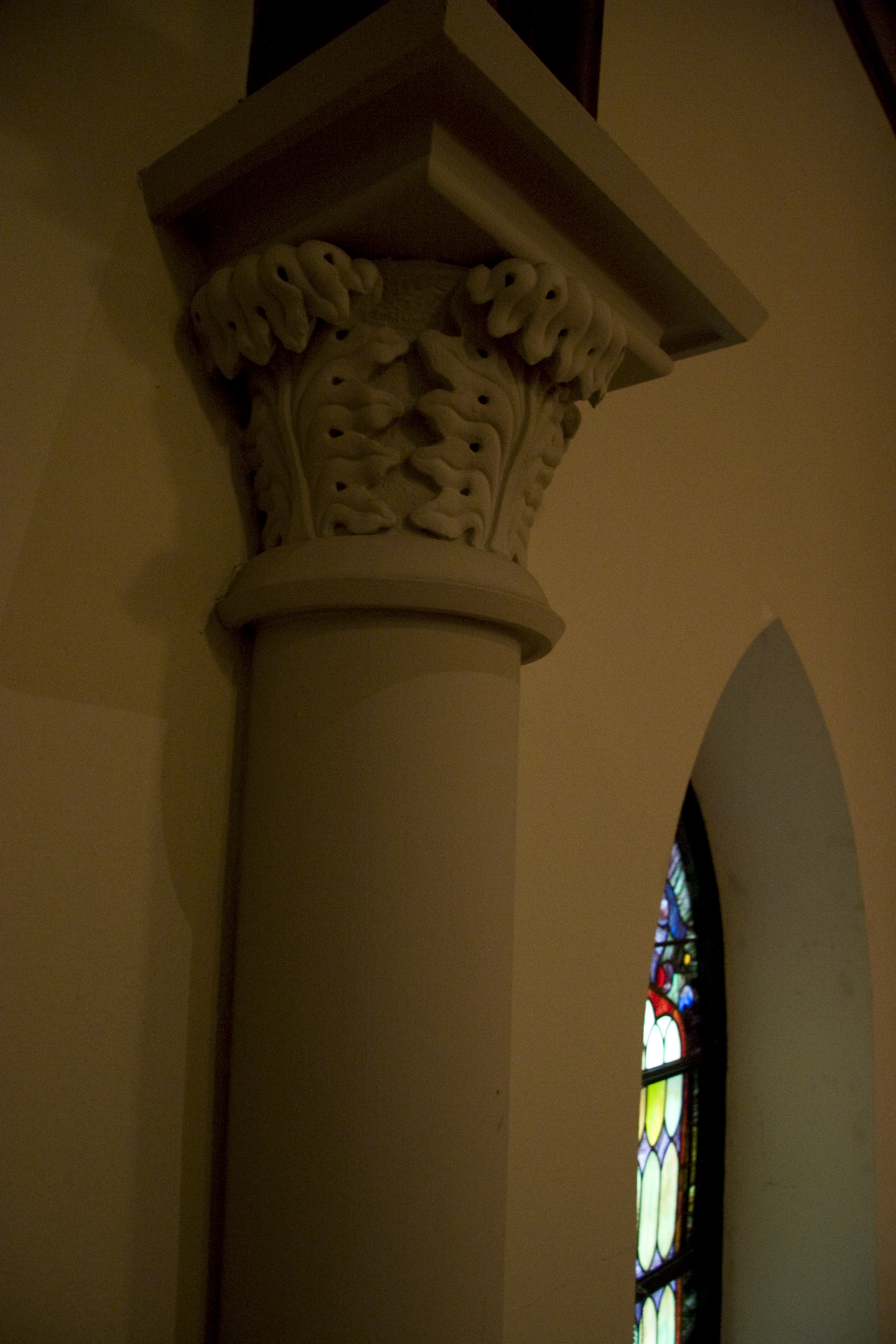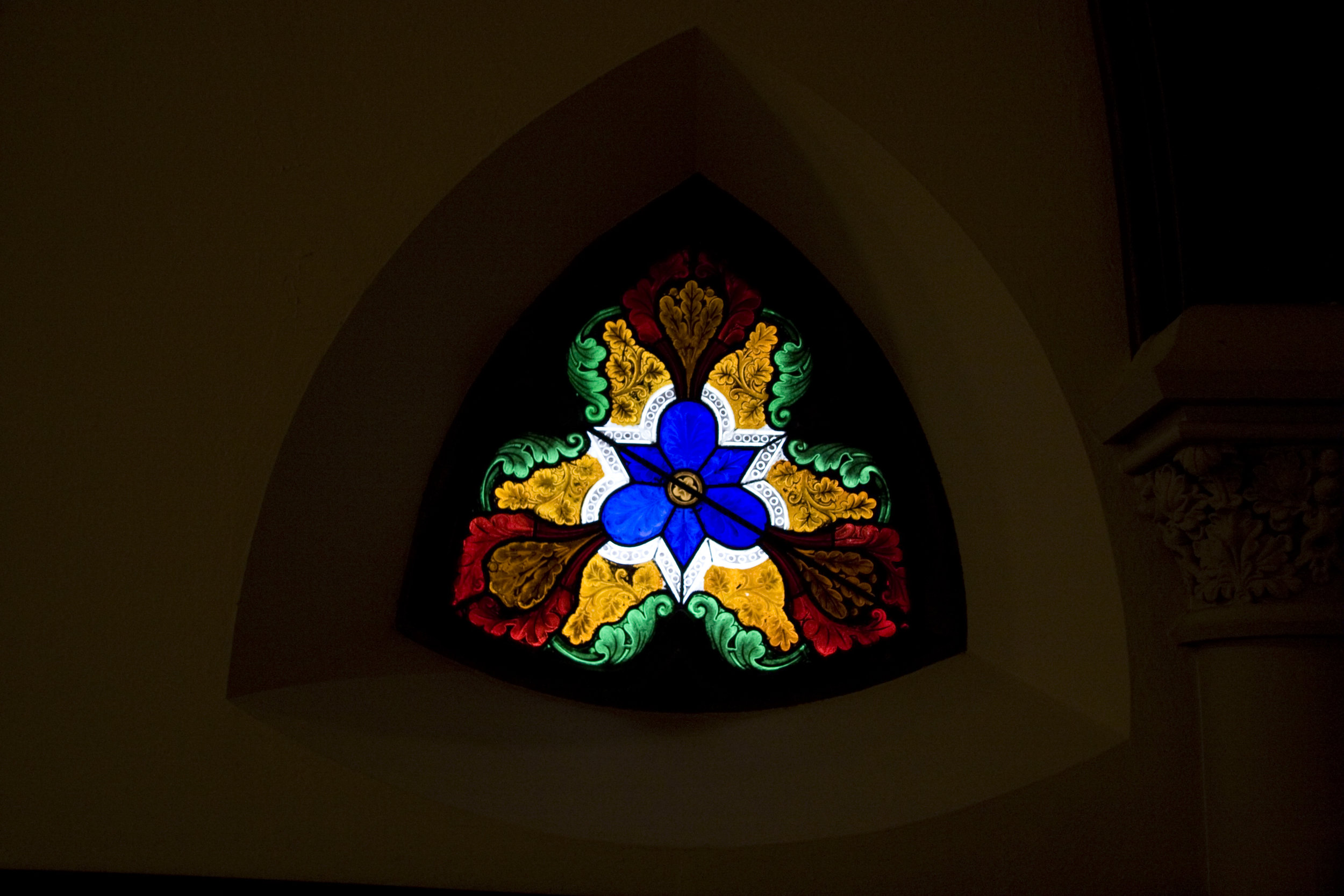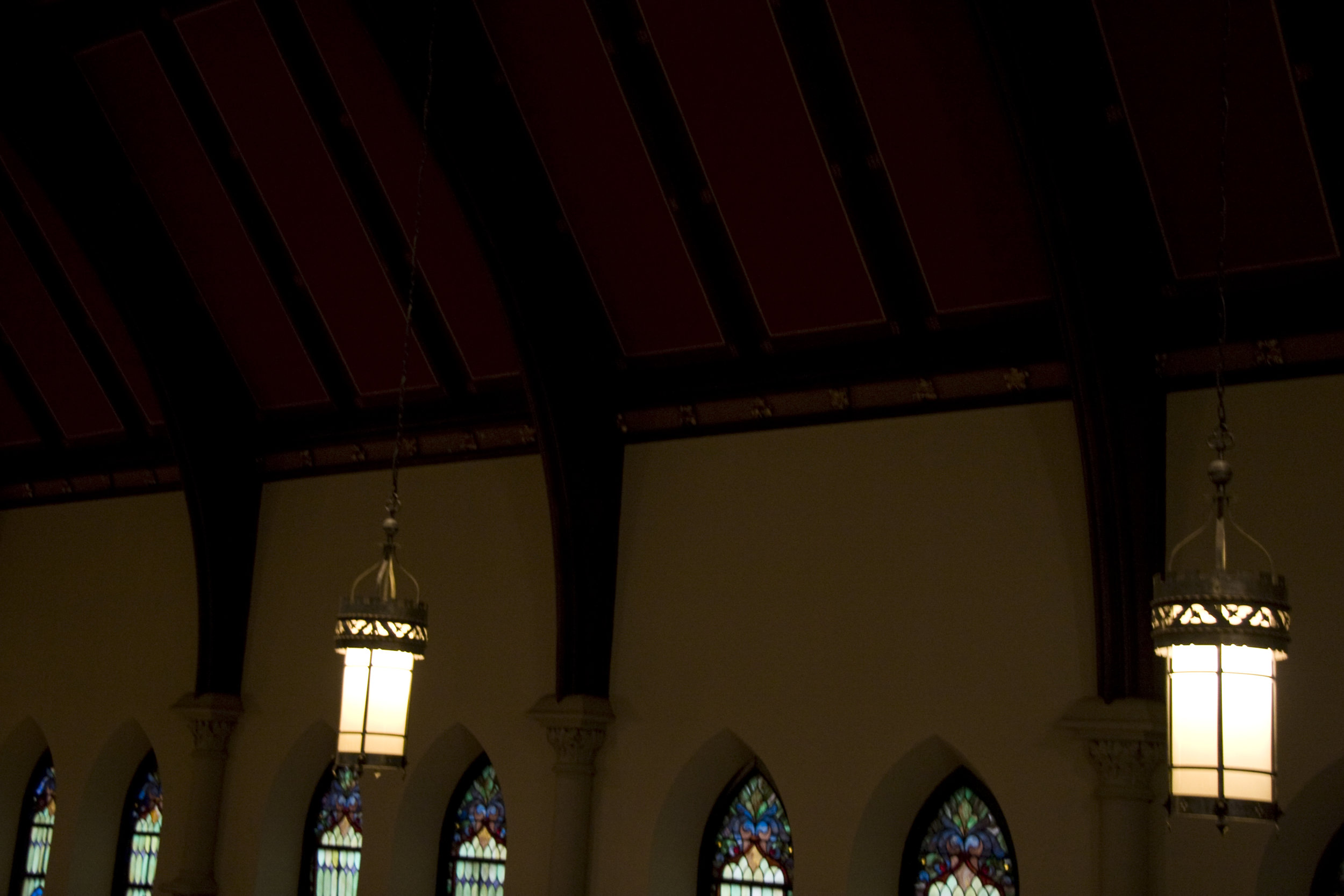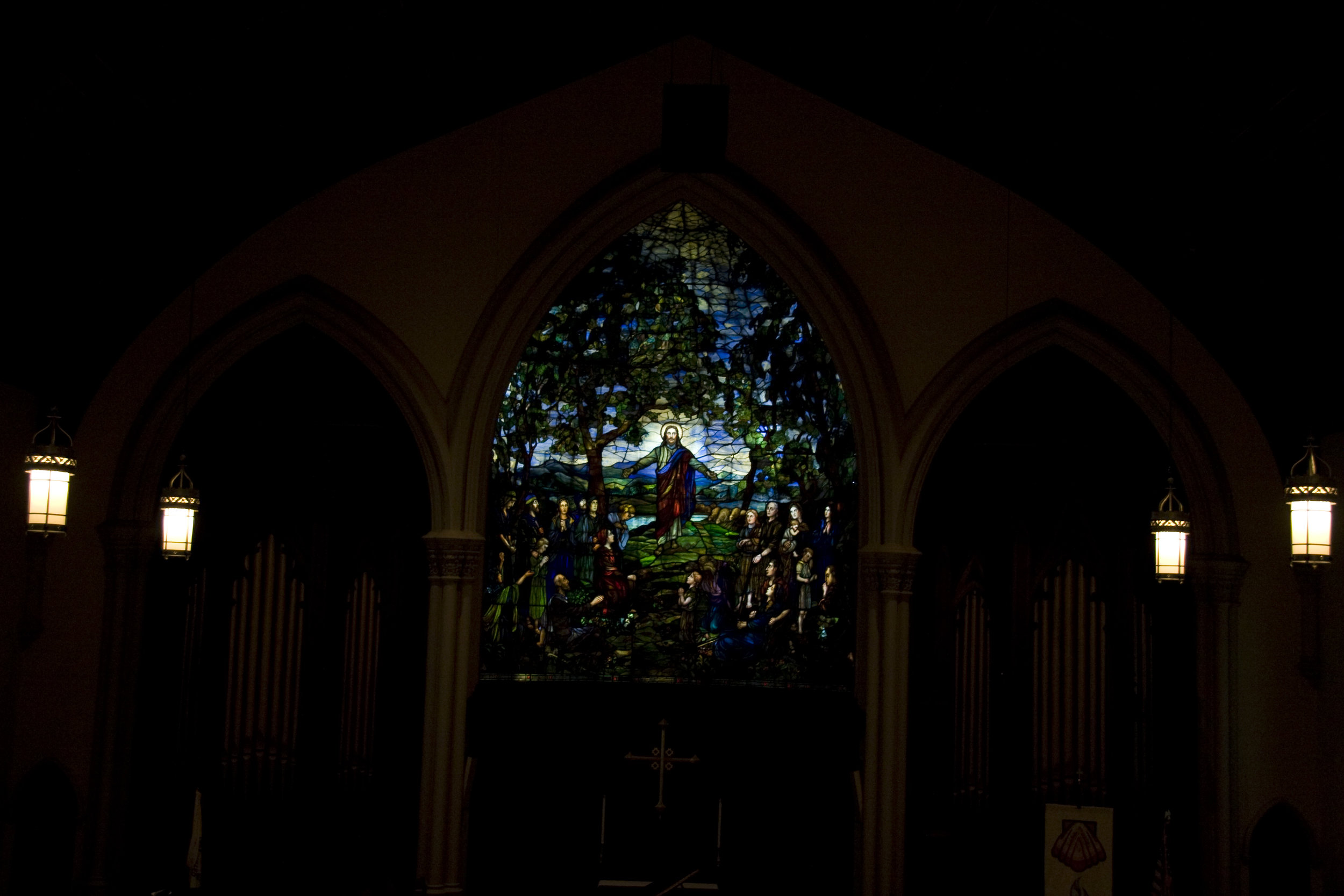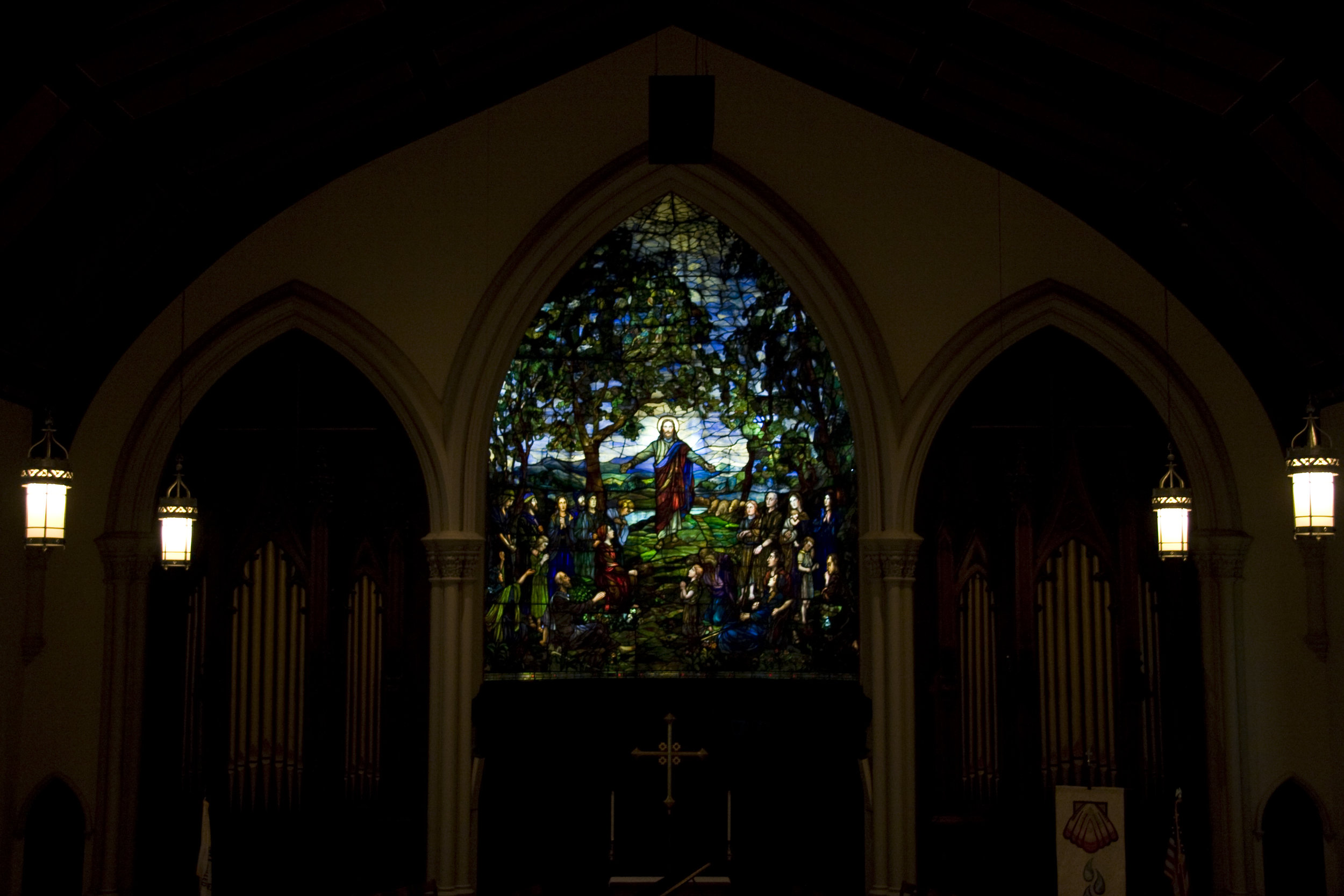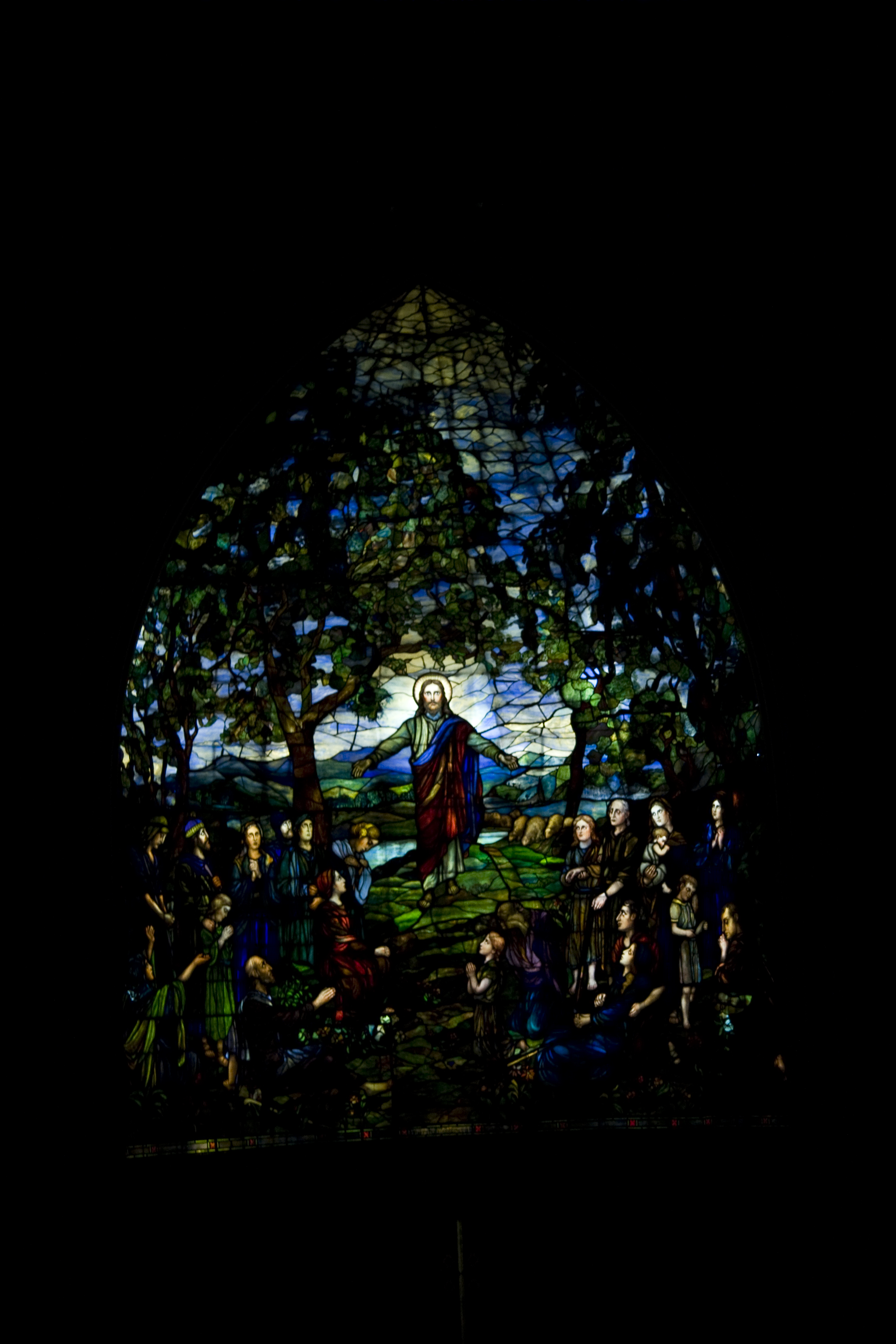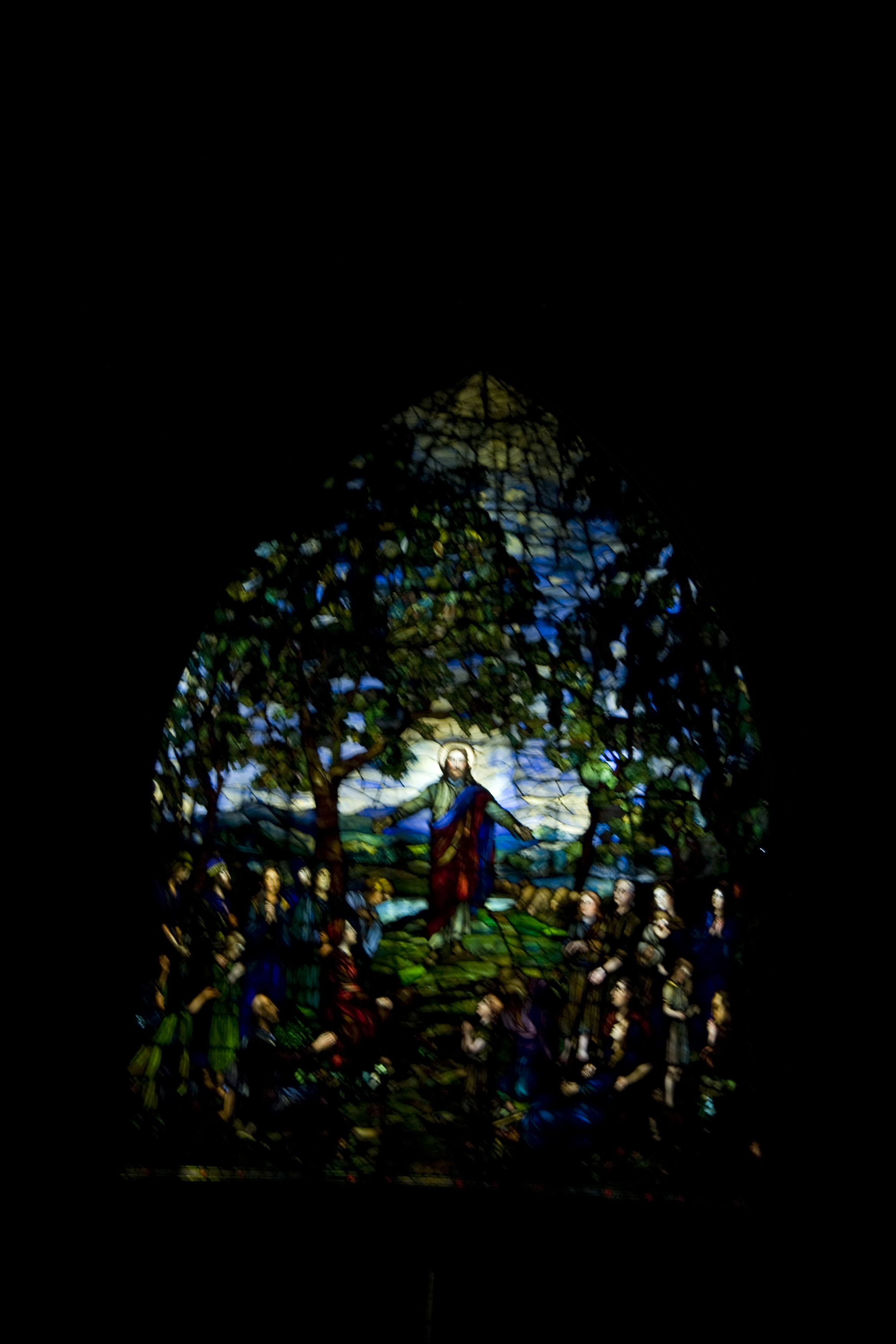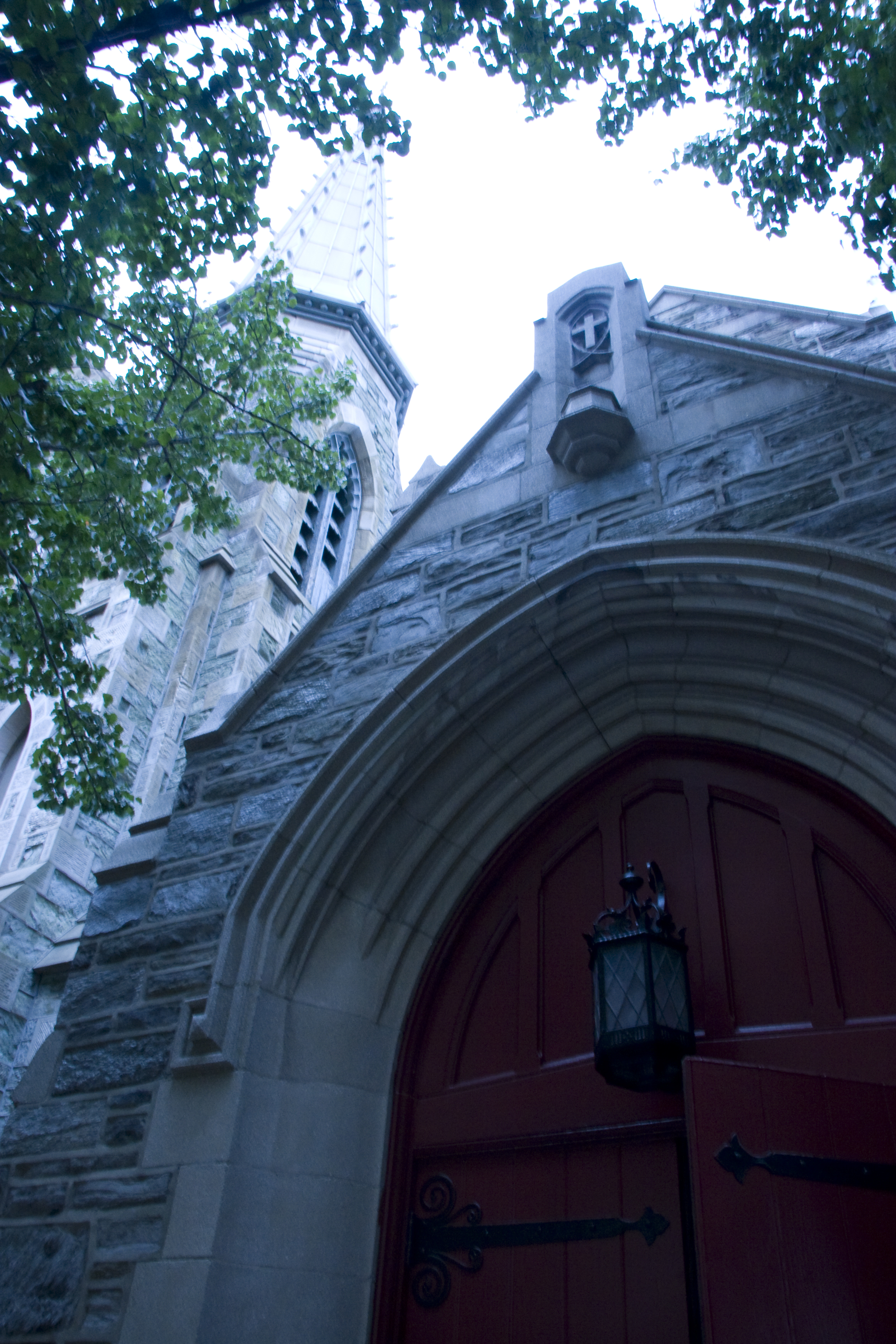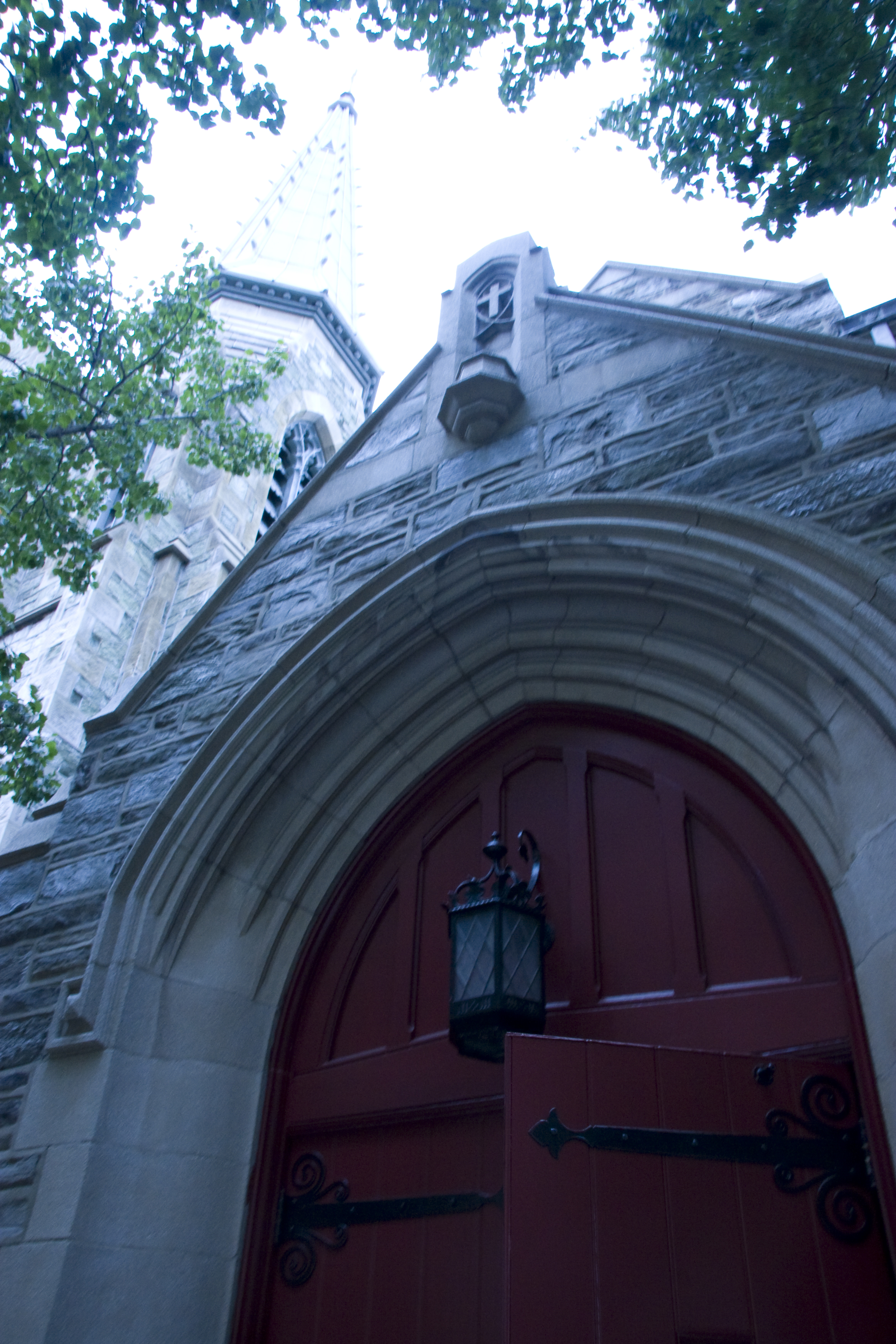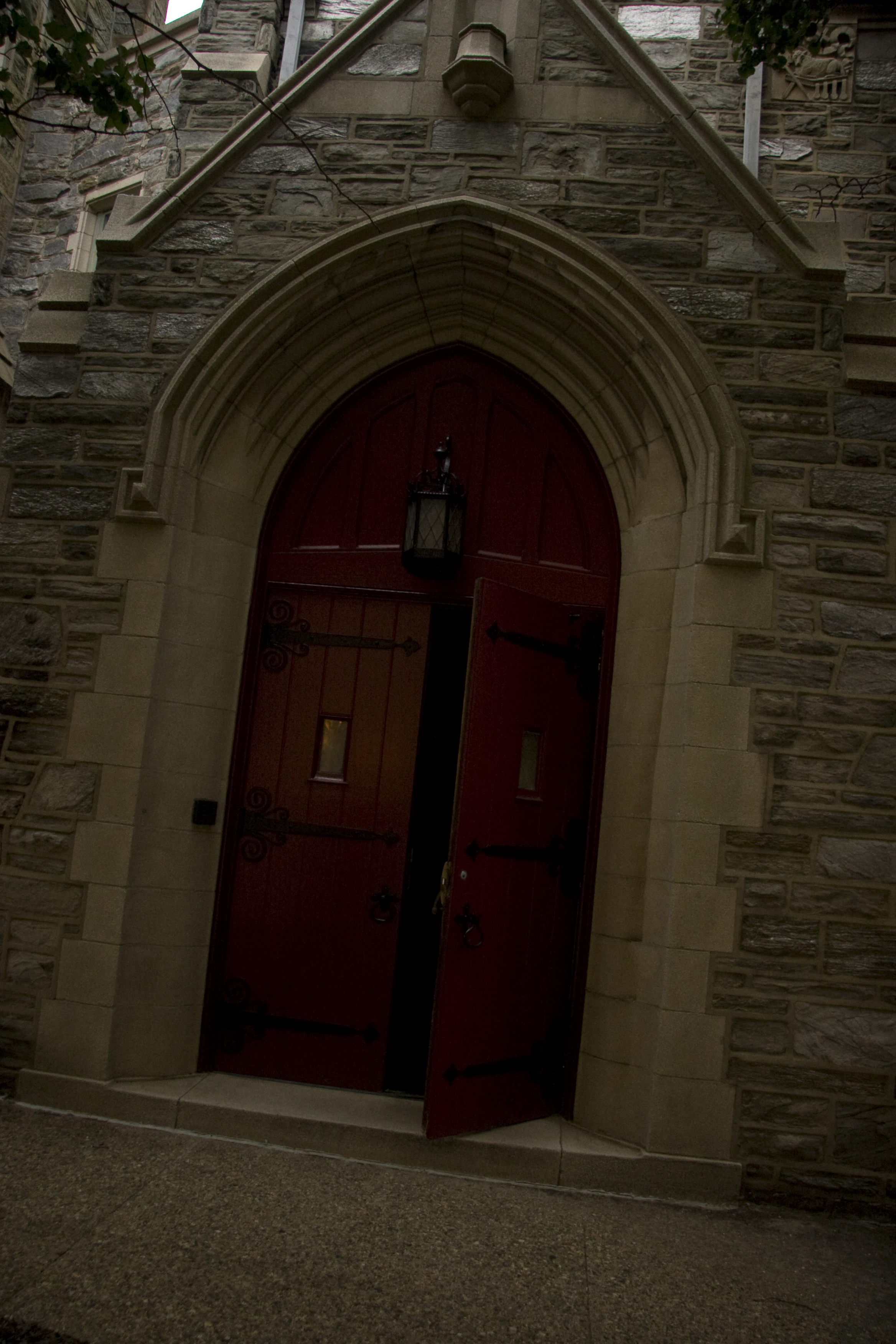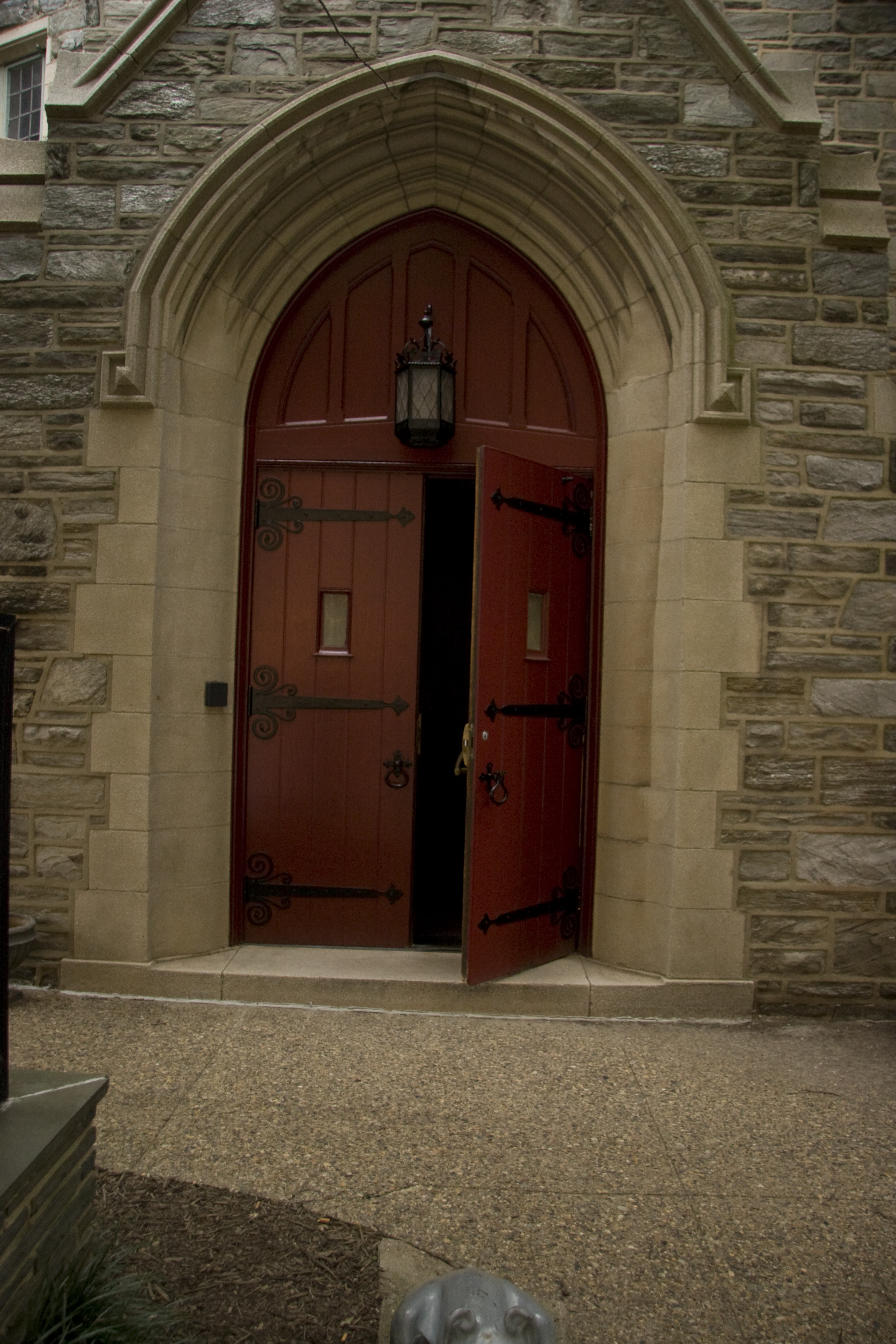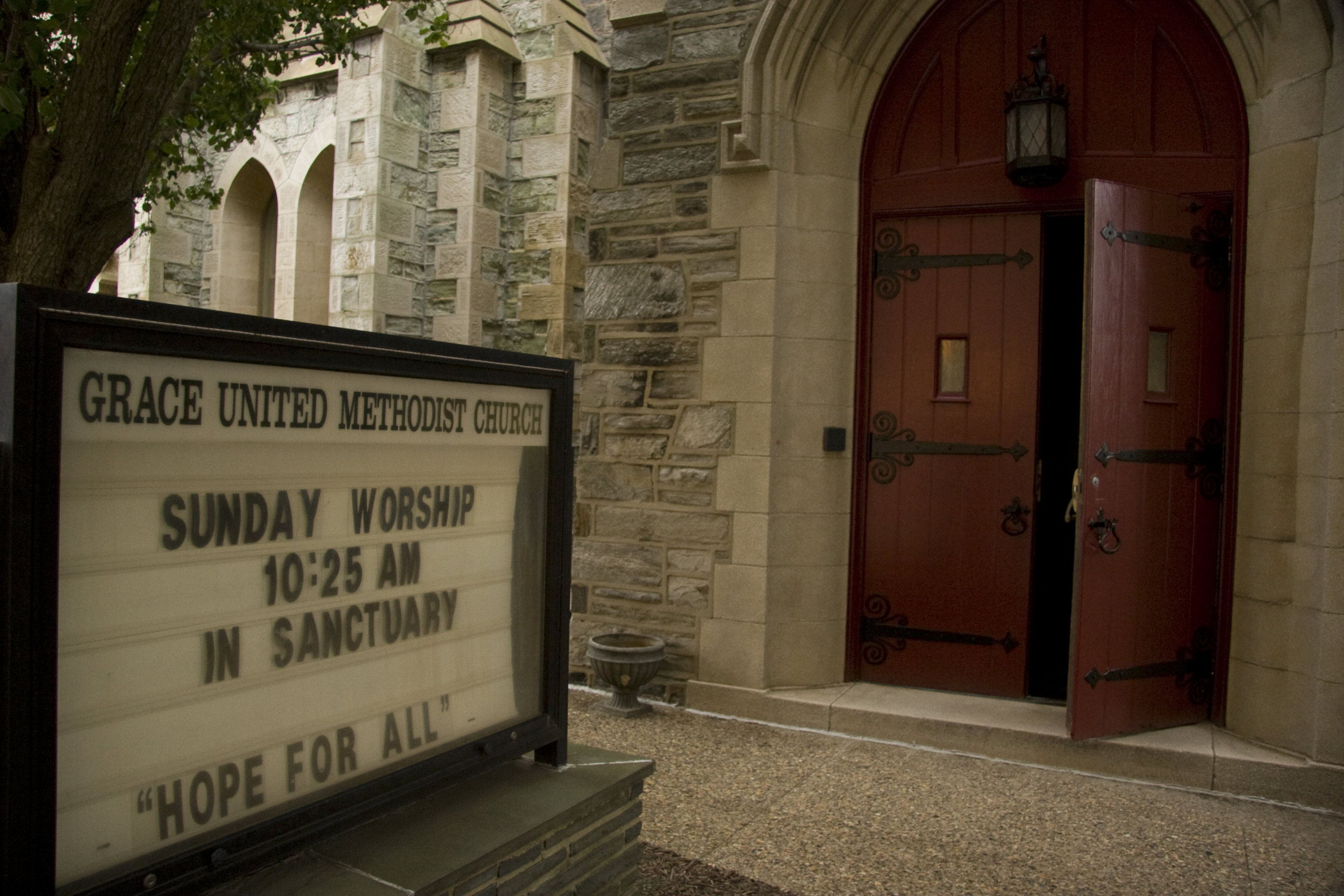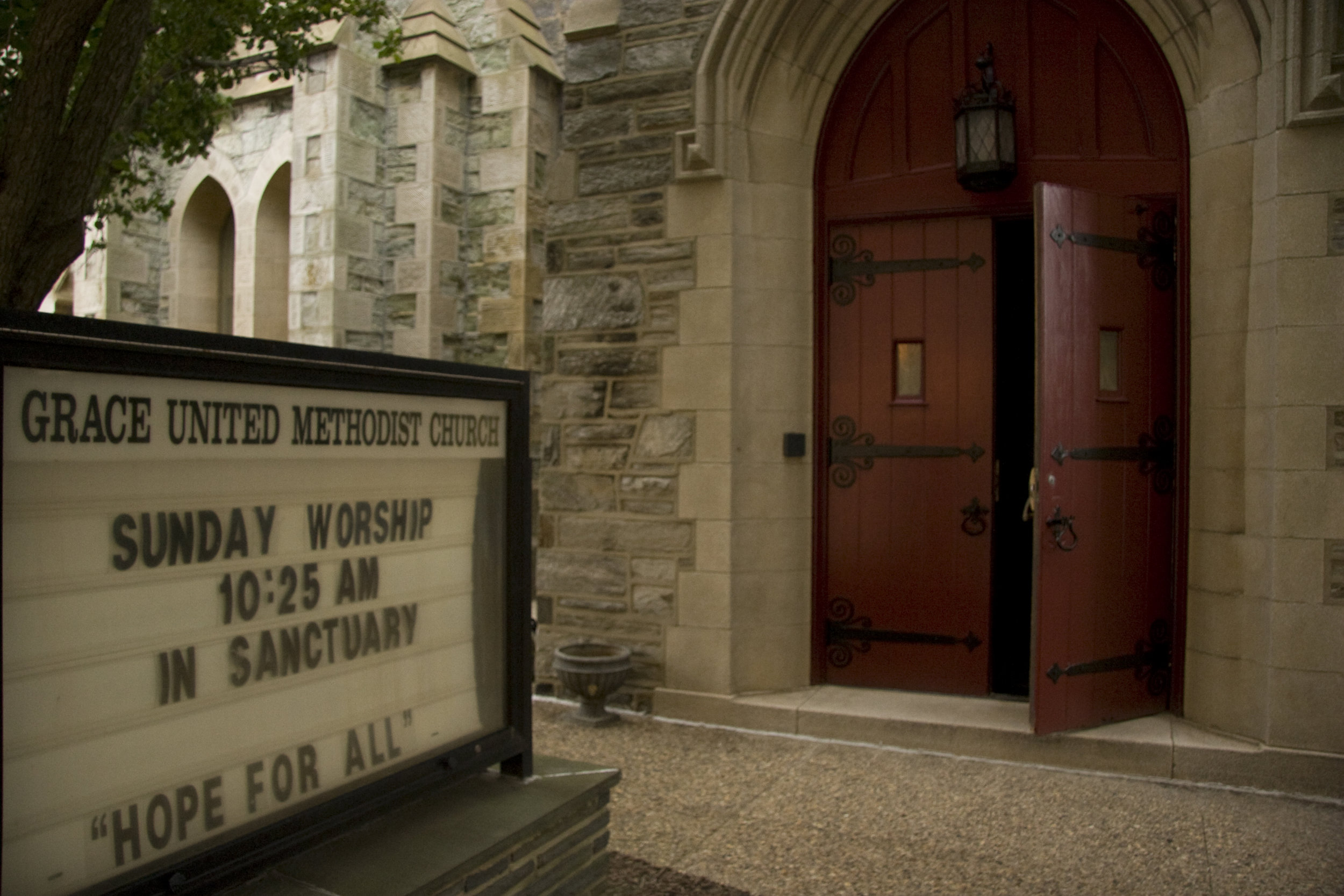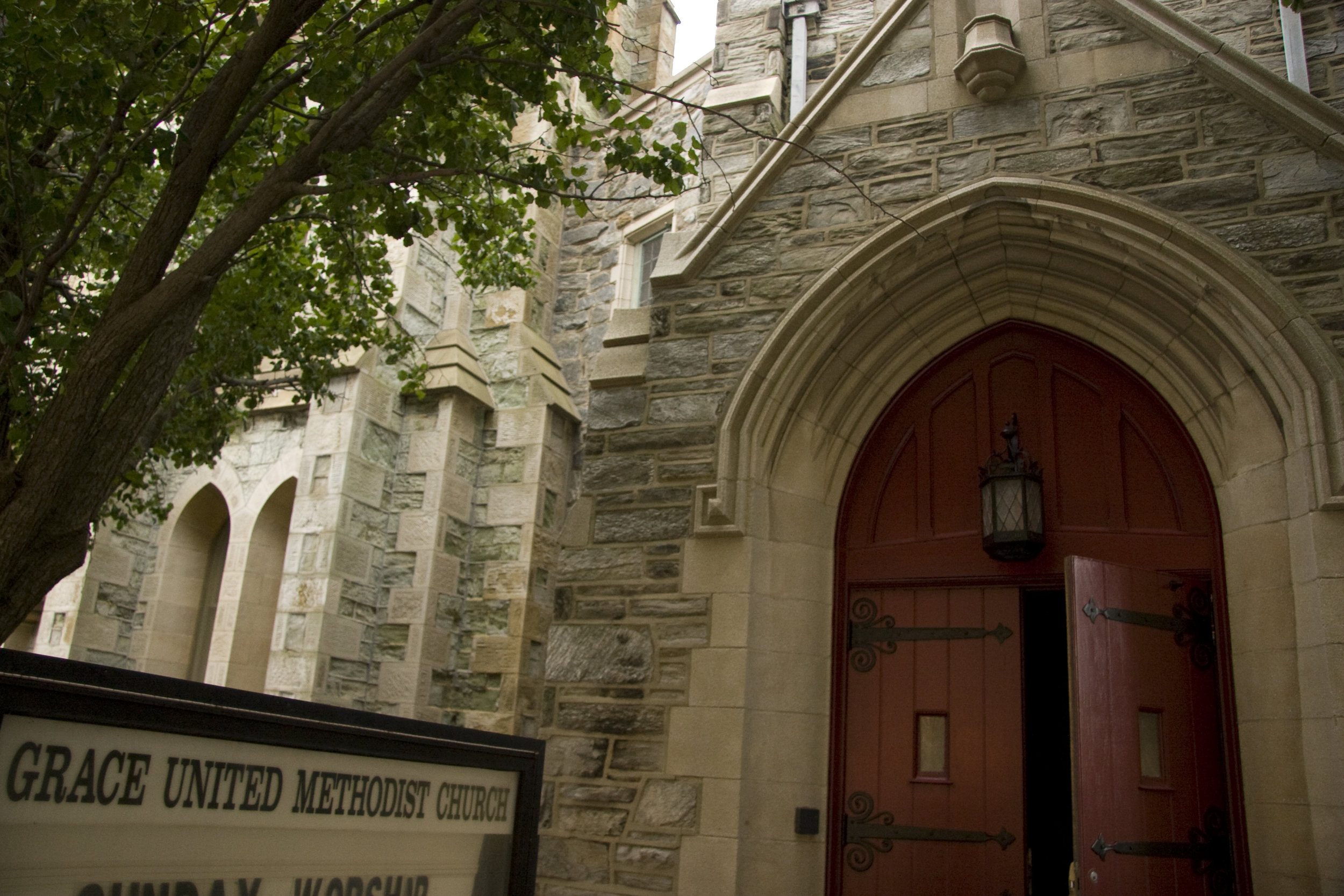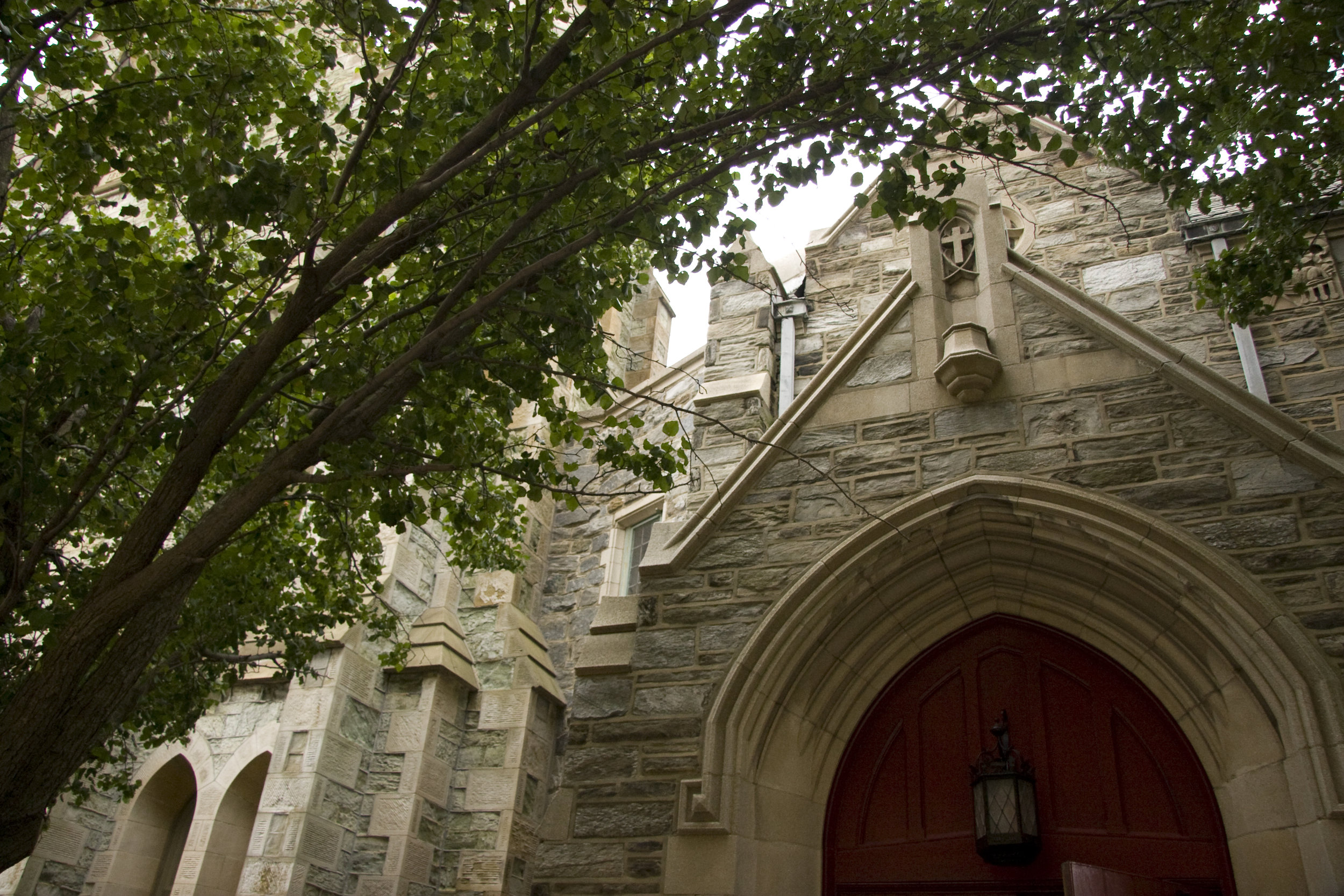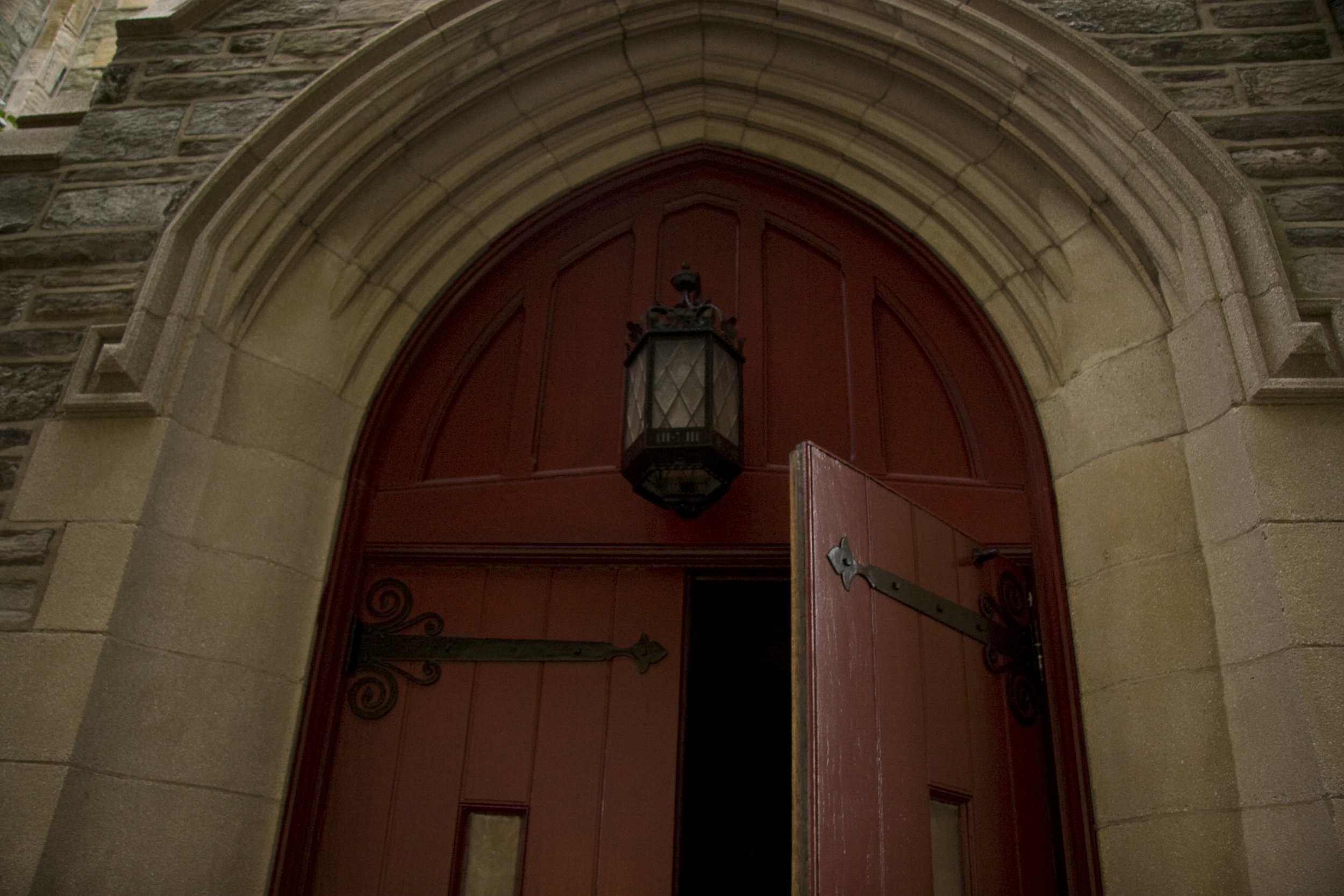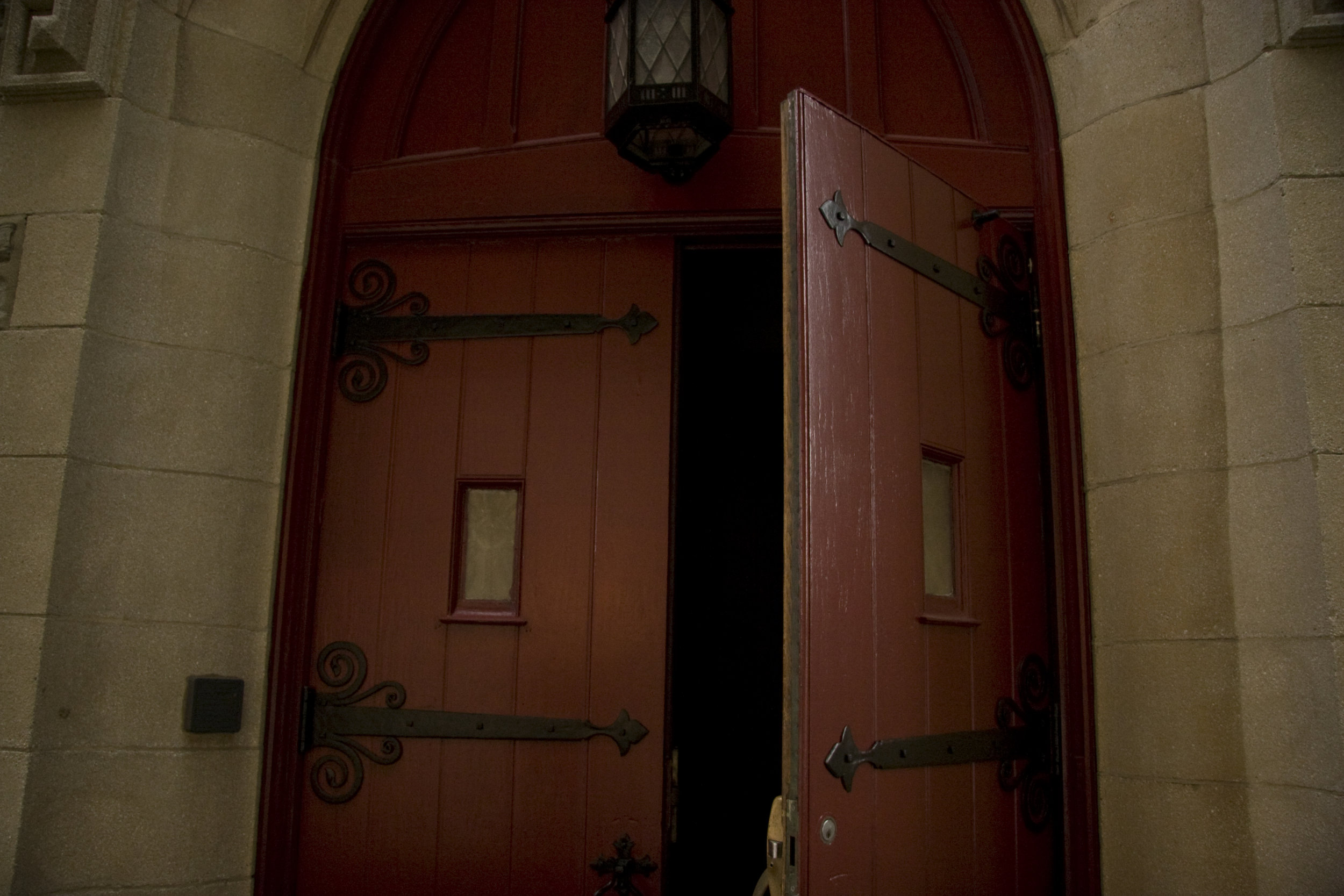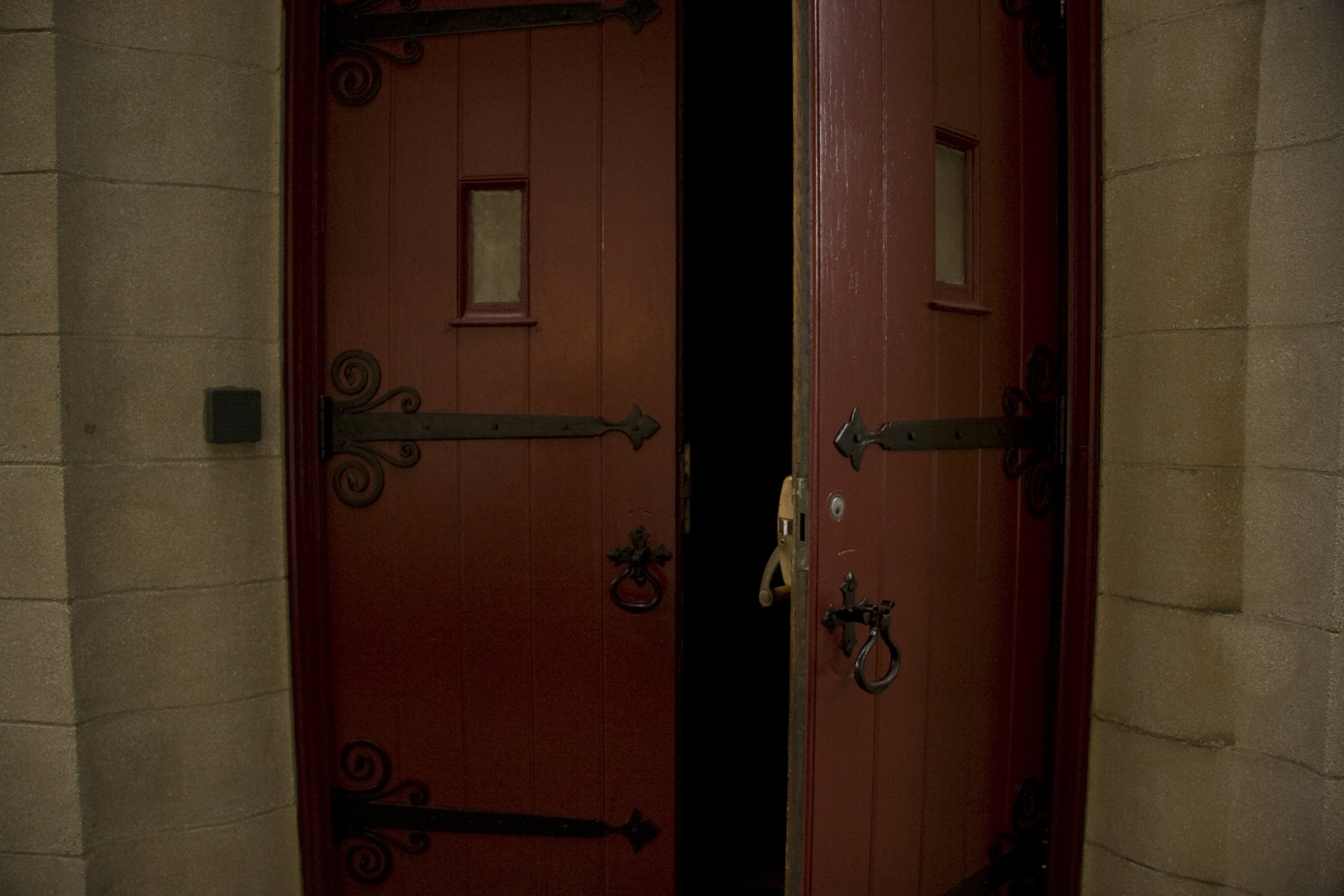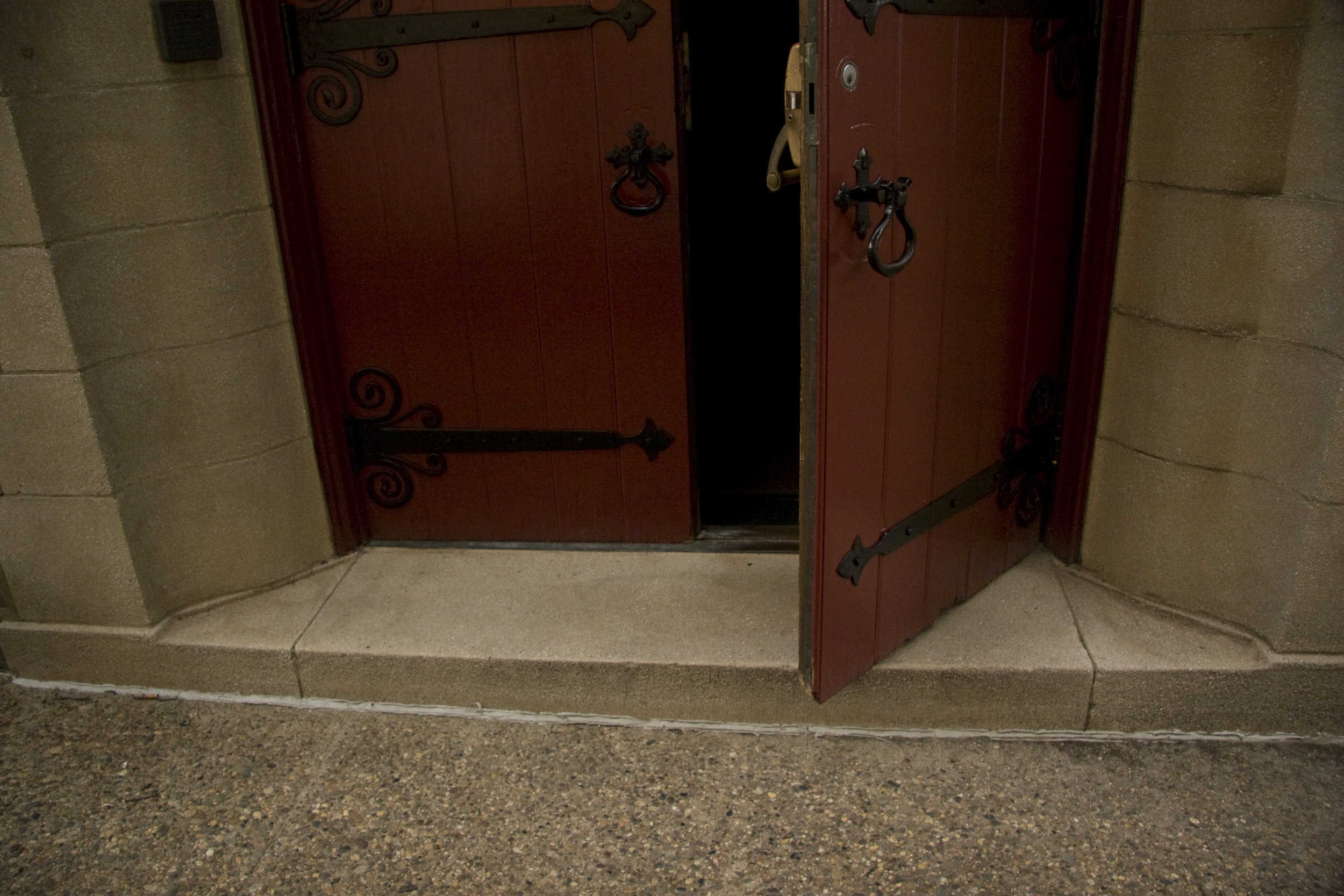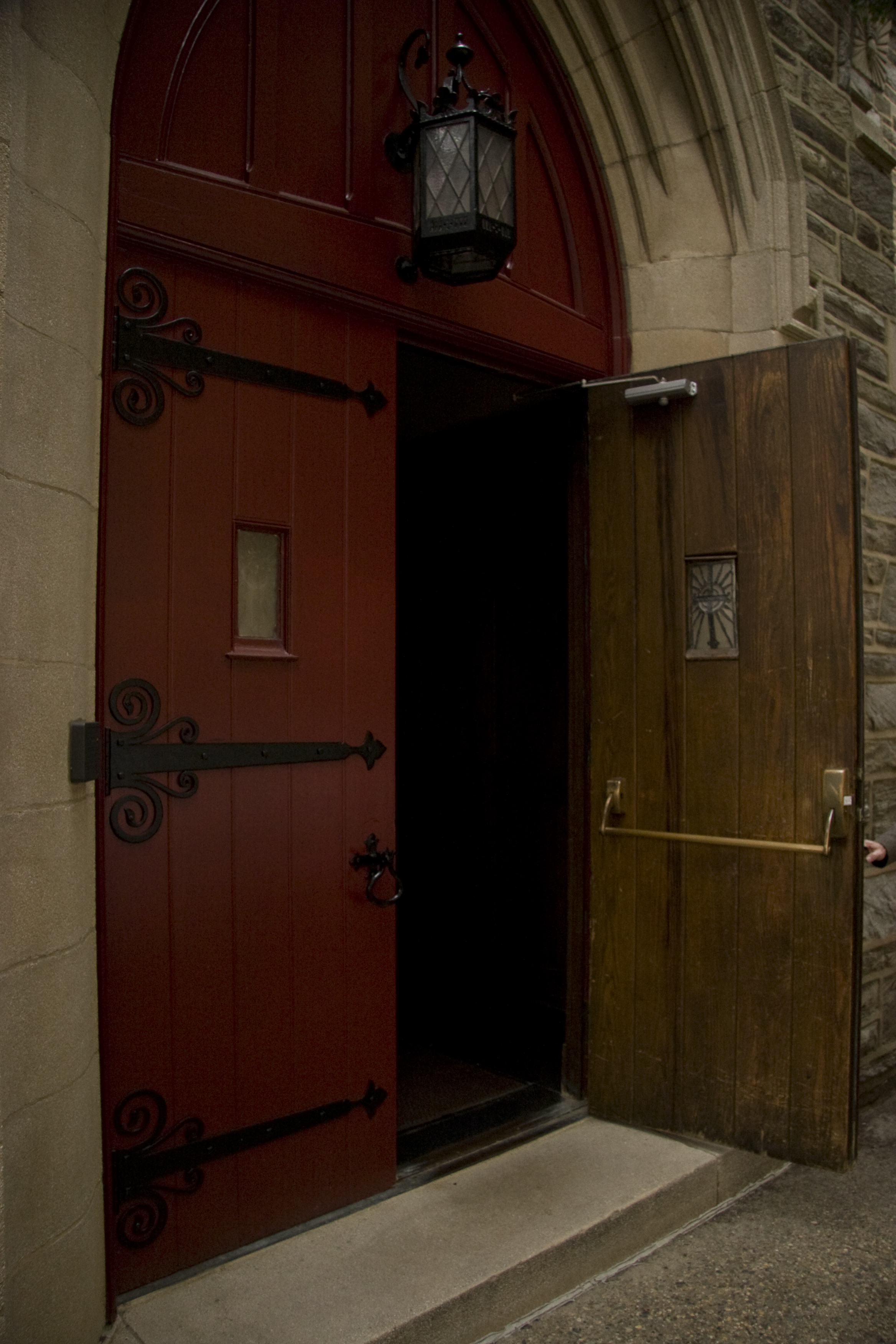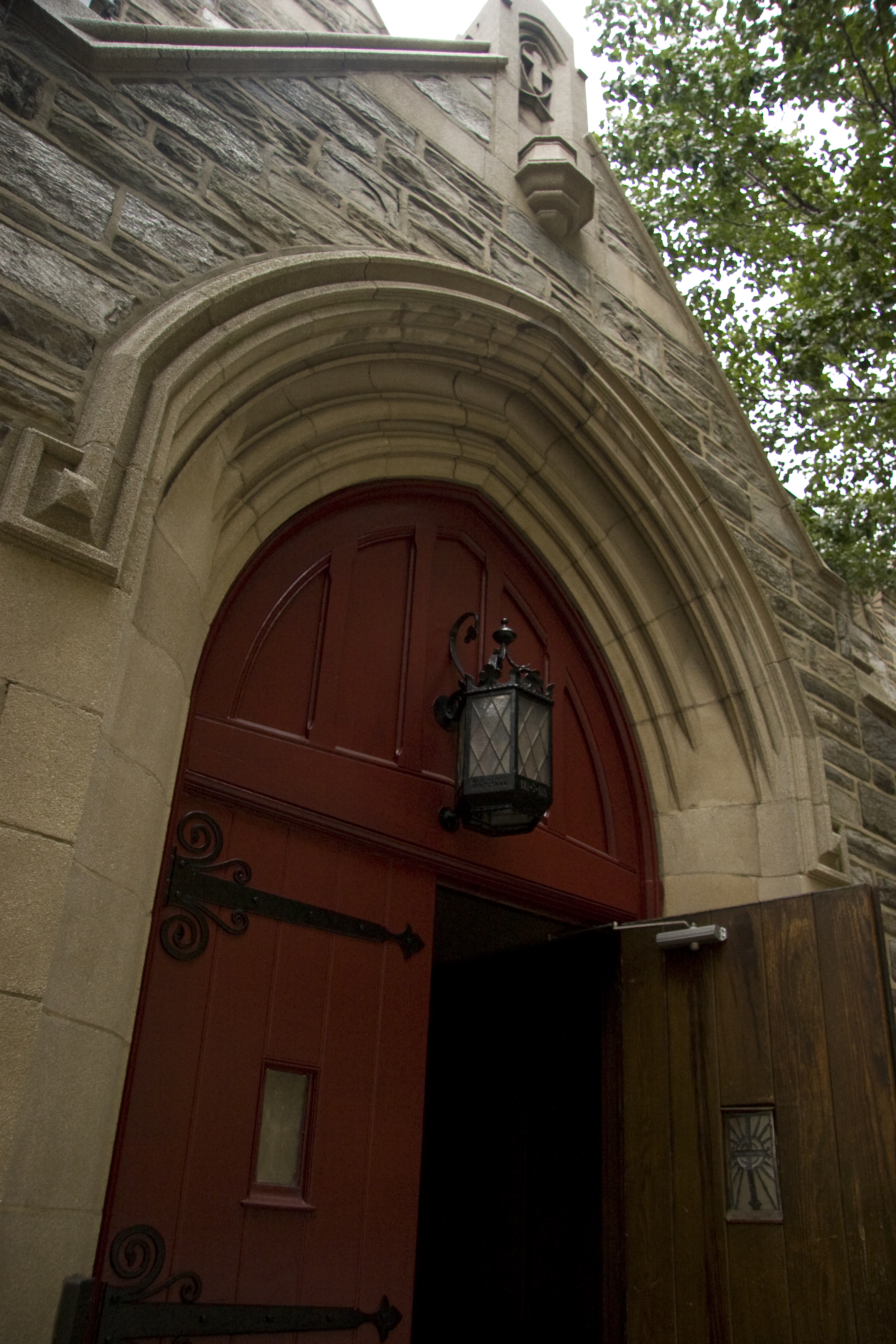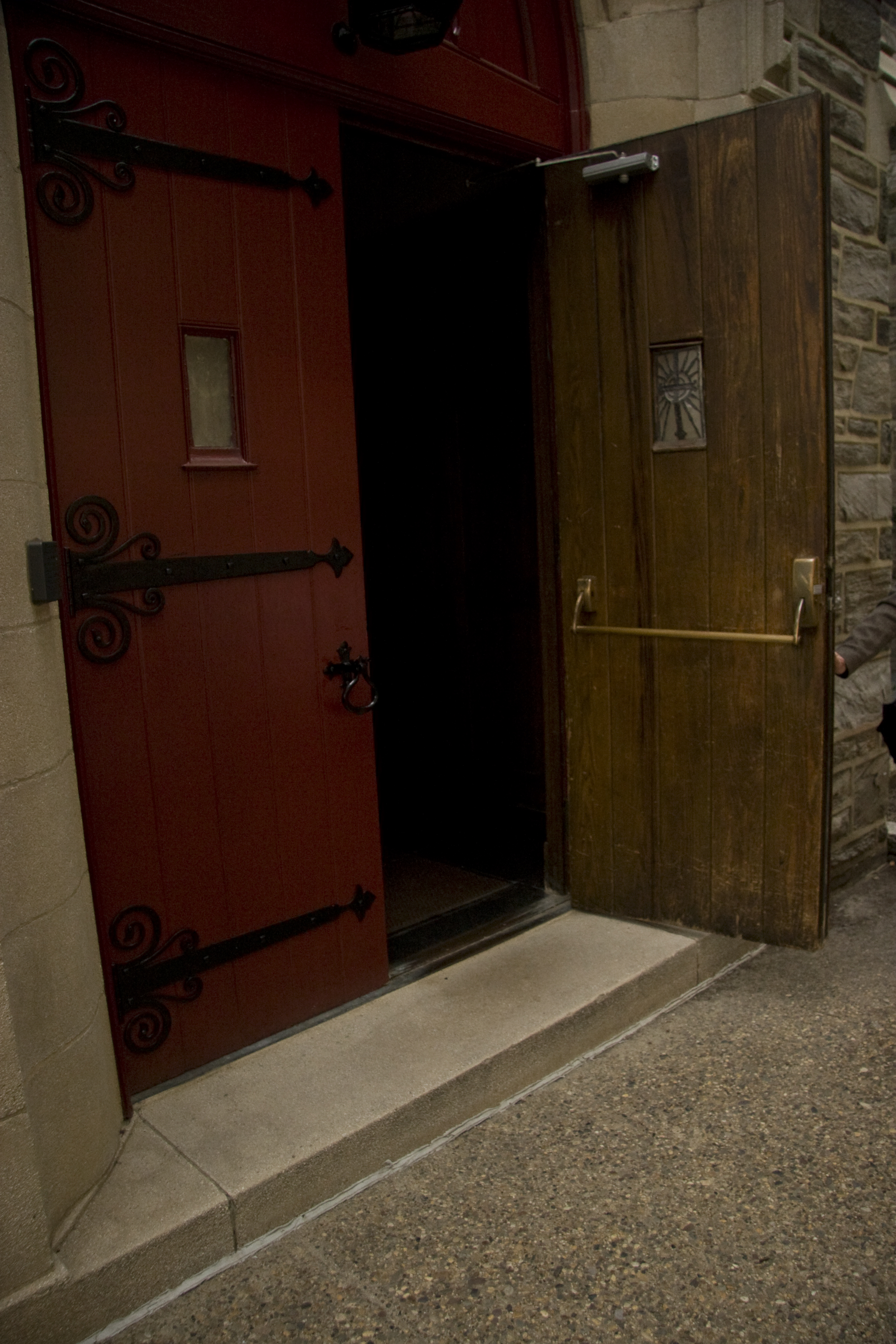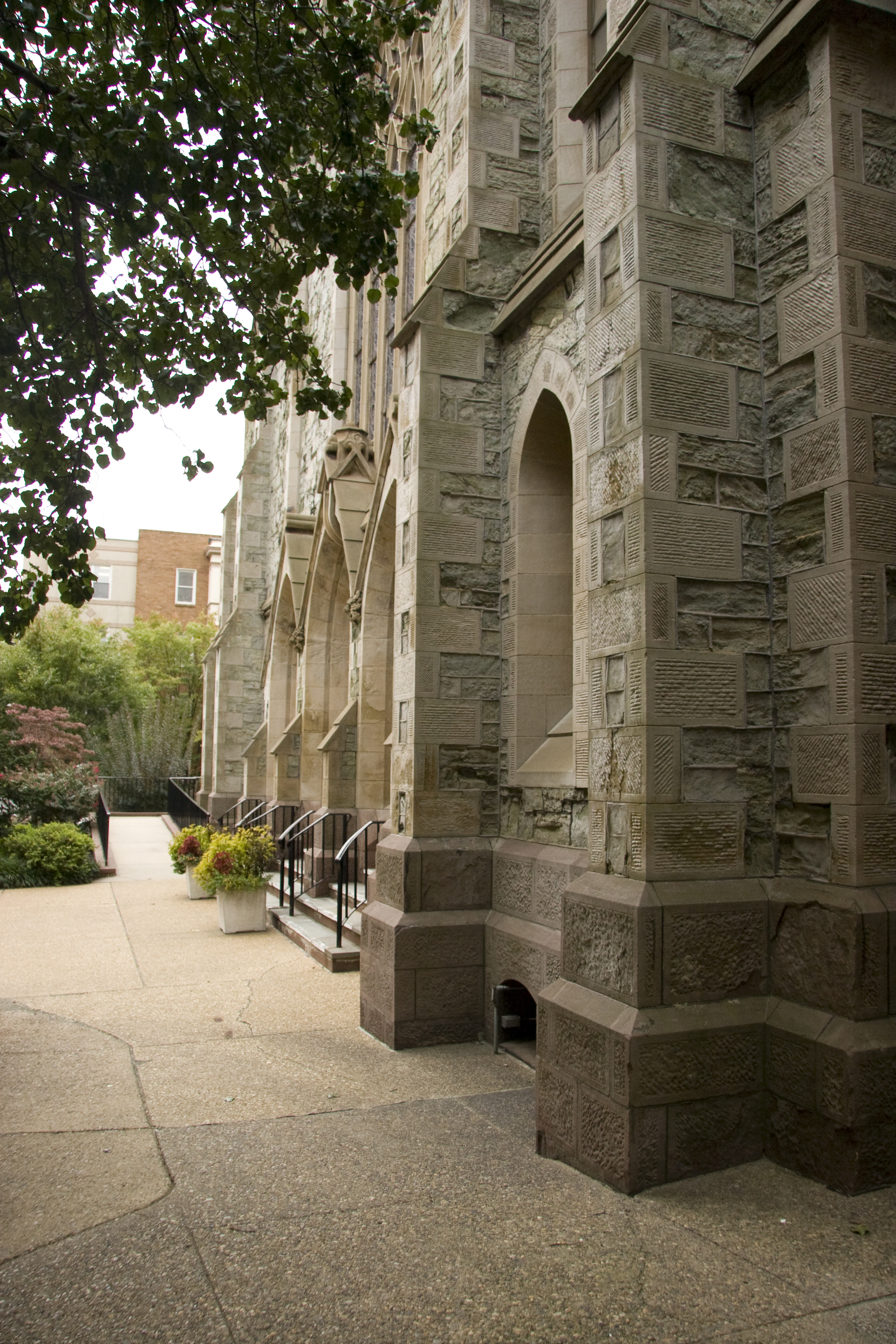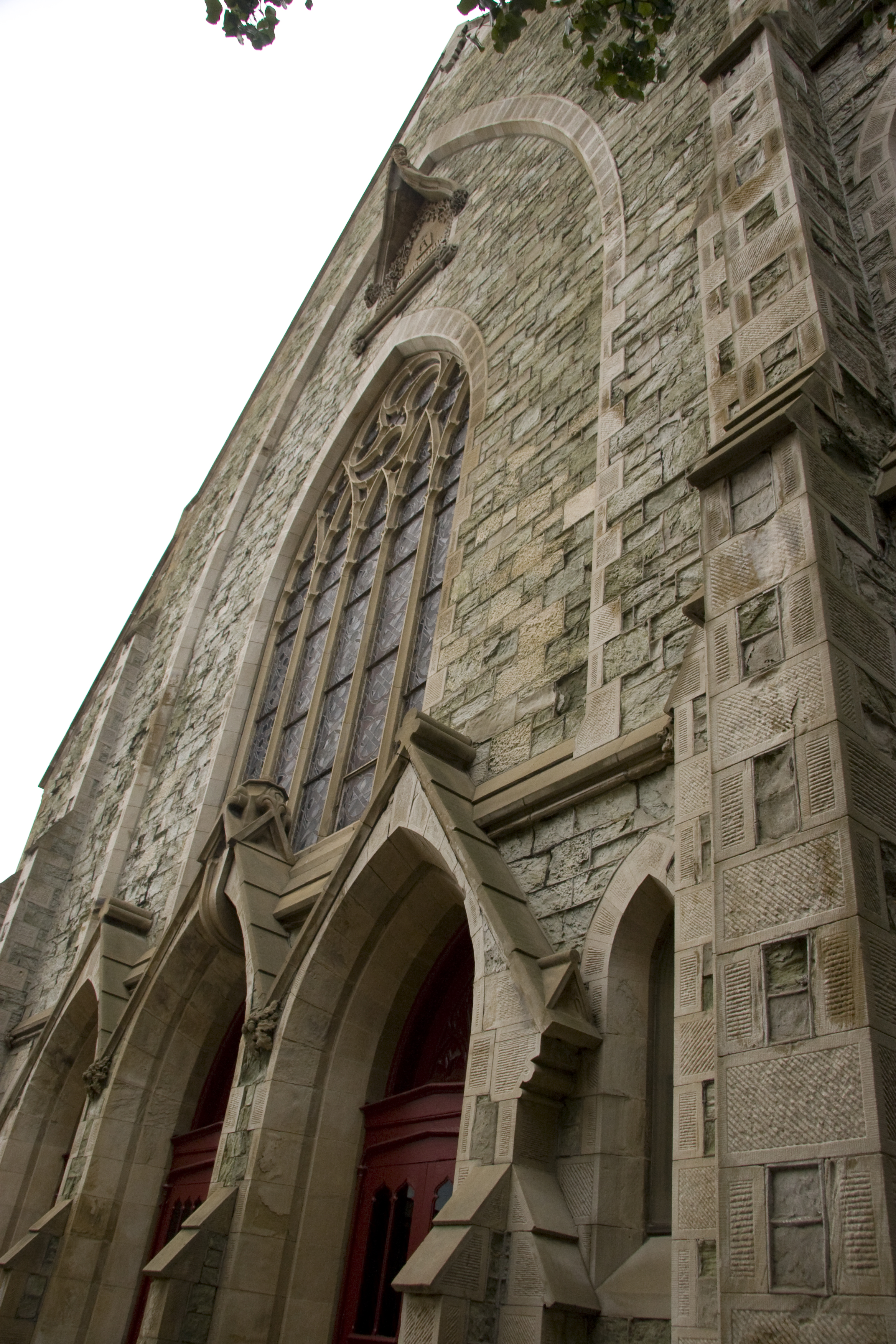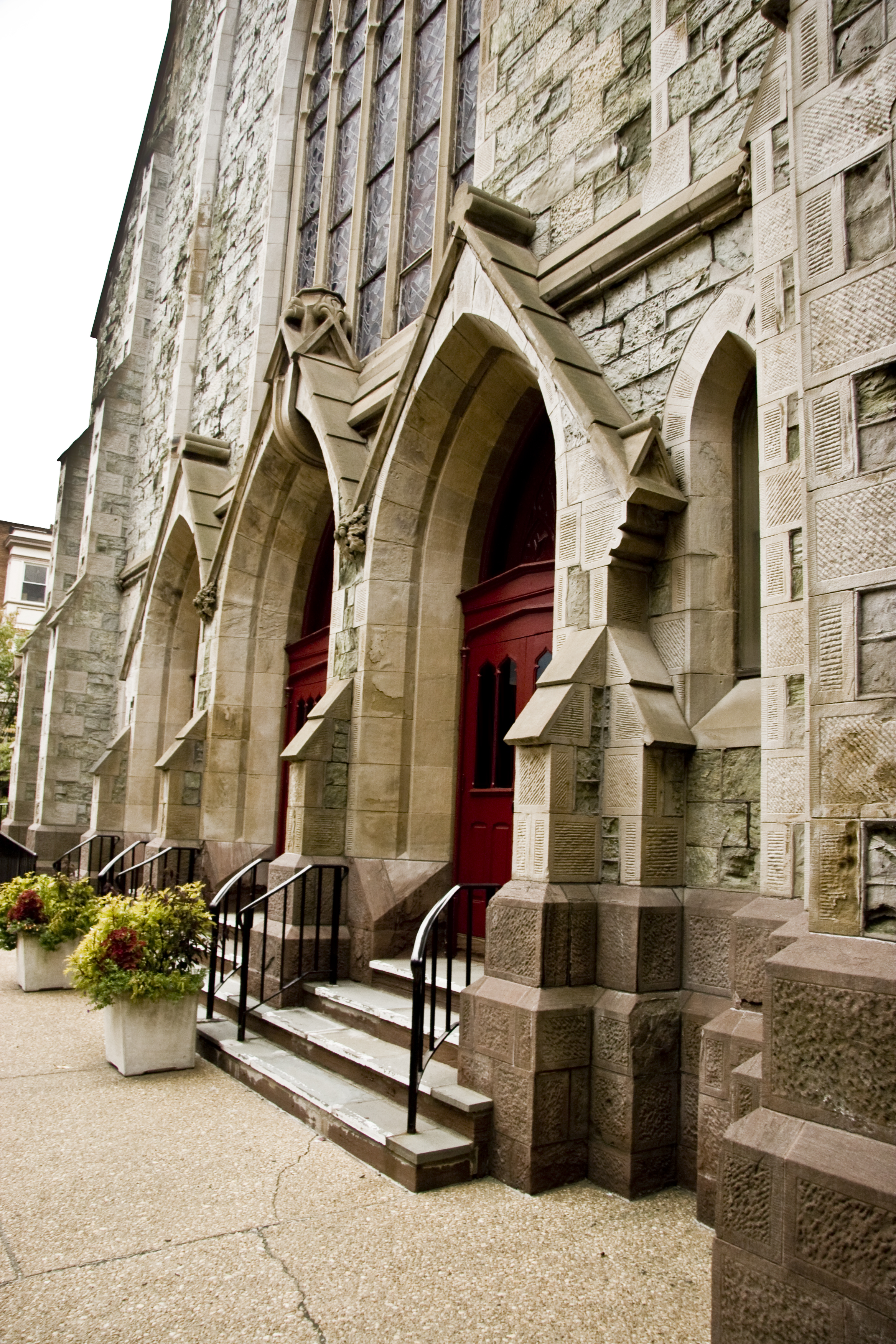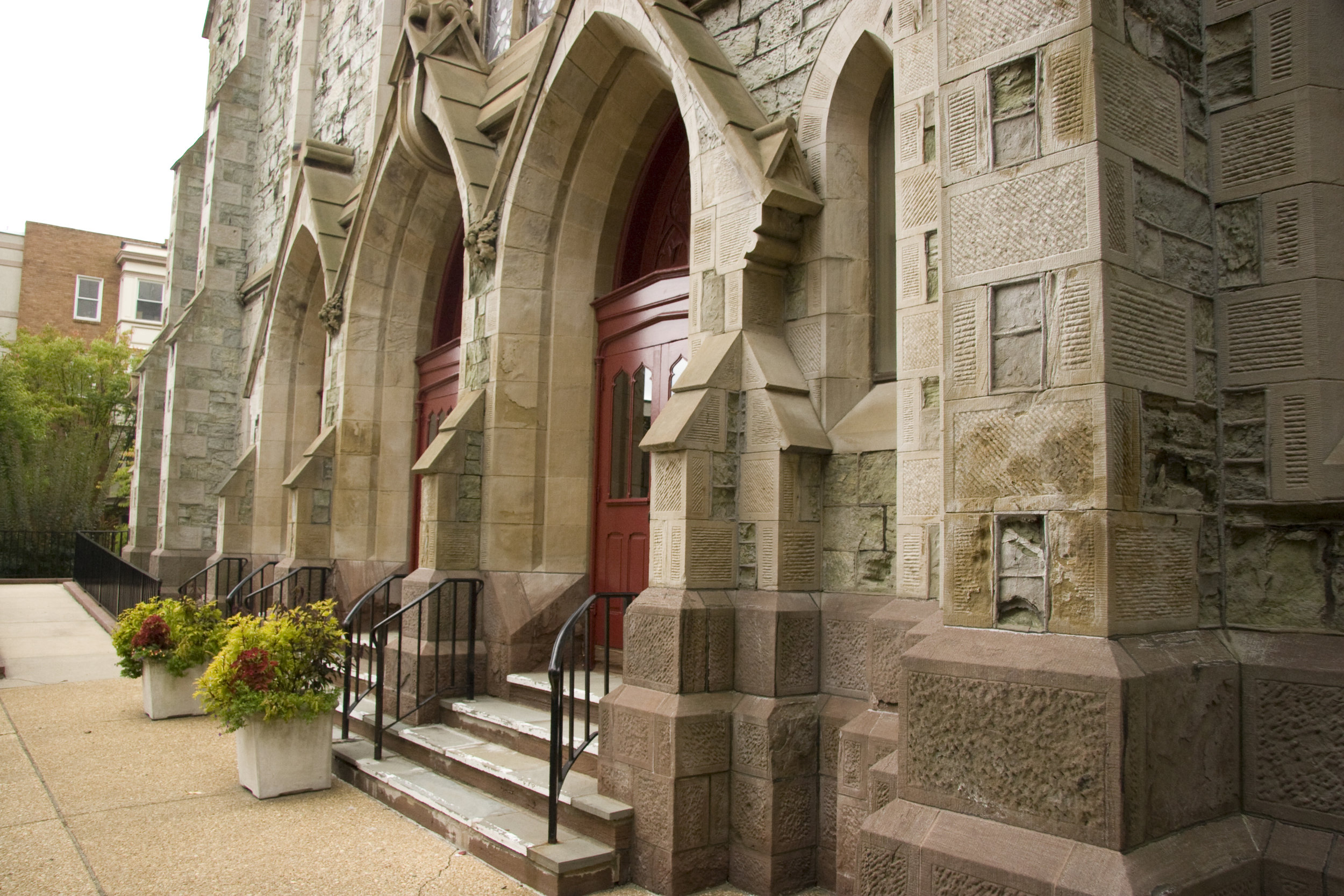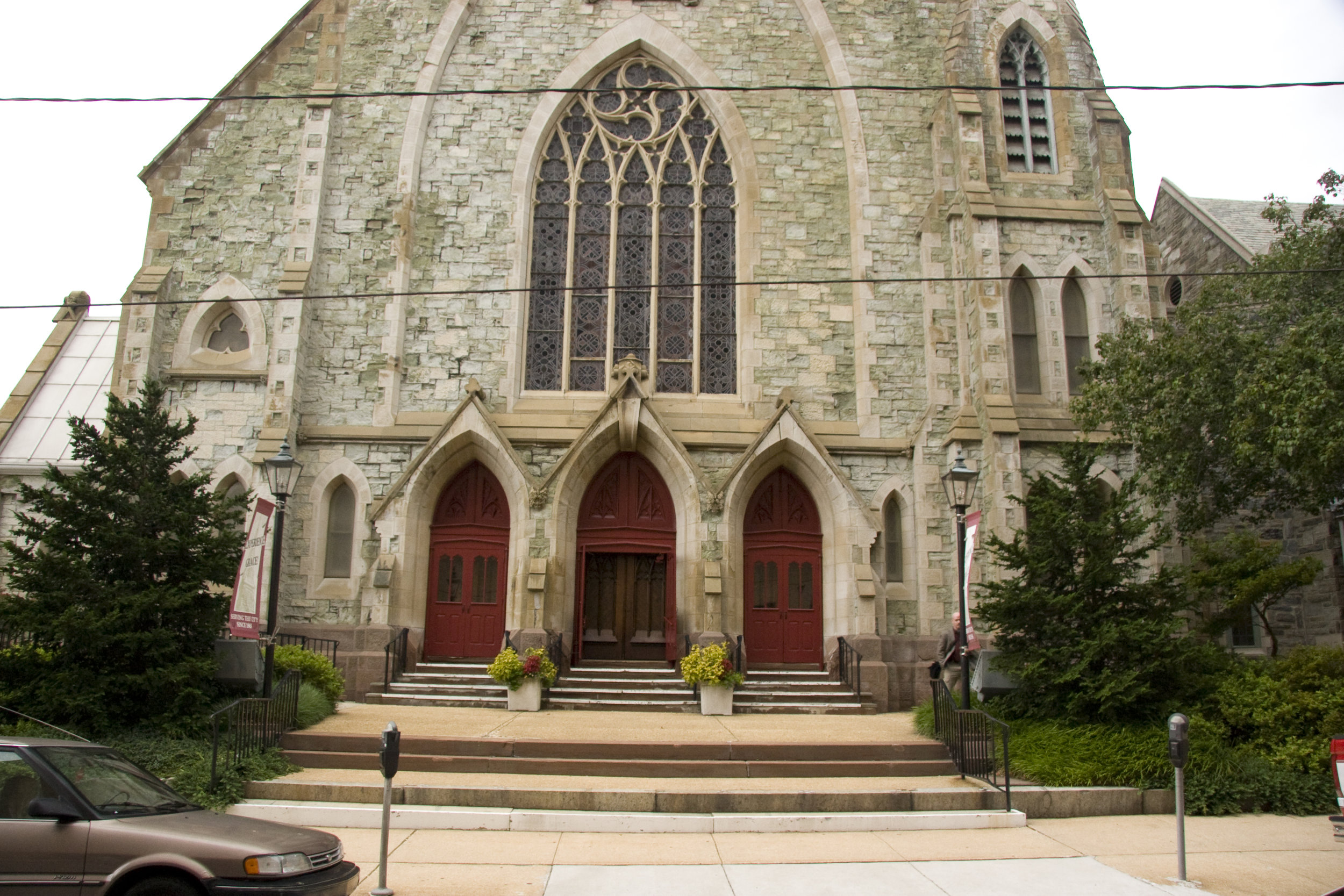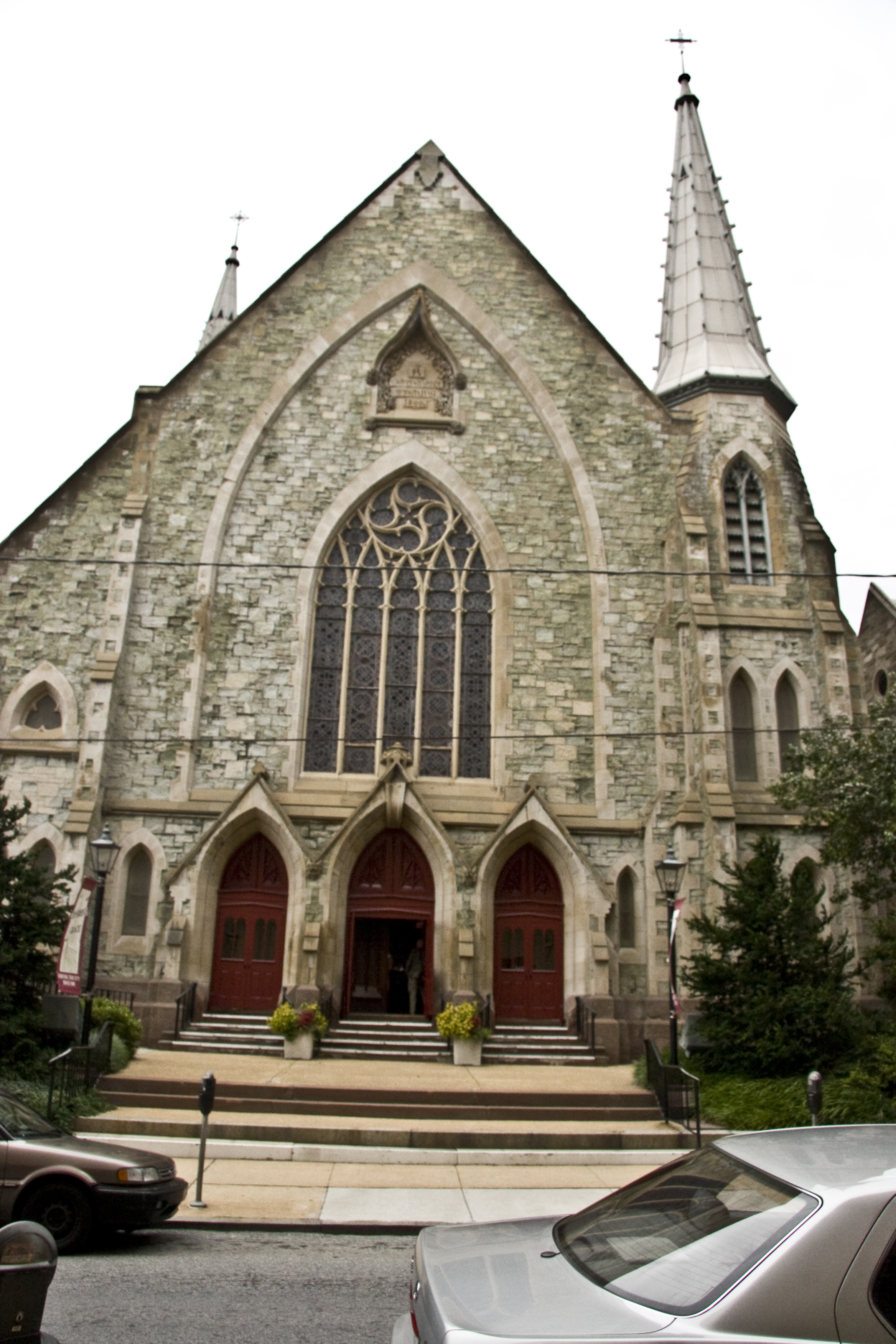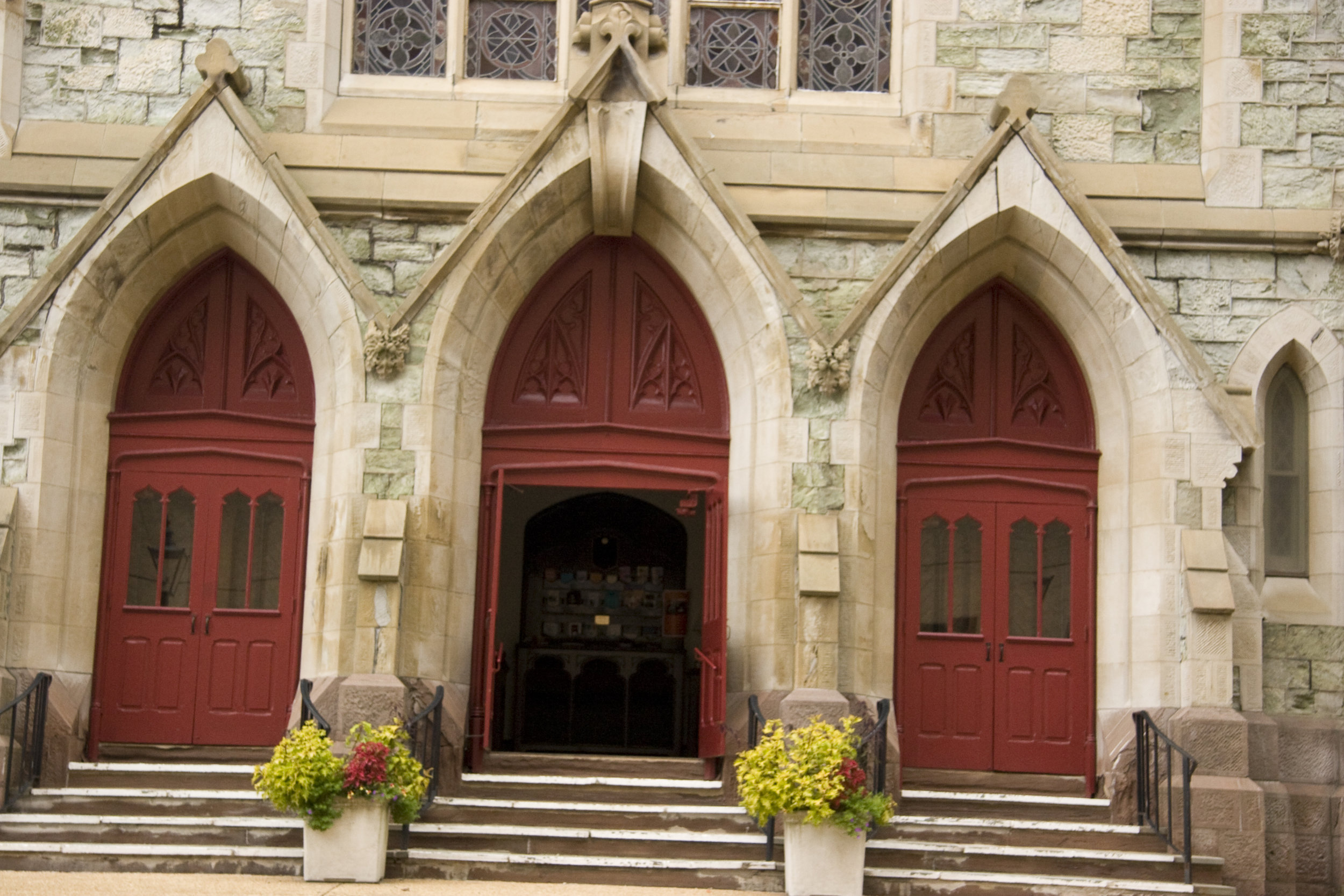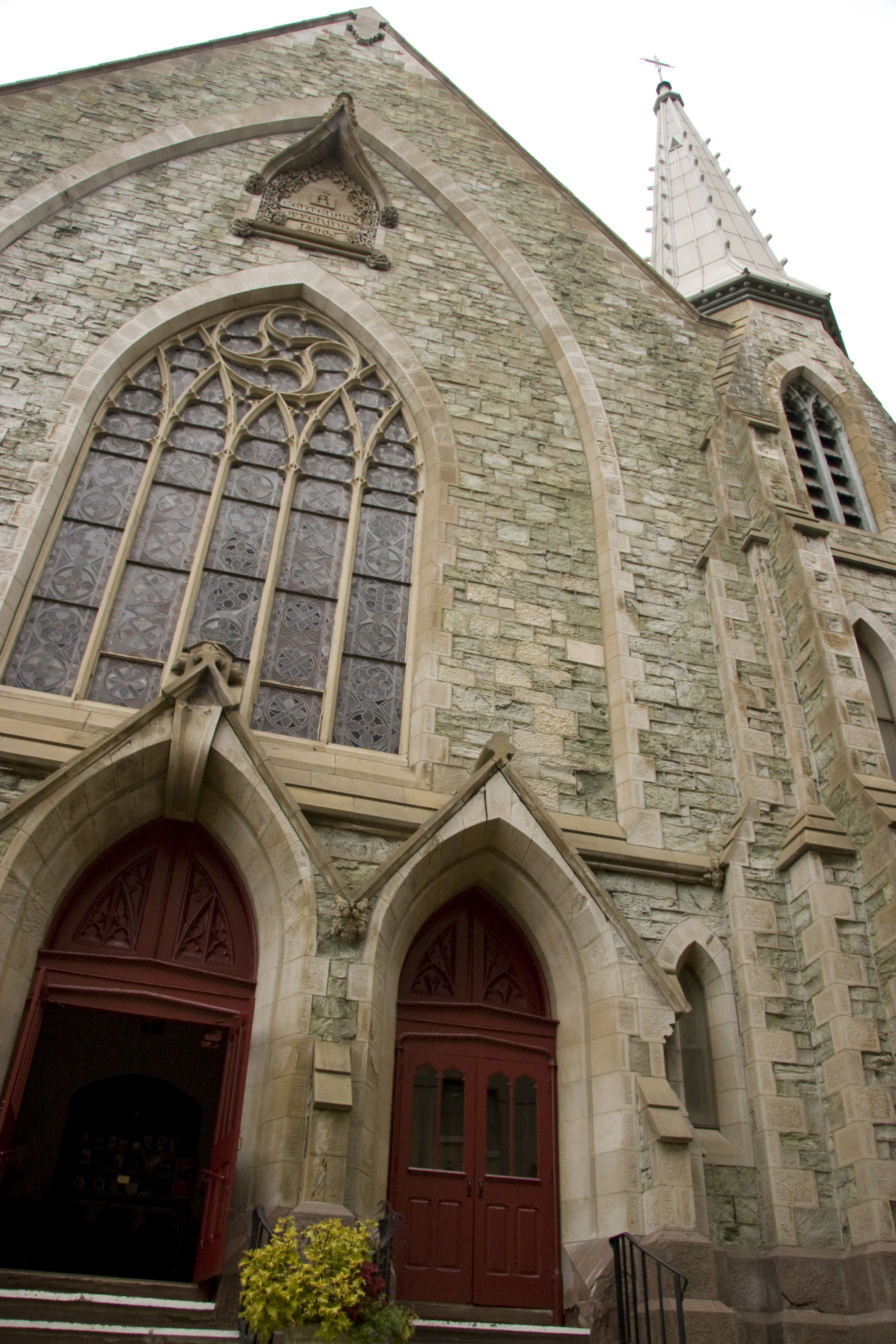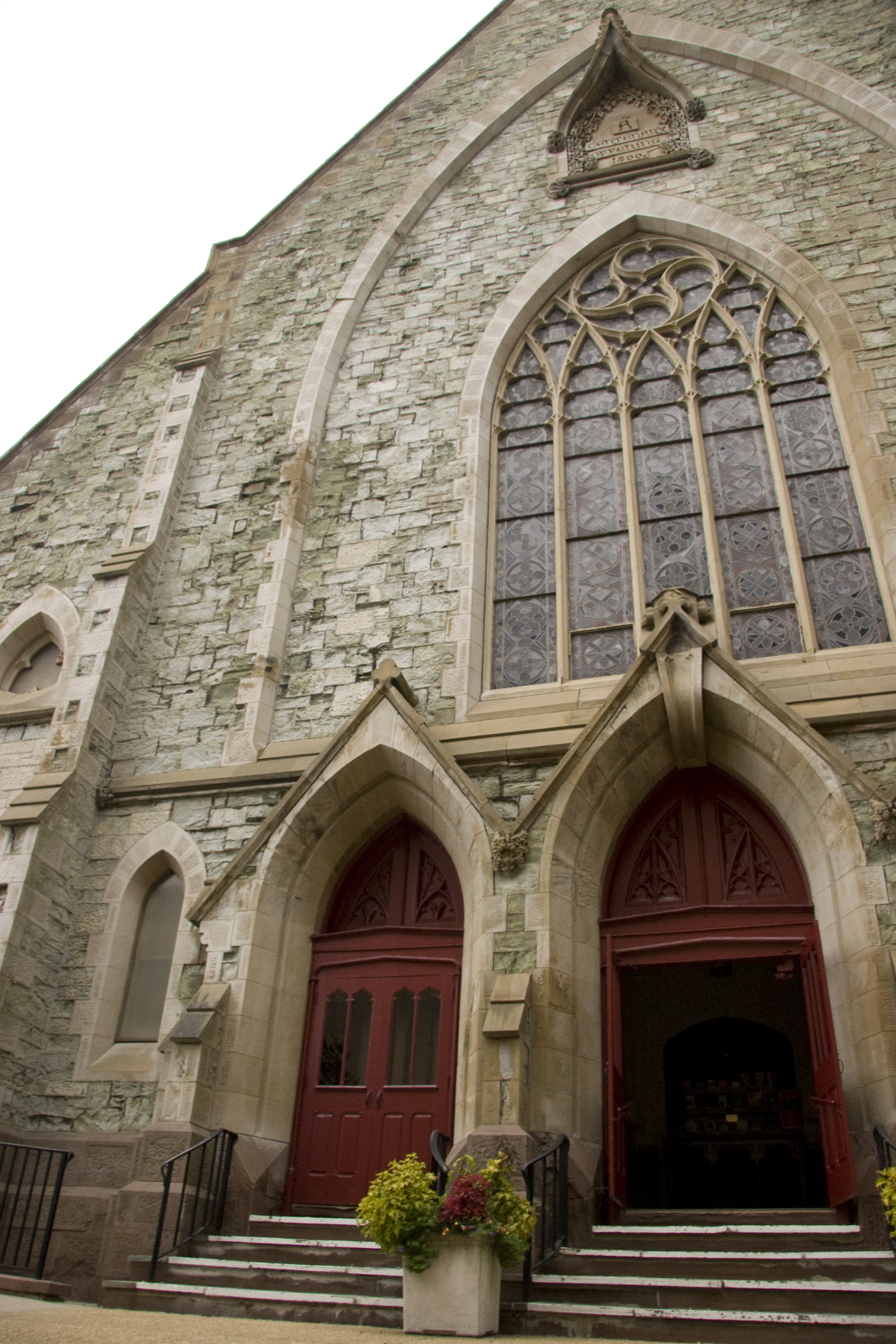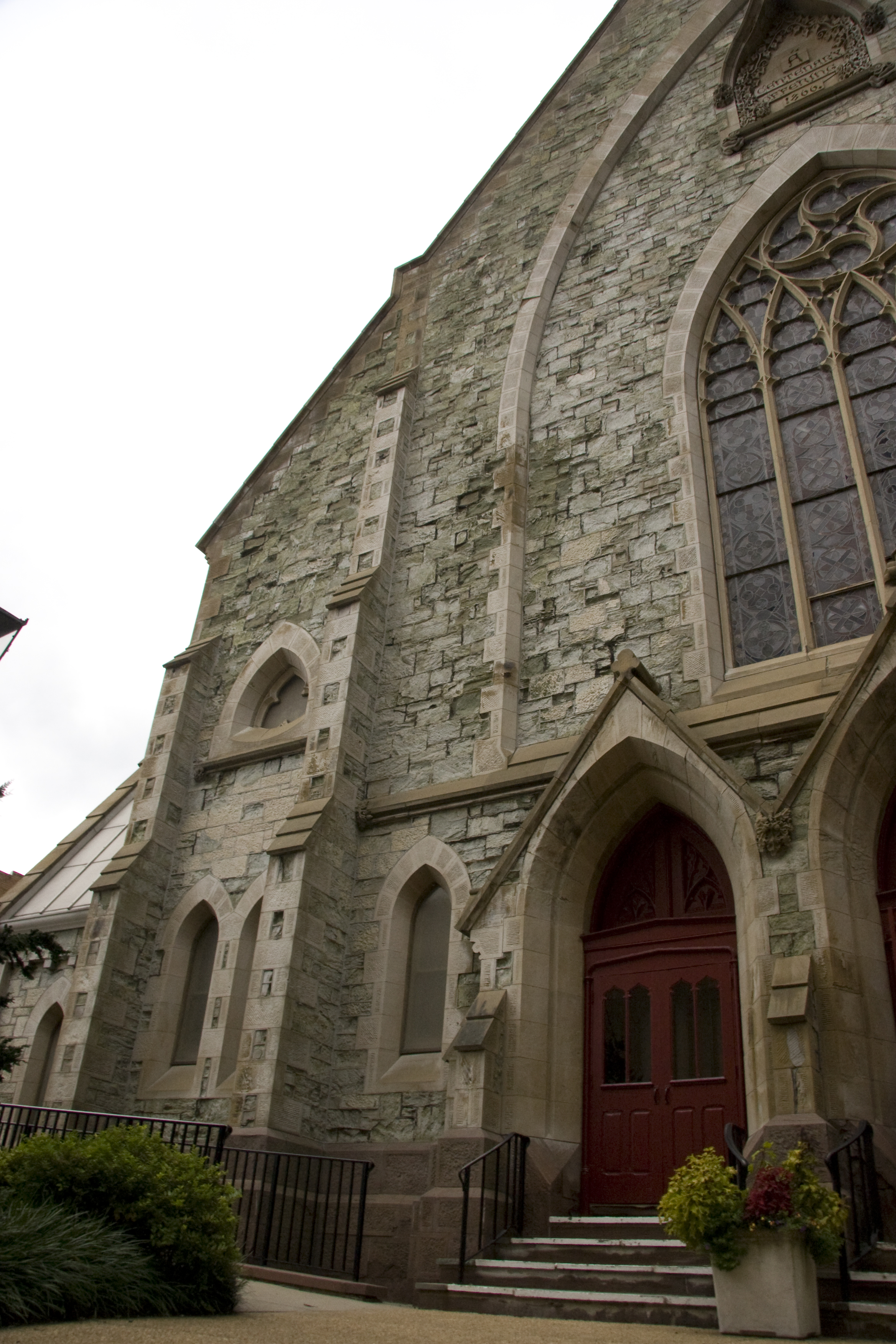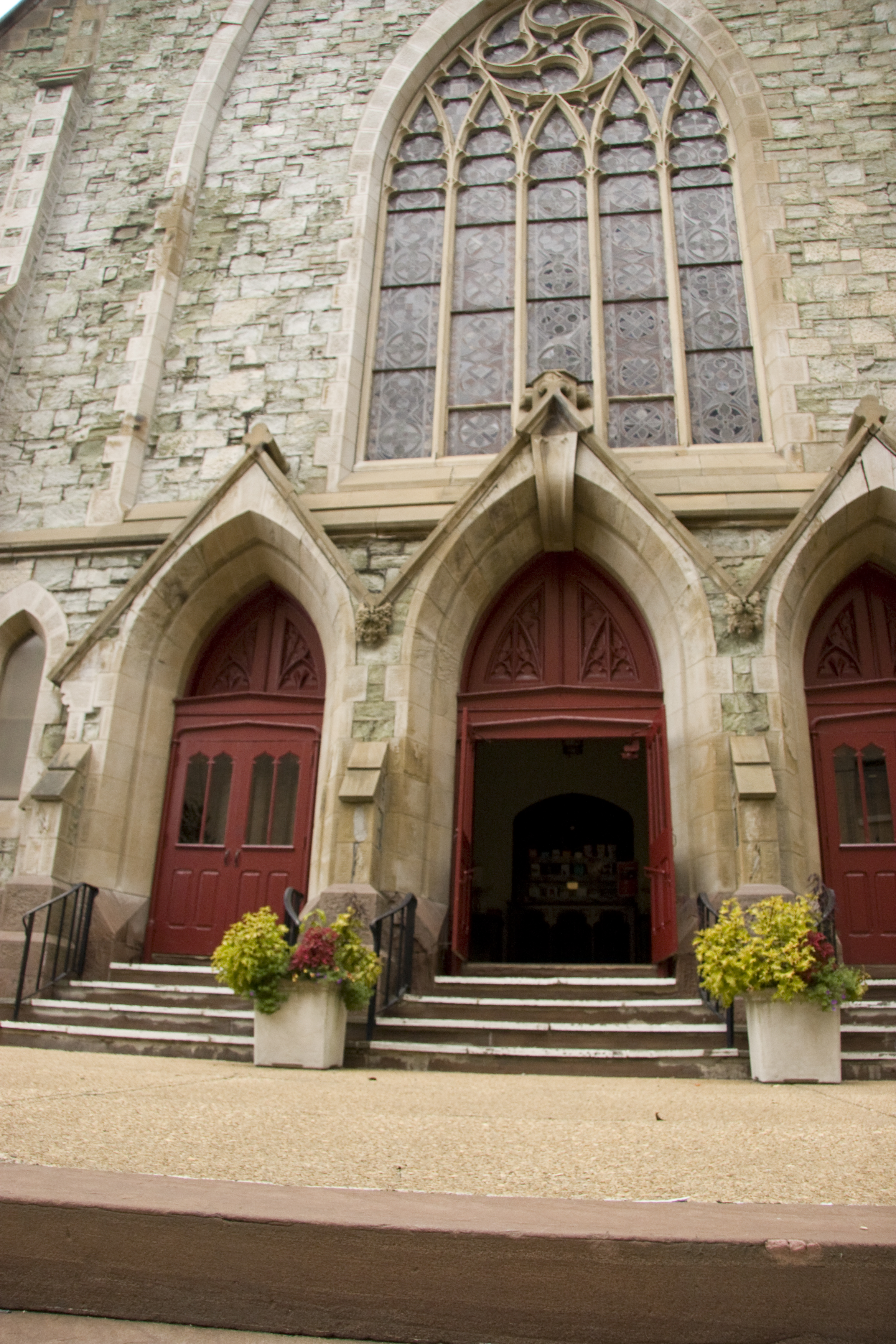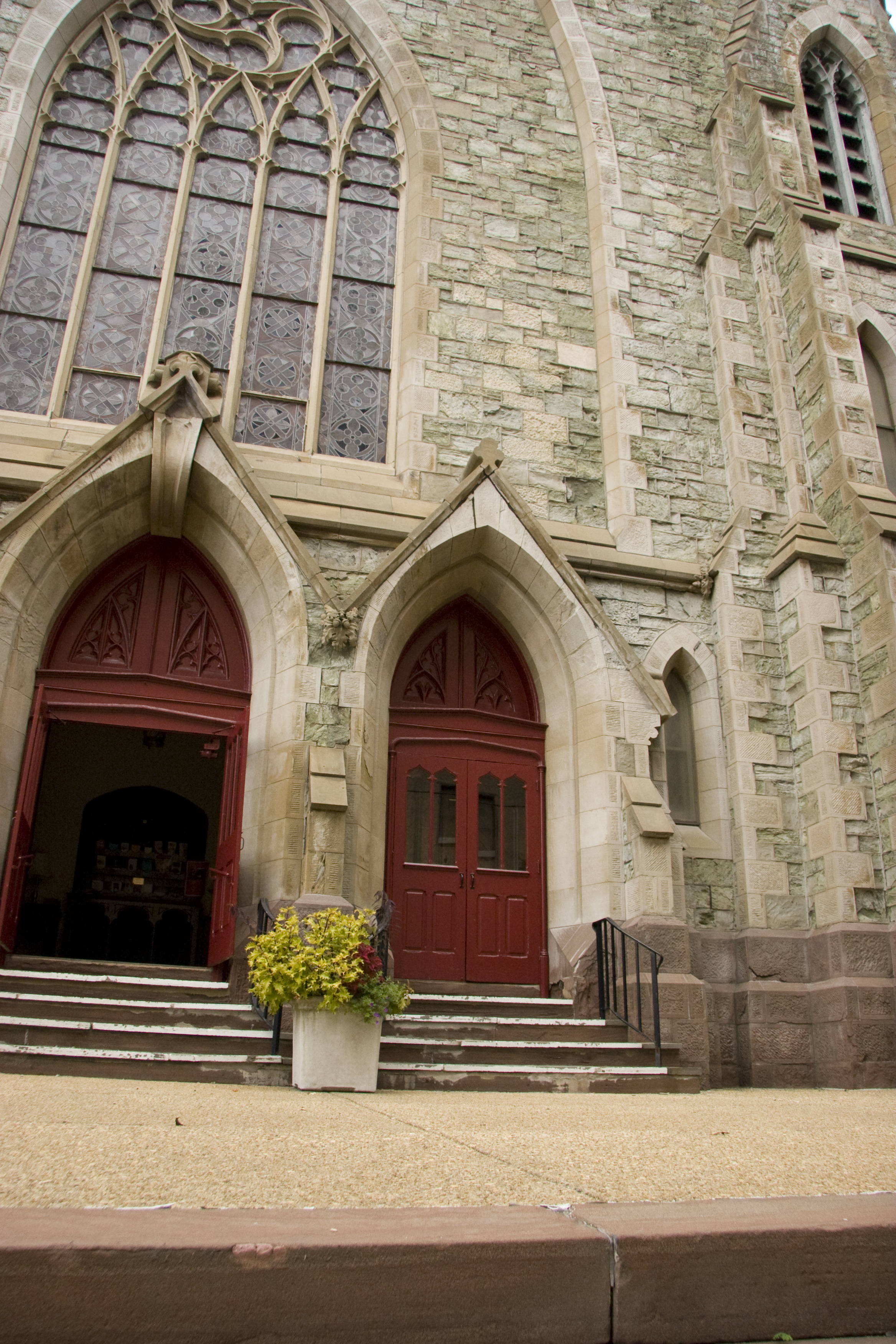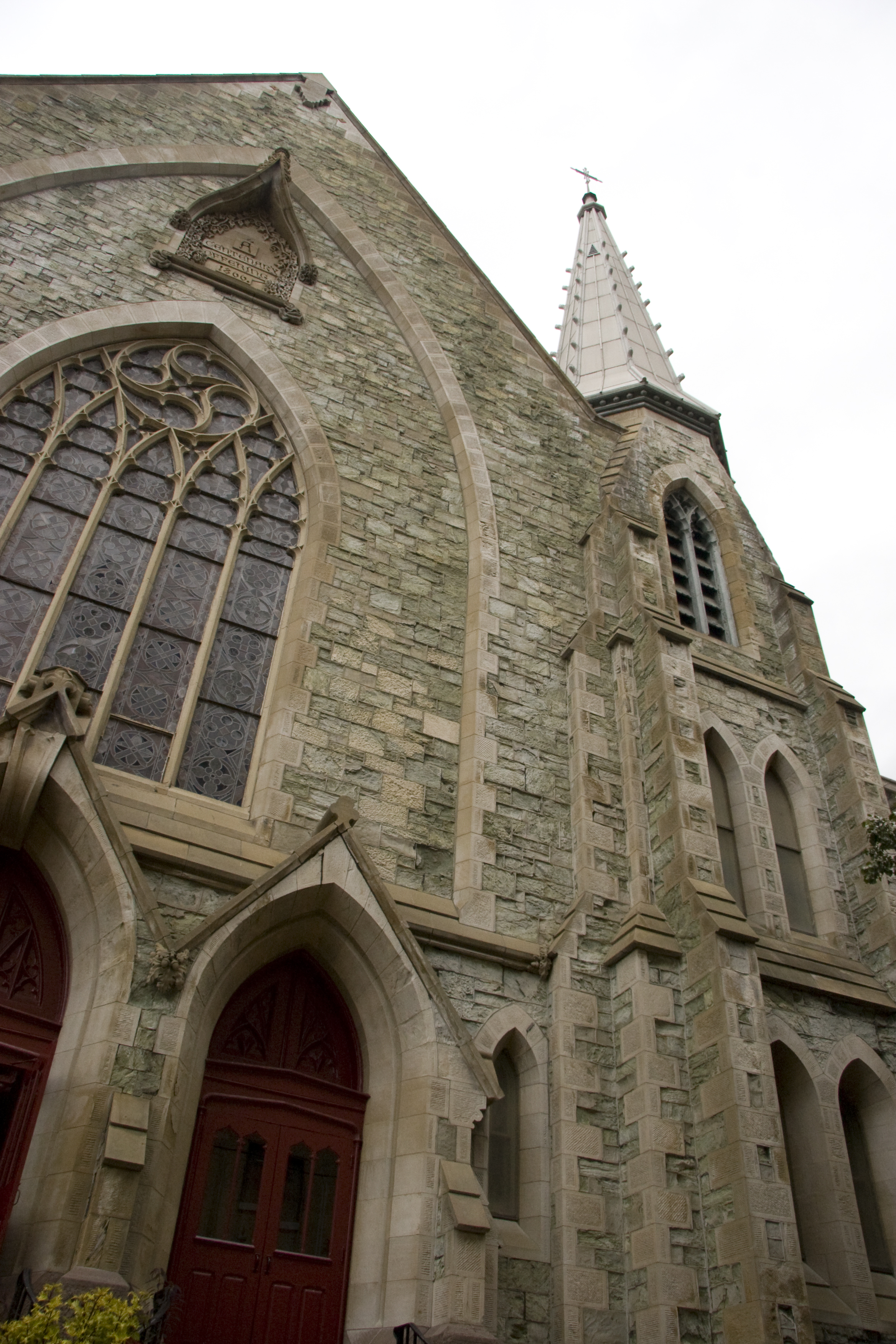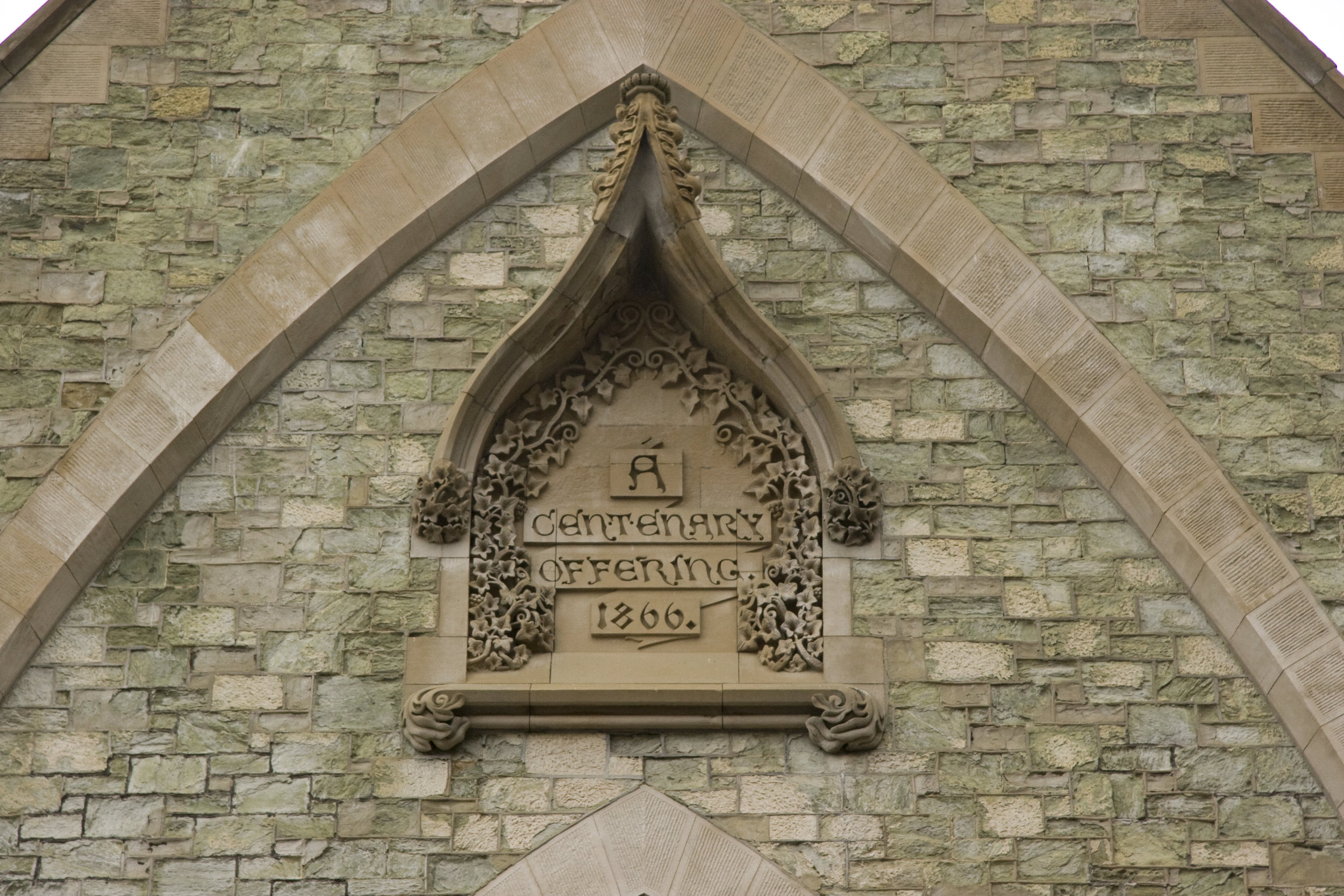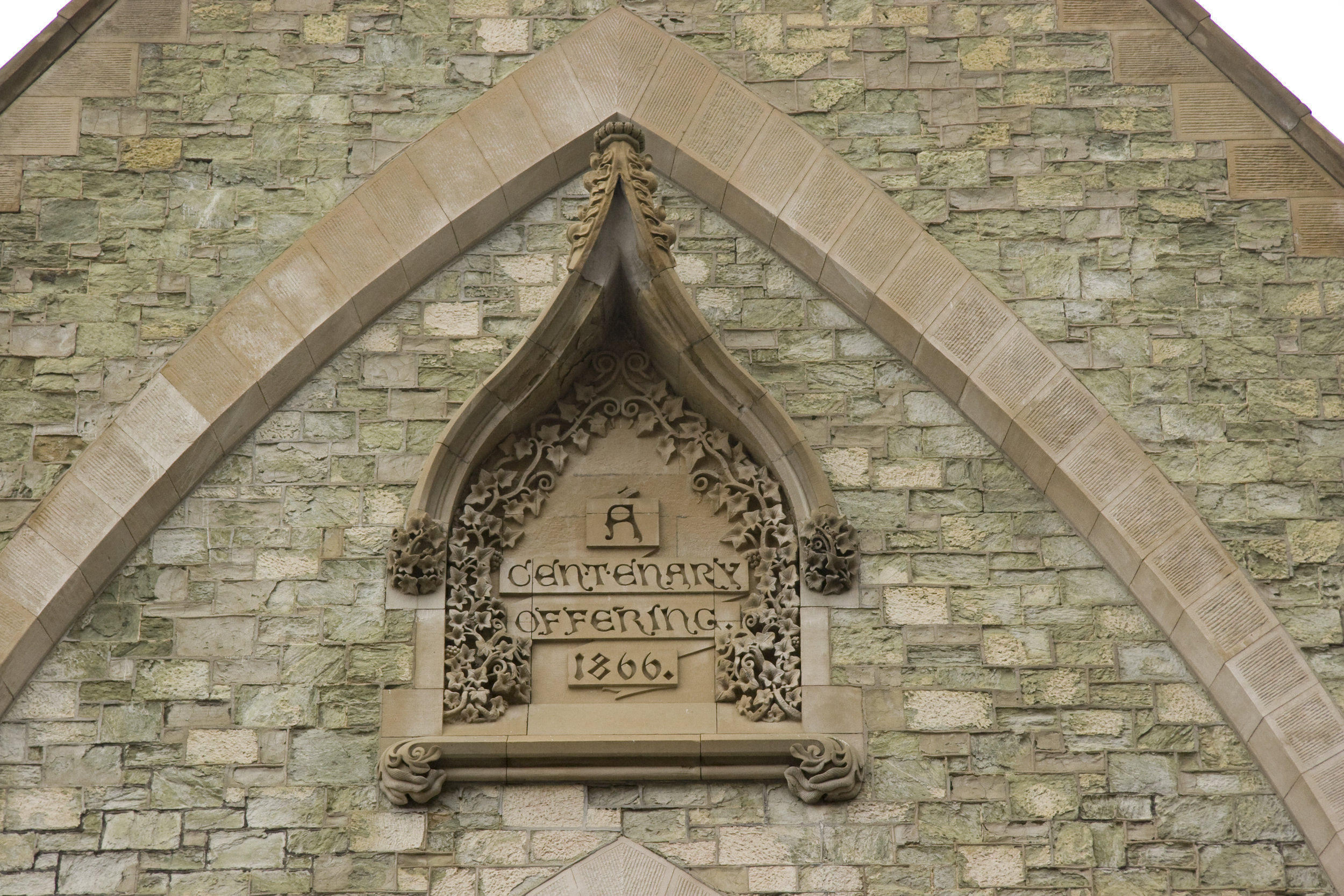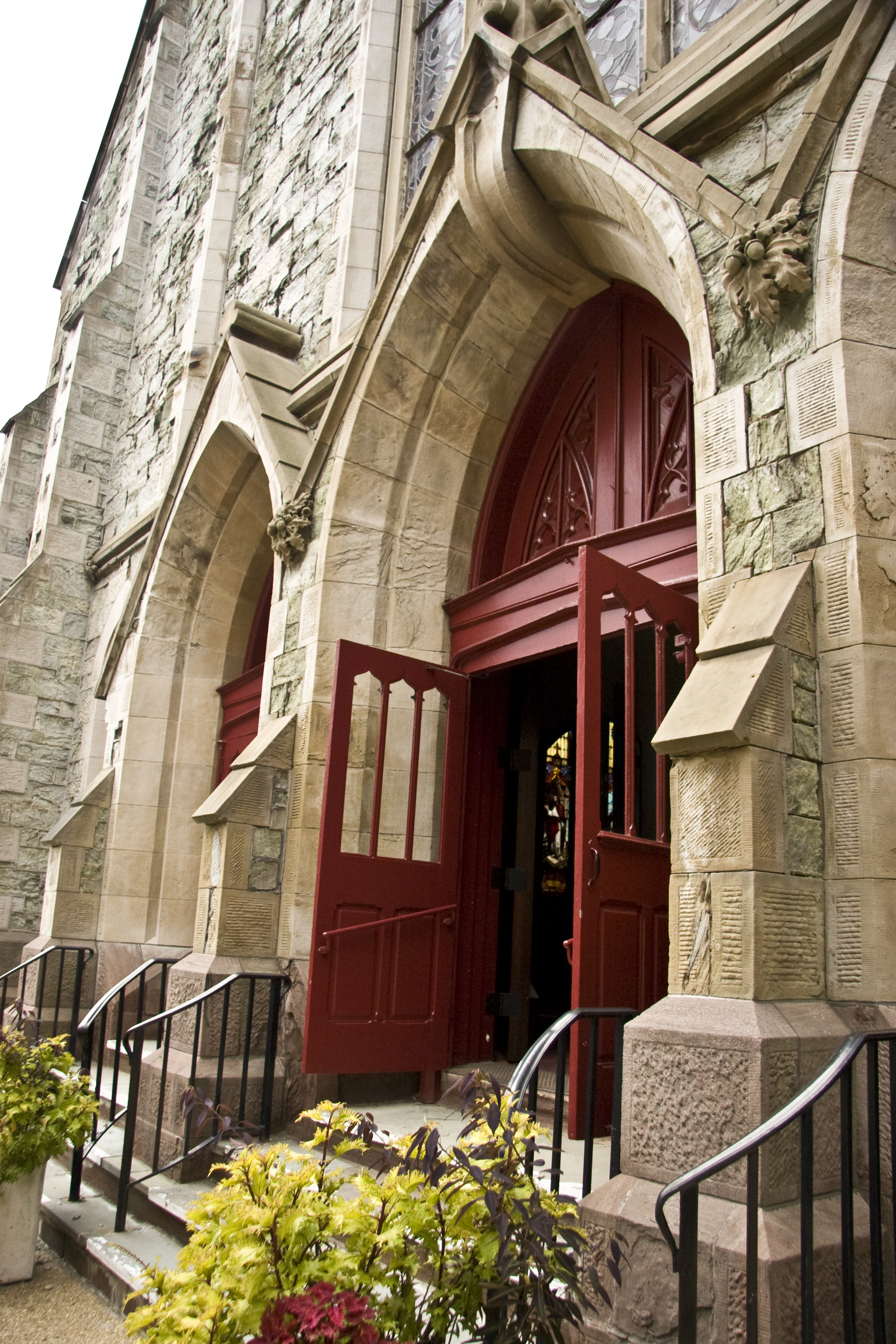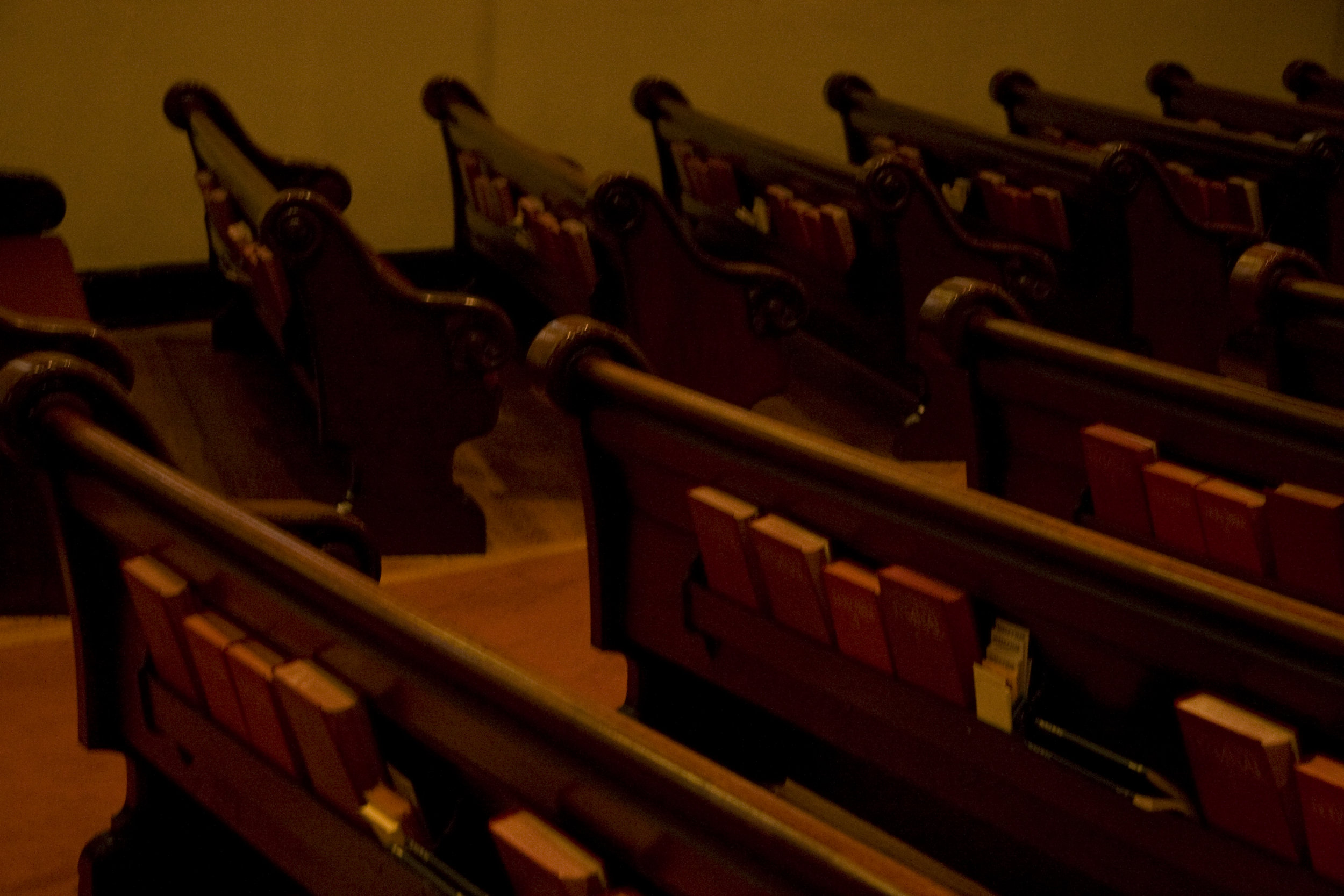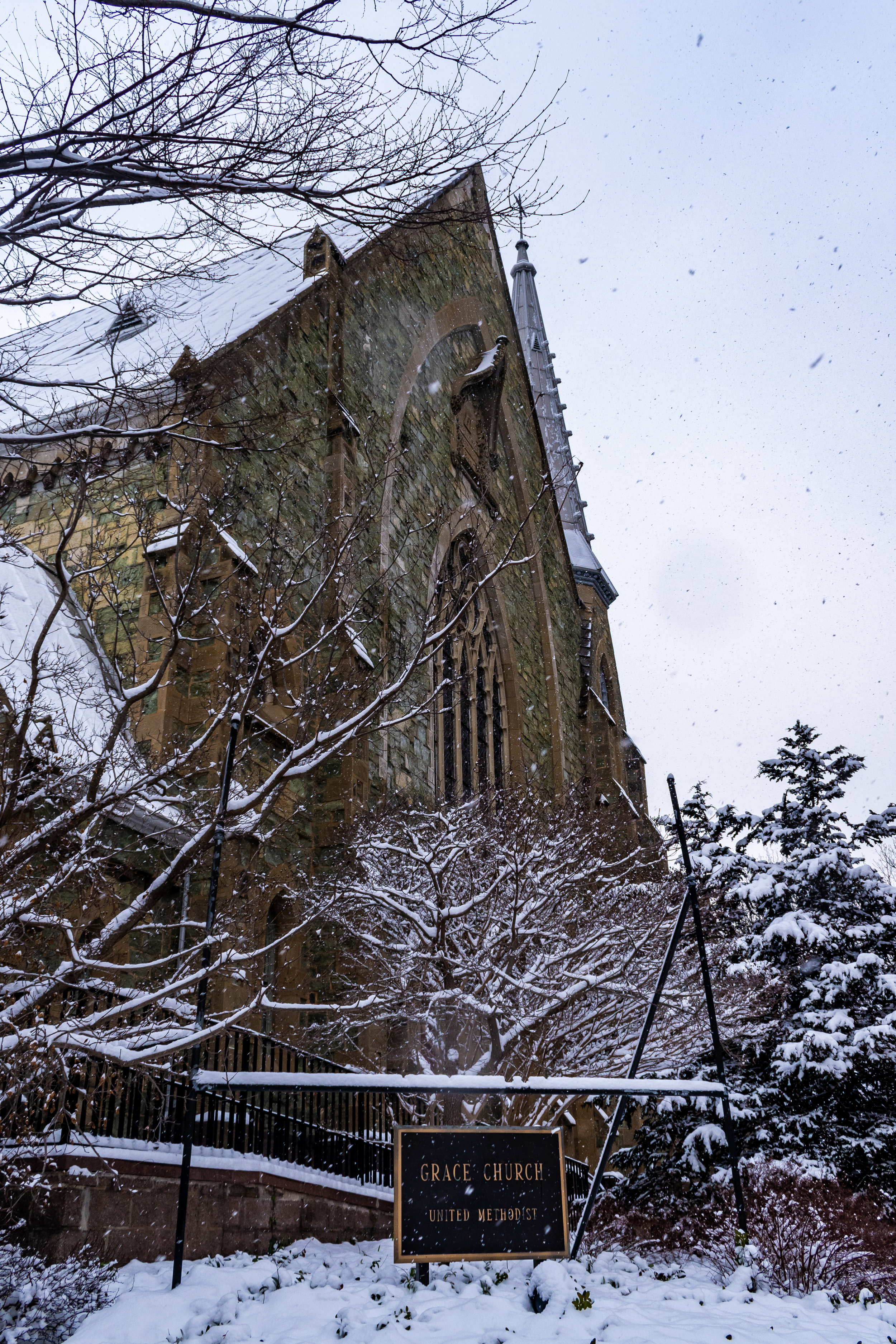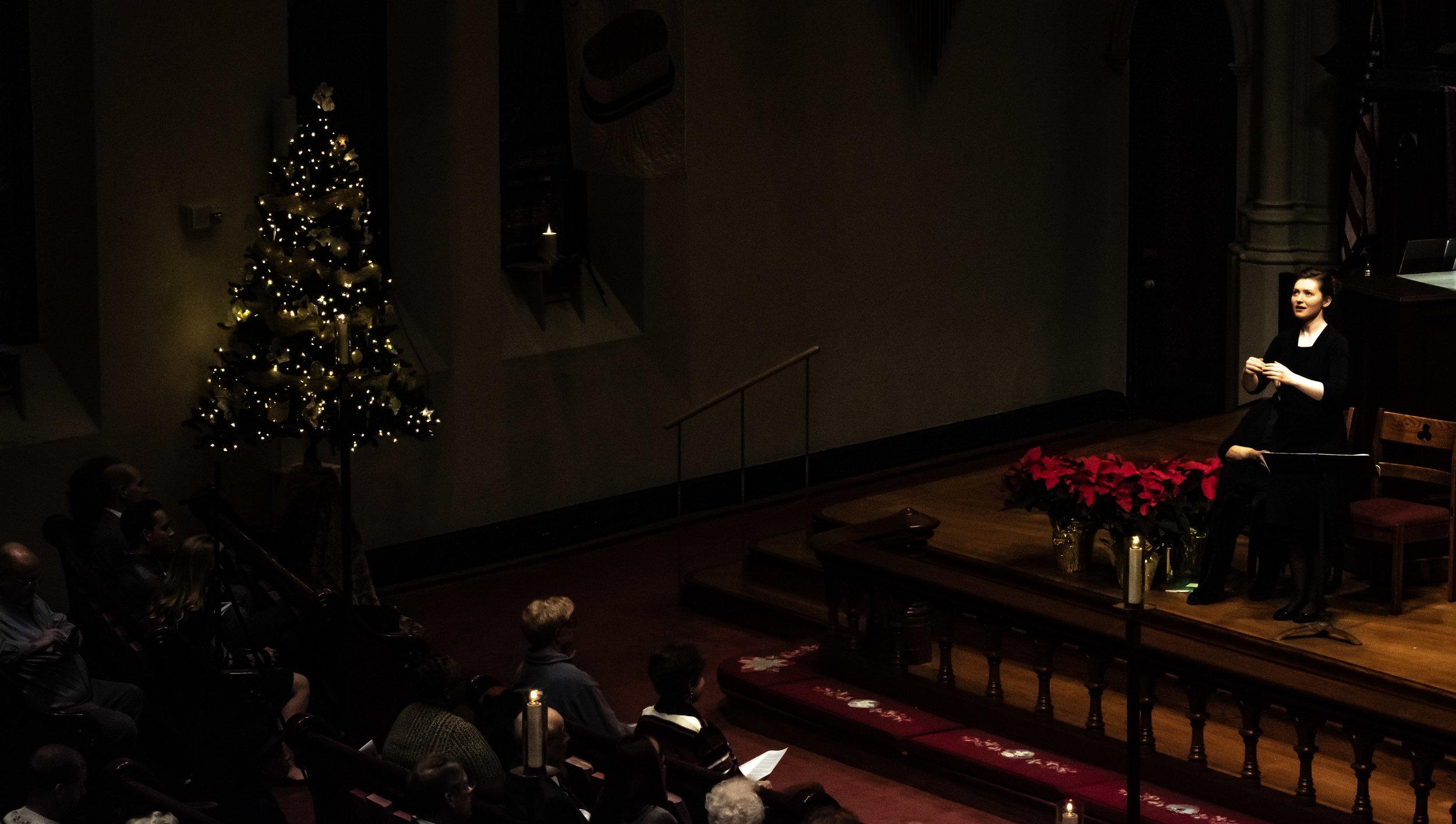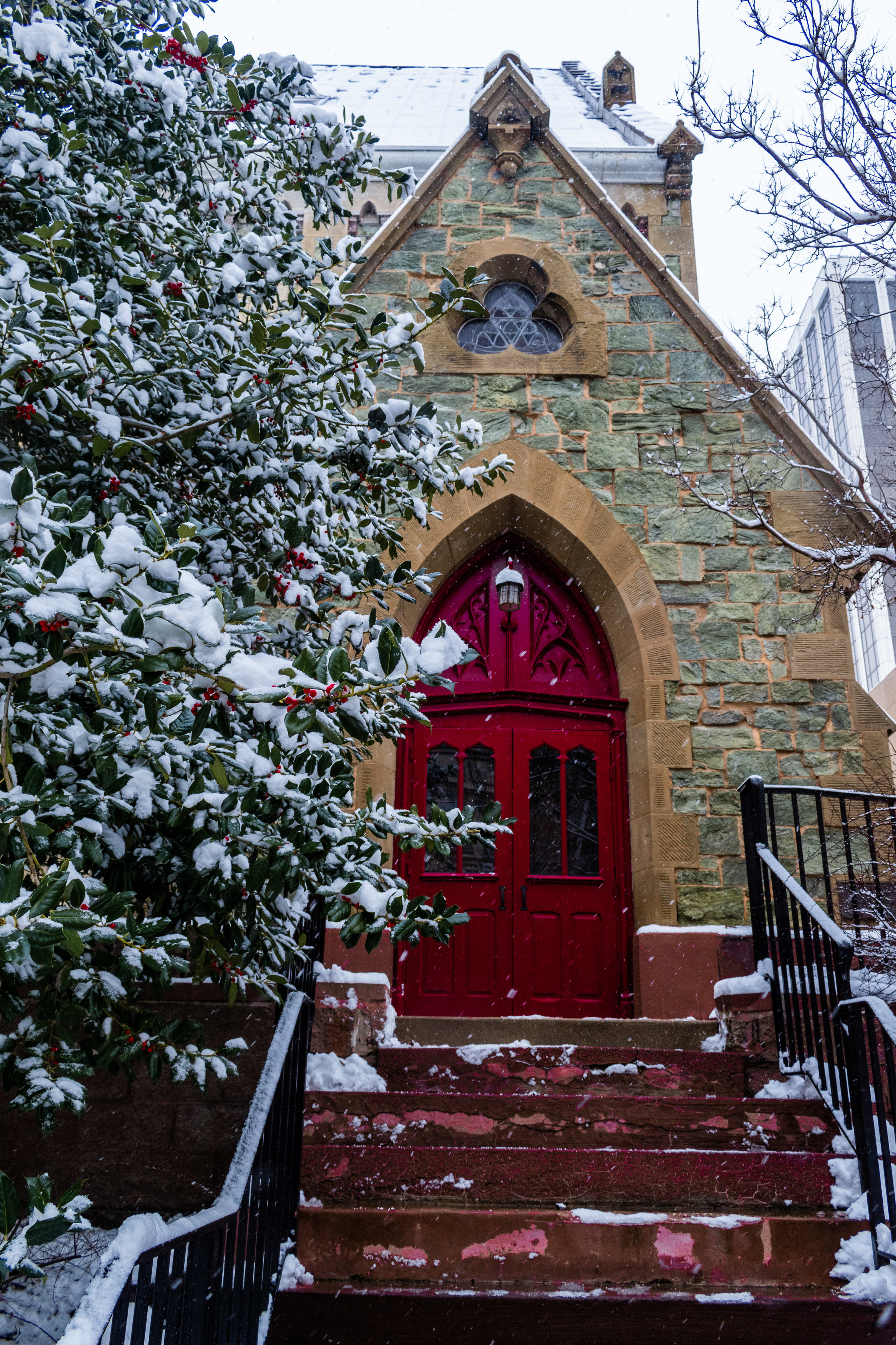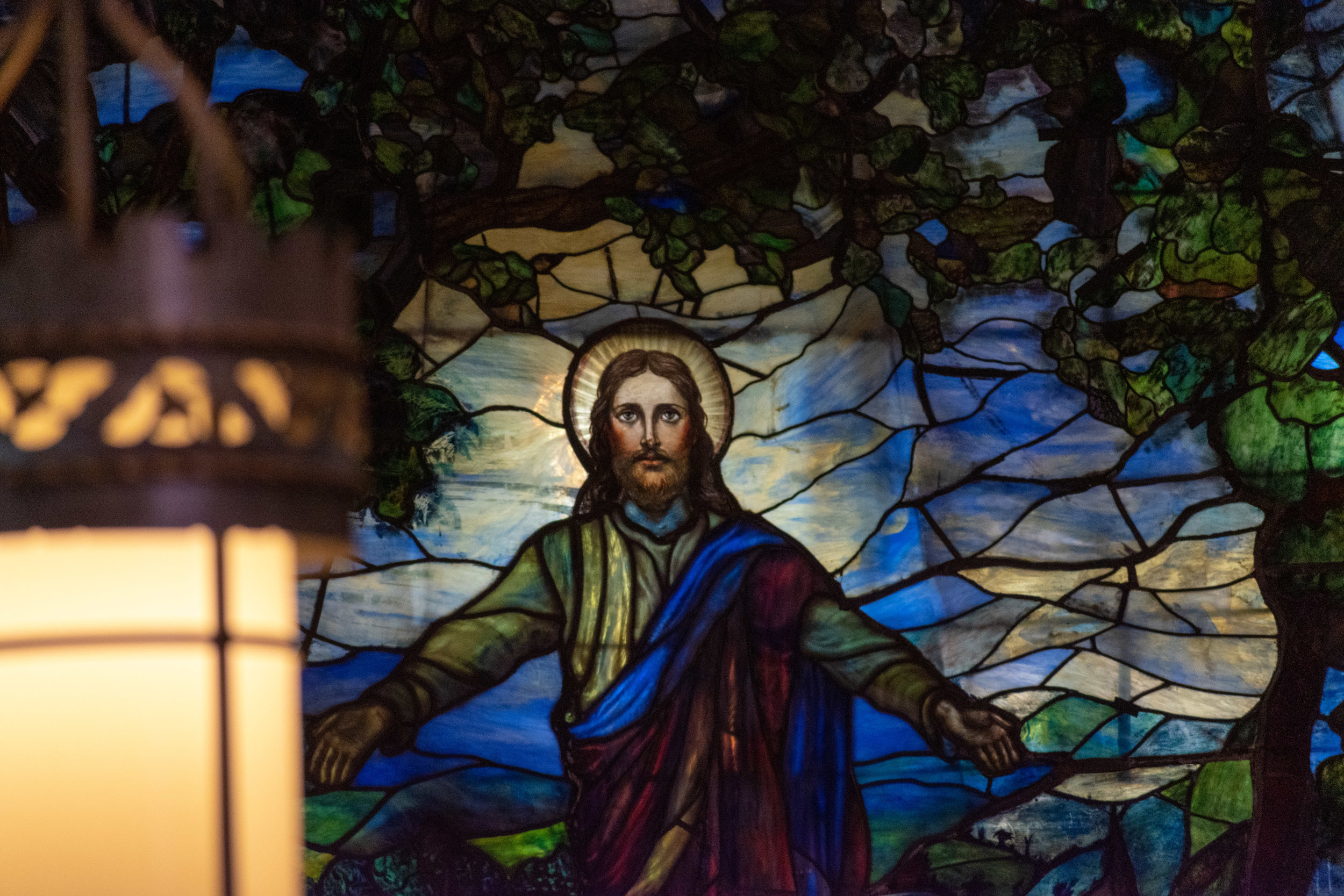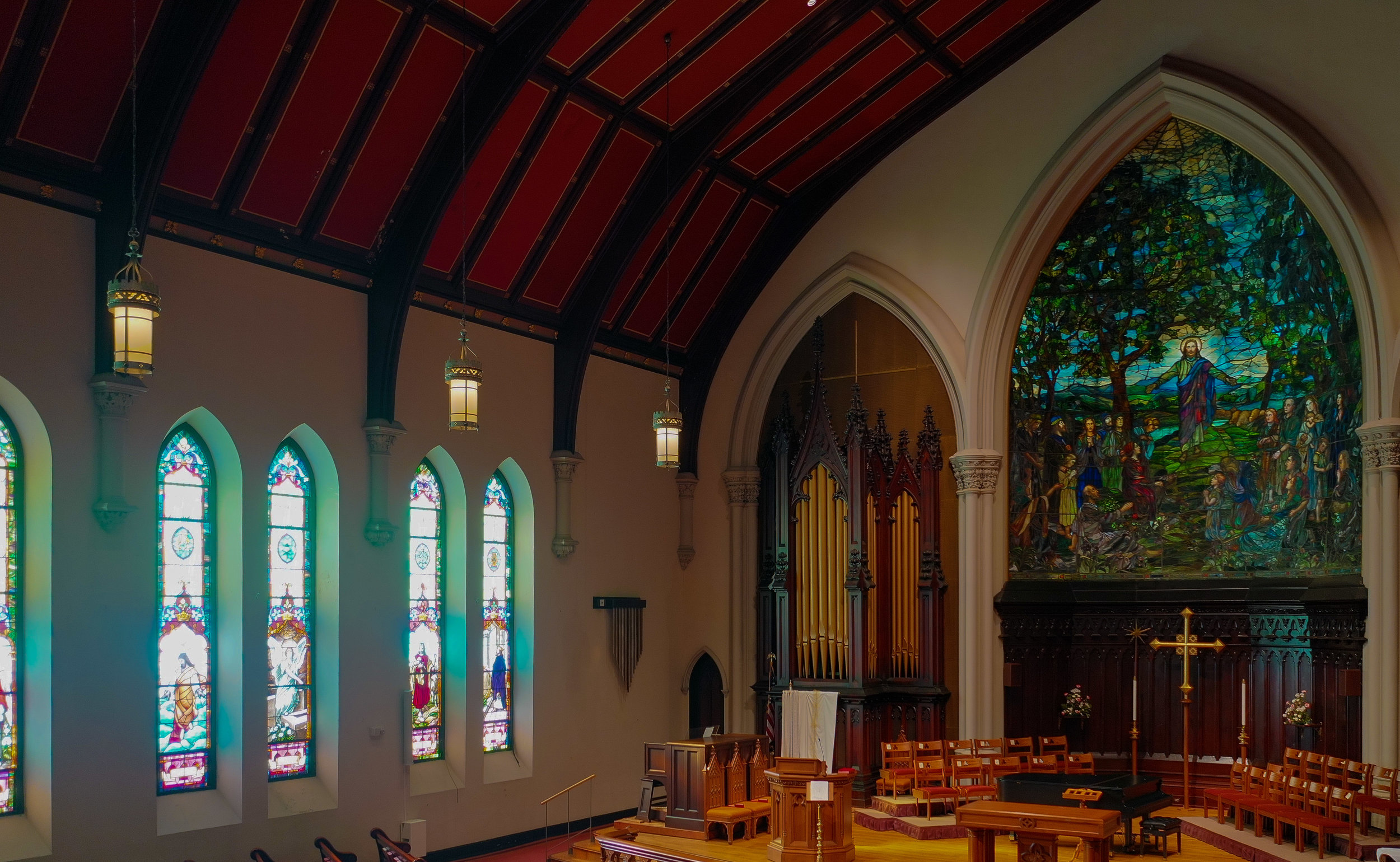Grace Church United Methodist
Grace Church: Three Centuries of Tradition
During the Civil War, members of St. Paul’s Methodist Church in Wilmington, DE proposed to launch a mission church on the edge of the city. The purchase of the land where Grace Church stands was in Oct. 1864. The cornerstone was laid in 1865 and the chapel was completed on Mar. 25, 1866. The main sanctuary was dedicated Jan. 1868. The population of Wilmington in 1865 was approximately 30,000. Grace Church was built at the city’s limits, within blocks of pasture land. The lot and the church were originally projected to cost $80,000. The church planners enlarged the plan to include a two-story annex behind the sanctuary. The final plan cost $200,000.
Raising of the 9th Street bell tower, c. 1866
This view from Ninth and West Streets looks toward the chancel end of the sanctuary under construction. Church documents relate that local schools let children out of class so that they could come and watch the workman raise the tower framework.
Grace Church from 9th Street in 1910
Grace Church, Wilmington, has High Victorian Gothic Revival exterior constructed of green serpentine sandstone quarried in Chadds Ford with a base course of brown stone from New Brunswick, New Jersey. The façade is on the National Registry of Historic Places. Soot from the use of coal for heat in the city stained the stonework by the early 20th century and would lead to the current deterioration exhibited in the early 21st century.
Grace Church has two towers. The tallest tower, shown above, is on Ninth Street nestled between the two storey annex & the main sanctuary. It supports a carillon of bells.
Bassett Hall, circa 1997
The parsonage was built in 1870 of the same green serpentine stone that was used in the construction of the church. Known as Bassett Hall, it was converted to an office site for church mission in the 1970s. In 1998, it was razed and consequently a community playground was erected there.
Grace Church purchased the neighboring residence at 903 West Street in 1910 for office and meeting space. On its front steps, this picture shows the trustees and stewards of Grace Church at the time.
An early photo of Grace Church, Wilmington. Features include: a triple arch with recessed central niche, three lancet windows in the niche with a woodwork dado below, and organ pipes in one side arch and a large plaster filigree plaque of the Ten Commandments in the other side arch. The chancel is raised with a central pulpit facing three banks of pews.
Evolution of Grace Church’s Stained Glass
Geometric designs and leaf motifs were the predominant elements of the early phase of High Victorian Gothic Revival, reflecting the prevailing Protestant aversion to figurative images that appeared Papist.
The West Street façade window tracery is original to the Thomas Dixon design.The stained glass work dates from the 1870s and may have been based on Dixon’s design.
The small arched window is the only other window at the Ninth Street balcony level and is called The Trefoil Window. Its floral grisaille pattern, known as a rose pattern, is similar in style to the large facade window. It is a tri-corner Oculus, with a Tudor Rose design. The window design symbolizes the Trinity.
Dixon’s original concept for the front of the church was a rectangular niche in the central arch with Gothic woodwork below and three lancet windows above. They were in an overall stained glass pattern of diagonals with a circular medallion of the dove in the upper central window. How they were lit is a question for research & conjecture since the space behind the windows is a dark hallway and electricity had not yet been invented.
Around 1913-1914, the memorial windows were installed (see below for more details about memorial windows). These windows are pairs of lancet windows along the north and south sides of the sanctuary. They replaced windows dating from the 1870s.
The figurative panels were chosen from catalogs of designs produced by artists of the era. They were inserted into an overall stained glass scheme that included decorative elements, symbolic medallions and a memorial plaque.
Gambrill window during 2019 Feast of Carols
On February 24, 1924, “Come to Me,” a beautiful new stained glass window, including figures by Charles Mente, was dedicated. Its main designer was H.B. Hankinson, a former artist with the Tiffany studio in New York. One of the largest stained glass windows in United States, measuring approximately 22 x 26 feet and containing over 18,000 pieces, this window was donated by the Gambrill family, prominent benefactors of the era.
The next major renovation of Grace occured in 1940 when the sanctuary was renovated by Rambusch of New York to reflect prevailing trends in church design. The renovation included a raised pulpit and lectern.
The 1940 renovation included a blessing inscription in gold leaf on the rear wall. This blessing was retained & framed in the 1995 renovation.
In 1995, the sanctuary underwent a major renovation designed by Vigo Rambusch.
The 1995 renovation included a three-step raised platform measuring nearly 25 x 50 feet designed to maximize flexibility for worship, drama, dance, and concerts.
The scope of the renovation included adding a center aisle and canting the pews.
Grace Church added a two-storey entrance pavilion on Washington Street, offering a reception area, elevator, new restrooms and a large parlor. A two-story connector was added between the church house and the narthex on West Street.
2001 Pavilion Entrance Renovation
View of 1866 annex from the skylight of 2001 entrance pavilion
With respect for its rich heritage, Grace Church looks forward and upward toward a promising tomorrow.
Memorial Windows
These twenty-one windows were installed along the north and south walls of our main sanctuary from 1913 to 1914. The figurative panels were chosen from catalogs of designs produced by artists of the era. They were inserted into an overall stained glass scheme that included decorative elements, symbolic medallions and a memorial plaque.
1.) The Rev. William J. Stevenson Window. Medallion: Ten Commandments. “The Sermon on the Mount.” Based on Heinrich Hoffmann’s picture. Jesus teaches the crowds in the Sermon on the Mount.
2.) The Henry S. Goldey Window. Medallion: The Bible. “The Resurrection Morn.” Based on the painting by W. Bouquereau. Christ, the conqueror of death.
3.) The Rev. Thomas F. Plummer Window. Medallion: Cross on the Solid Rock. “Suffer Little Children to Come Unto Me.” Based on the painting by Heinrich Hoffmann. The Master shows His compassion for the children.
4.) The William H. Billany, Mary A. Billany Window. Medallion: Greek letters Chi Ro. “The Angel with the Trumpet.” Based on a work by William Reith of Philadelphia. A symbol for victory.
5.) The Thomas B. Smith Window. Medallion: Seven-branch Candlestick. “Christ Walking on the Sea.” From the painting by Heinrich Hoffmann. Jesus walks calmly upon the surface of the sea to the disciples.
6.) The Sarah A. Wood Window. Medallion: Dove. “Ruth Gleaning.” Based on the painting by Louis Bruck-Lajos. Ruth gleaning in the fields of Boaz.
7.) The Henry Evans Window. Medallion: Cross and Bible. “Christ the Sower.” Based on a painting by George Hahn. Christ is portrayed as the Sower in His own parable.
8.) The Robert F. Robinson, Maria J. Robinson Window. Medallion: Ark of the Covenant. “The Angel of Mortality.” From the painting by M. Erlanger. Symbolizing the 90th Psalm.
9.) The Col. Enoch Moore Window. Medallion: Noah’s Ark. “Christ on the Road to Emmaus.” Based on the painting by Heinrich Hoffmann. Jesus appears to two travelers after His resurrection.
10.) The Rev. Wesley C. Johnson Window. Medallion: Grapes. “Moses Teaching the Law.” Based on a painting by Julius Schnoor. Inspired by Exodus 35:1 - Moses assembled all the congregation of the Israelites and said to them: These are the things that the Lord has commanded you to do.”
11.) The John Moore Scott Window. Medallion: Dove. “Christ’s Benediction.” “Peace I leave with you; my peace I give to you. I do not give to you as the world gives. Do not let your hearts be troubled, and do not let them be afraid.”
12.) The Henry F. Pickels Window. Medallion: Harp. “Psalm 116: 17.” Based on the picture by Julius Von Carolsfield. King David plays the harp standing upon a palace balcony.
13.) The S. Susanna Butler, Elias P. Butler Window. Medallion: Torch and Wreath. “The Good Shepherd.” Based on the painting by Bernard Plockhorst. Christ portrayed as the good shepherd.
14.) The Leander F. Riddle Window. Medallion: Lilies. “The Angel at the Tomb.” Based on the picture by Bernard Plockhorst. The angel announcing Christ’s resurrection to the three visiting Marys.
15.) The William M. Field Window. Medallion: Alpha and Omega.“The Ascension.” Based on a painting by Gottleib Bierman. The Savior rising into Heaven.
16.) The Anna J. Wheeler Window. Medallion: Harp. “The Guardian Angel.” Based on the picture by Heinrich Hoffman. Artist’s concept of the Guardian Angel.
17.) The Robert B. Wheeler Window. Medallion: I.H.S. “Come Unto Me.” Based on the picture by Koehler Villiandis. Christ extends an invitation to “all who labor and are heavy laden, and I will give you rest.”
18.) The Rebecca W. Scott Window. Medallion: Cross. “Madonna.” Based on the painting by Cuno Von Bodenhausen. Artist’s contemporary interpretation of the Virgin Mary and infant Jesus.
19.) The William H. Curry, Margaret A. Curry Window. Medallion: Anchor. “Christ Knocking at the Door.” Based on the painting by Heinrich Hoffman. Christ knocks and awaits admittance, to have hearts be opened and let the King of Glory enter.
20.) The Mr. and Mrs. Charles S. Robb Window. Medallion: Sheaf of Grain. “The Widow’s Mite.” Based on the painting by Gustav Dore. Based on Christ’s praise of the widow’s offering at the temple: “…she of her want did cast in all that she had.”
21.) The Mary Jane Darlington Window. Medallion: Light on Book. “The Light of the World.” Based on the painting by William Hoffman Hunt. The Savior knocks at the door of the human heart, holding a lantern of glory for those who heed the call.
